Posts Tagged: common loon


Loon Update July 12, 2024
I’ve made it out to check on two of our three loon families, and have heard reports from the third.
The Loch Lyme Lodge in Lyme will host me to present An Uncommon Look at the Common Loon in the evening of July 23, part of their Tuesday Night Cookouts. We’re still figuring exactly when I’ll present, as soon as we know, the details will be on their site: www.LochLymeLodge.com.
And, I’m busy getting ready for the League of New Hampshire Craftsmen’s Fair, August 3-11 at Mount Sunapee Resort in Sunapee, NH. I’ll be in booth 718, come on by and say hello. All the Fair details are on the League’s Site.
While I haven’t had a chance to visit the Westons, a friend reports they’re doing well with the one chick. And, mom seems to be hanging around.
The Eastons lost their first clutch. All I know is the nest was empty when I visited. The water was up to the lip of the nest, I suspect the nest flooded. They’ve decided to try again and the chicks are due in the next few days.




The big news from the Middletons is that the Loon Preservation Committee biologists were able to band both adults over the July 4th Holiday. LPC tries to band something like 30-35 loons every year – almost 5% of New Hampshire’s loon population.
Banding lets them track individual loons over many years giving insights on behavior. Loons get four bands, one with a unique number from the United States Geological Survey (hey, it’s the government). Being unique, that number will forever definitively identify that bird. But the numbers on the USGS band are small and all but impossible to read unless you’re holding the bird. Loons aren’t big fans of being held, so they get three more bands with a mix of colors. If the bird is banded as a chick, the USGS band goes on the left leg, if they’re banded as adults, they wear it on the right leg. The color combination gives a nearly perfect way to identify the individual without having to catch it.
Along with banding the birds, they also take measurements to learn about size and weight along with blood to test for lead, hematocrit (concentration of red blood cells) and for infections including avian malaria.












I’m hoping to get out to check on the Eastons and Westons this weekend, weather permitting.
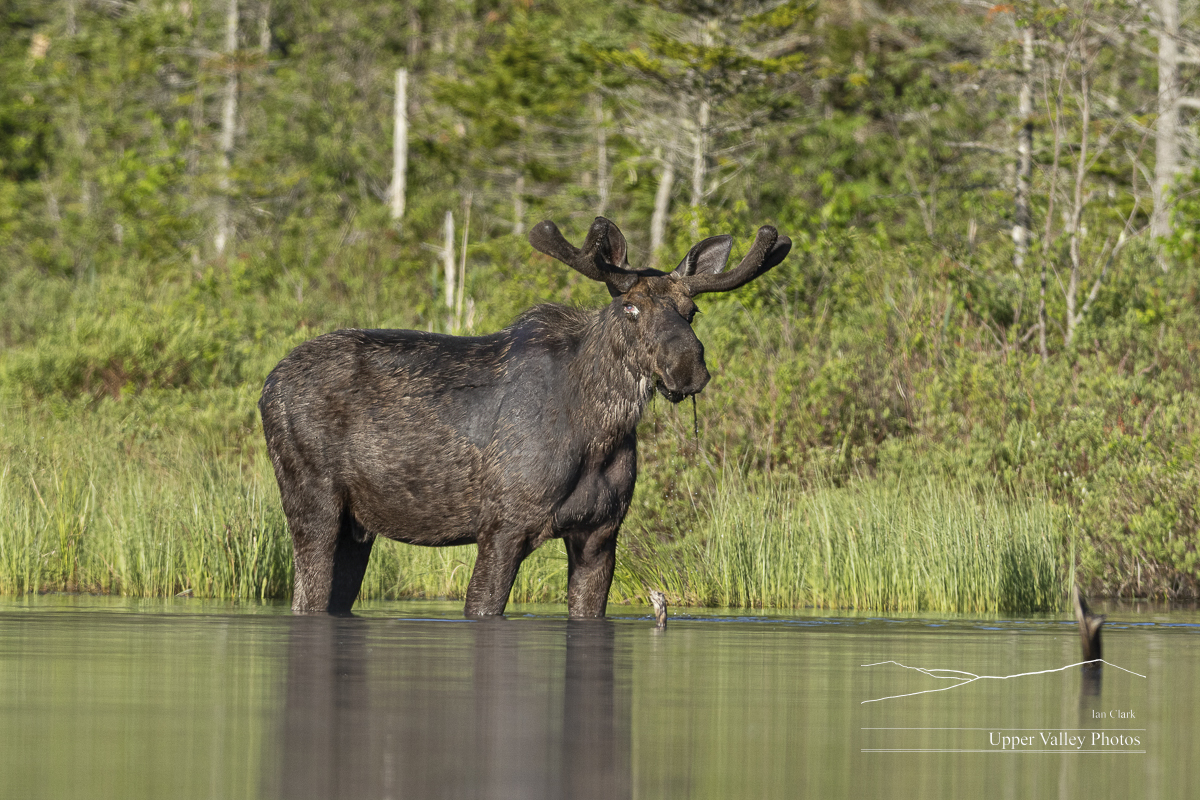
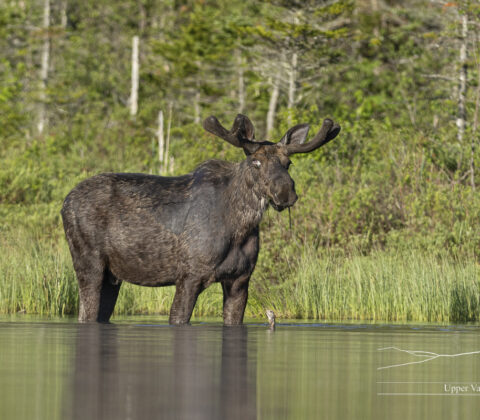
An Update on the Loons’ Ponds
The weather has kept me from getting out the last few days. The Westons should have chicks by now, the Middletons are due momentarily and the Eastons will be on their nest another couple weeks. Let’s see what else has been happening.
The Tenney Memorial Library will host me for my slideshow, An Uncommon Look at the Common Loon on Sunday, June 23, at 2:00 p.m. Free and open to the public.
Before we get to the ponds, take a look at what my game camera caught. This camera was set up in my blind watching one one of the fox dens. Guess I’m glad I took that morning off.
There’s less activity around the ponds. Most songbirds are on their nests or feeding chicks and not out and about to be photographed.
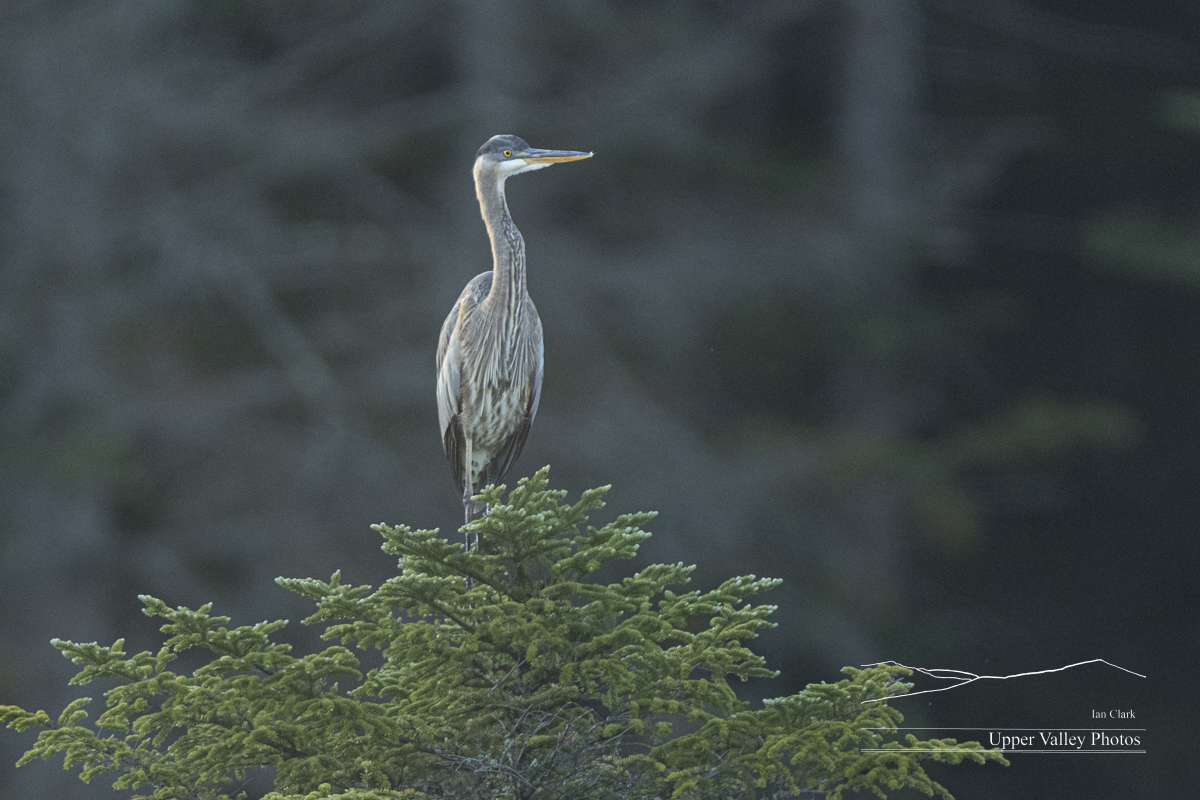


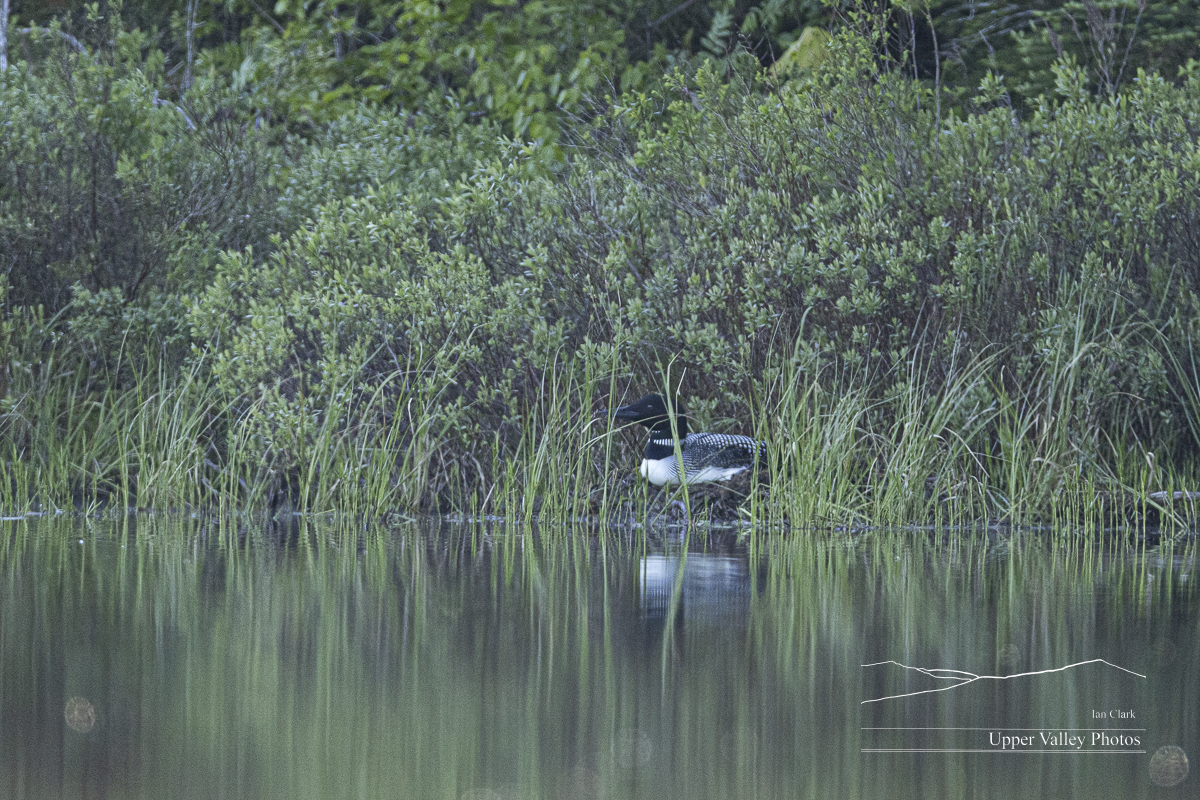
The resident osprey was interested in fishing in the relatively shallow water near the loons’ nest. The off-duty loon seemed to be moving out of the way for the osprey to dive. Professional courtesy or just not wanting to be nearby when the osprey dove? The osprey finally caught breakfast well down the pond.
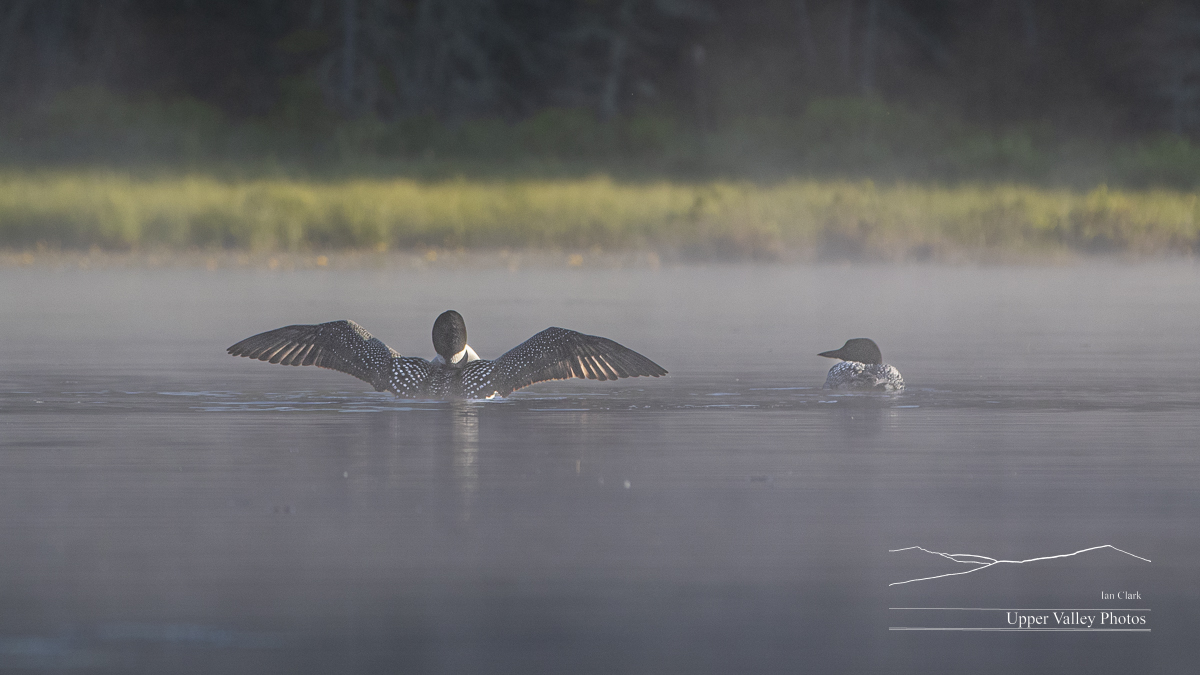
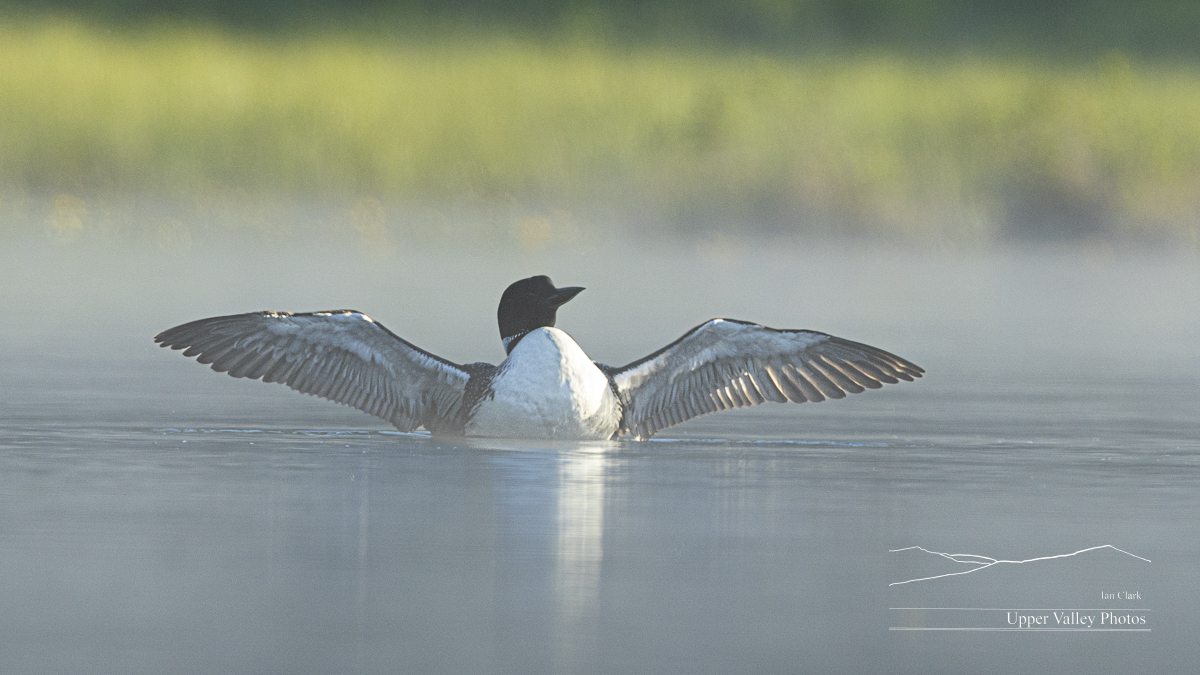
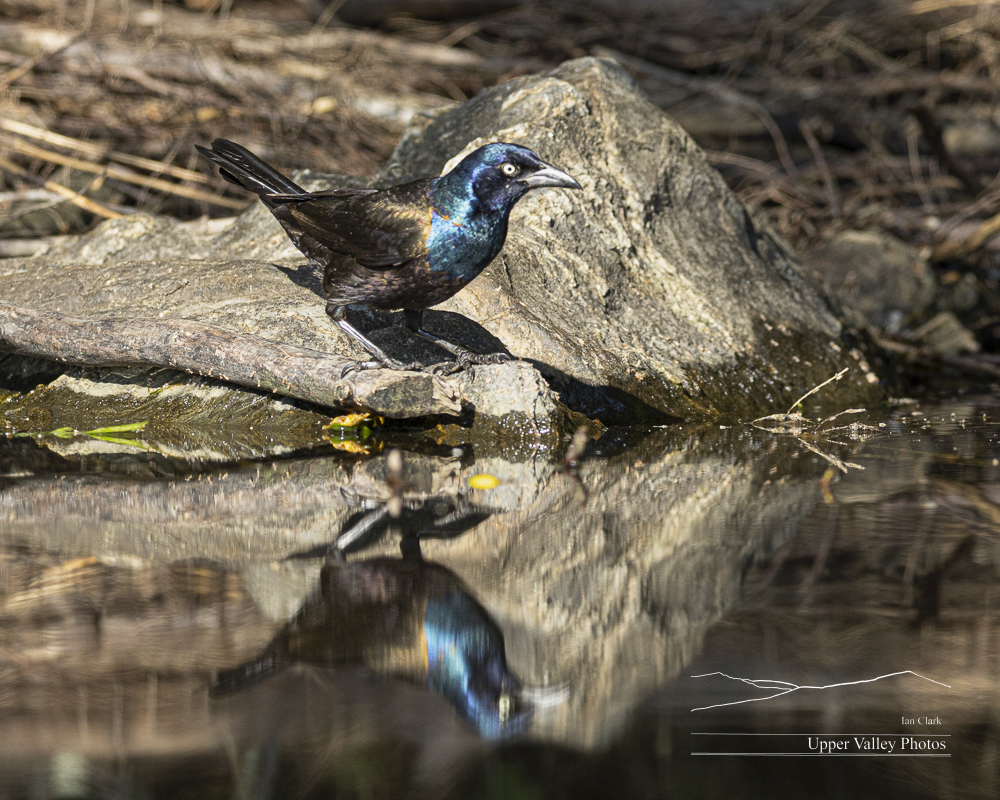
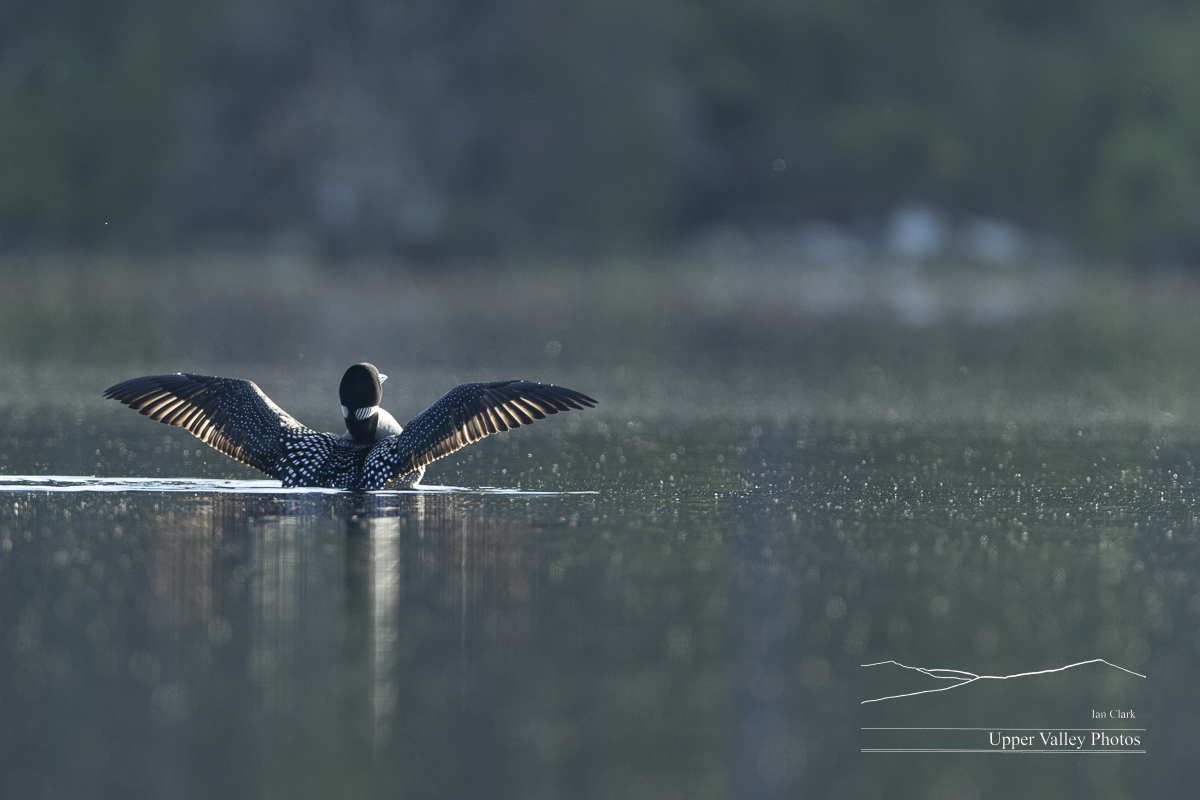
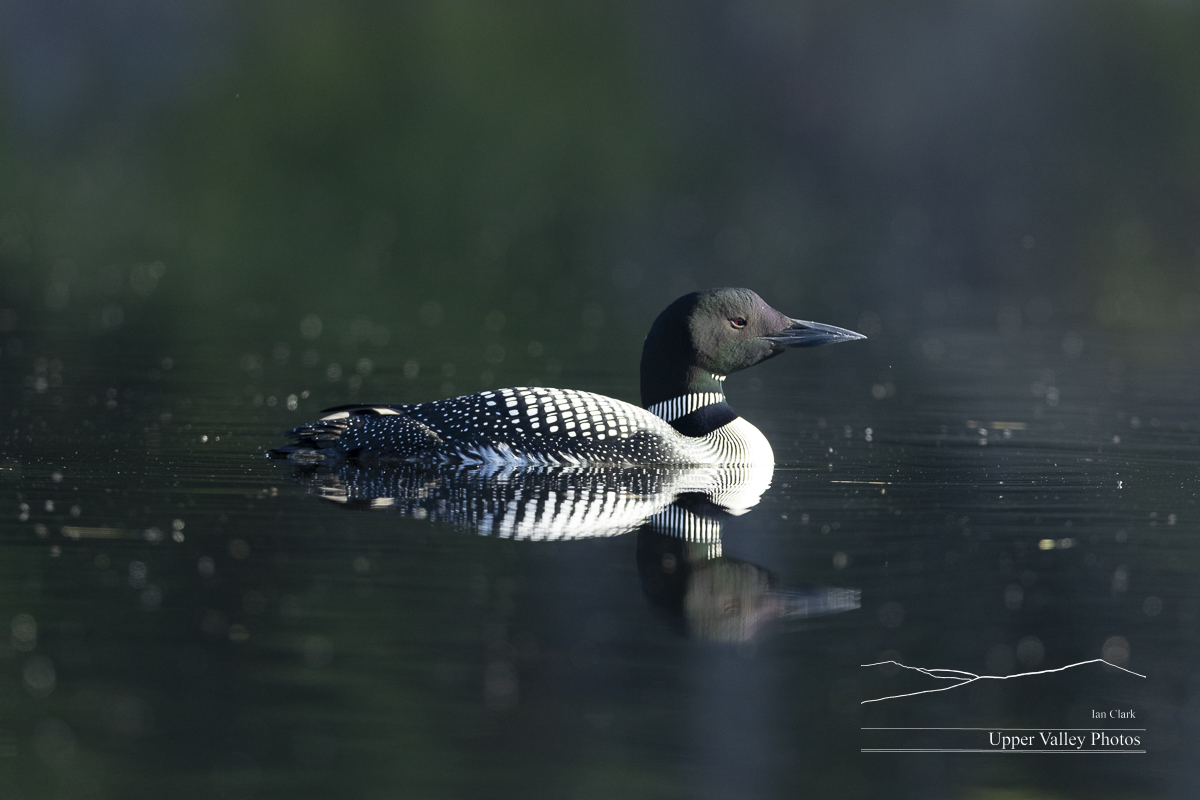
I’ll be out to check on the chicks as soon as the weather breaks. Check back soon to see how they’re doing.
Loon Chicks Now Nine Weeks Old
Thanks to everyone who stopped by to say hello at the League of NH Craftsmen Fair. Nice to know there are actually people out there looking at my blog. My next show will be the Fall Crafts at Lyndhurst in Tarrytown, NY September 8, 9 & 10.
The weather and my travels have kept me from checking in on the loons since July 24 when I found the Eastons fighting with a pair of intruders challenging them for the pond. Sunday morning dawned without rain and only a light breeze. I headed back to check on the Eastons.

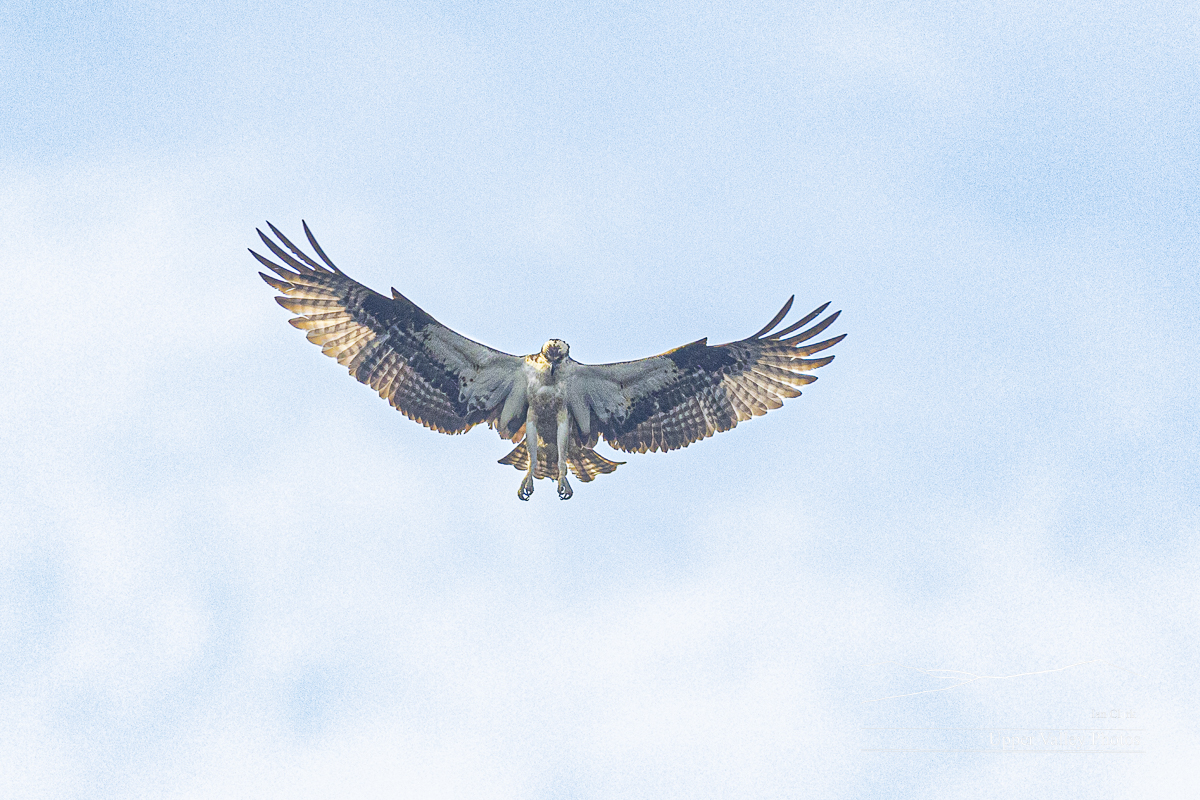
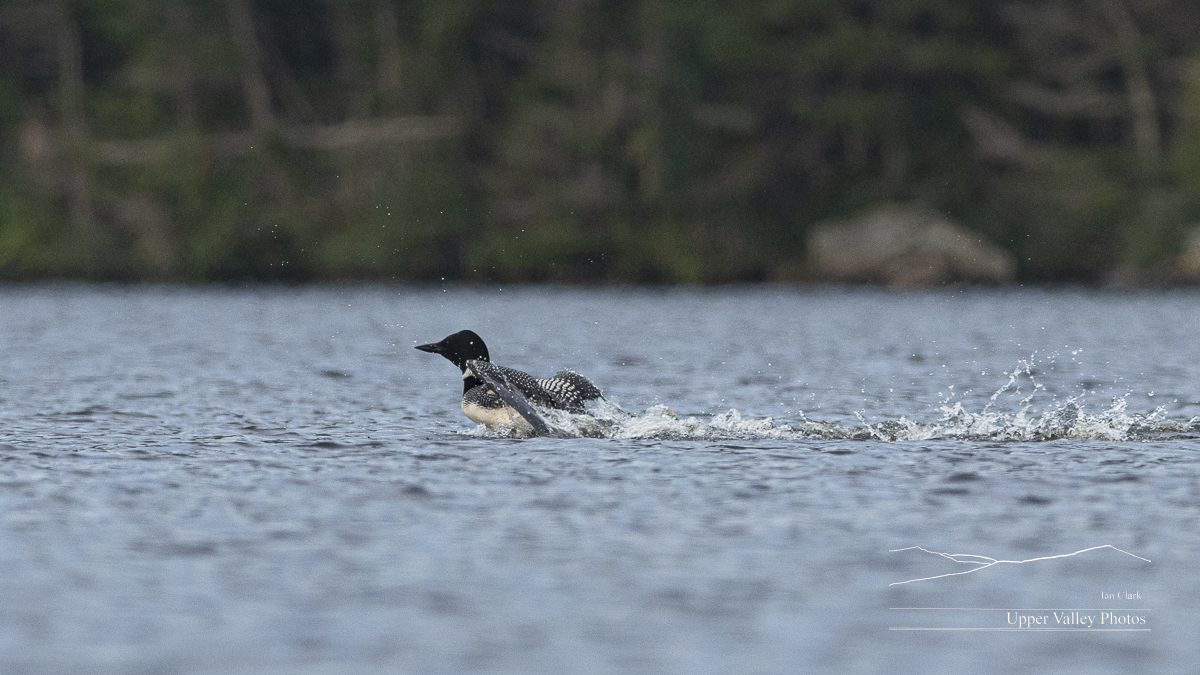
Sometime later, they headed back north and rounded a corner out of sight. A loon flying south appeared and circled to gain height to clear the hills as it departed. Mom took off and followed a few moments later.
Dad gathered the chicks and headed back south, foraging along the way. One chick was almost exclusively feeding itself while the second was putting dad to work.
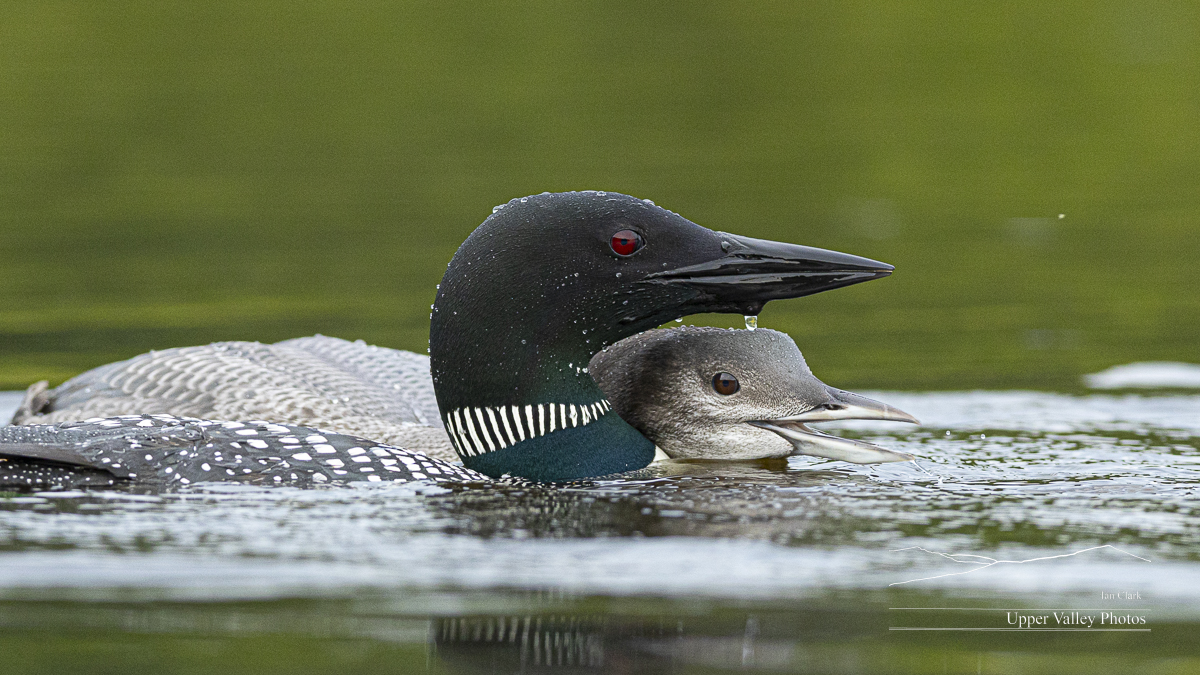
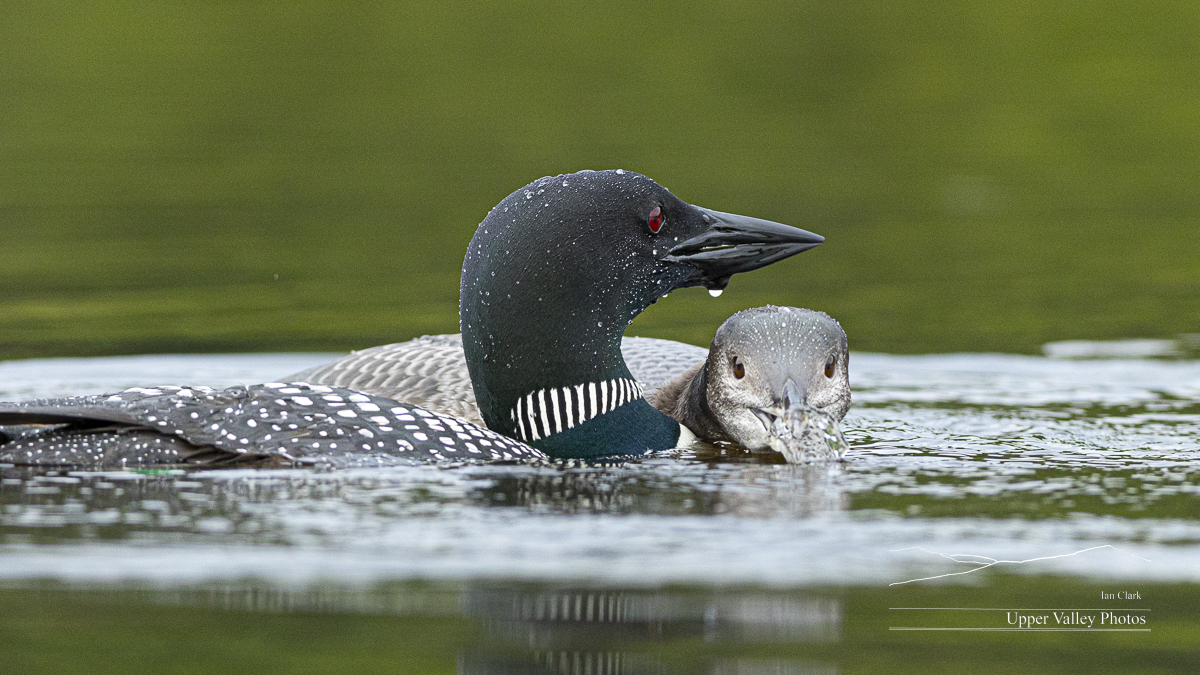

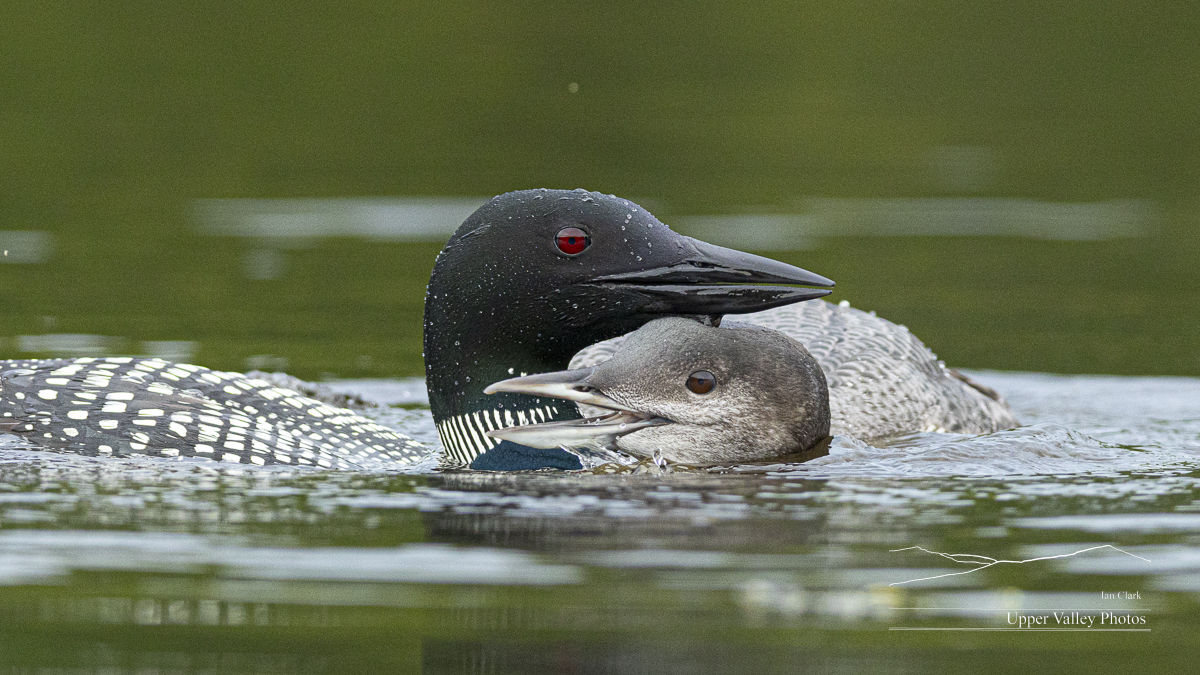
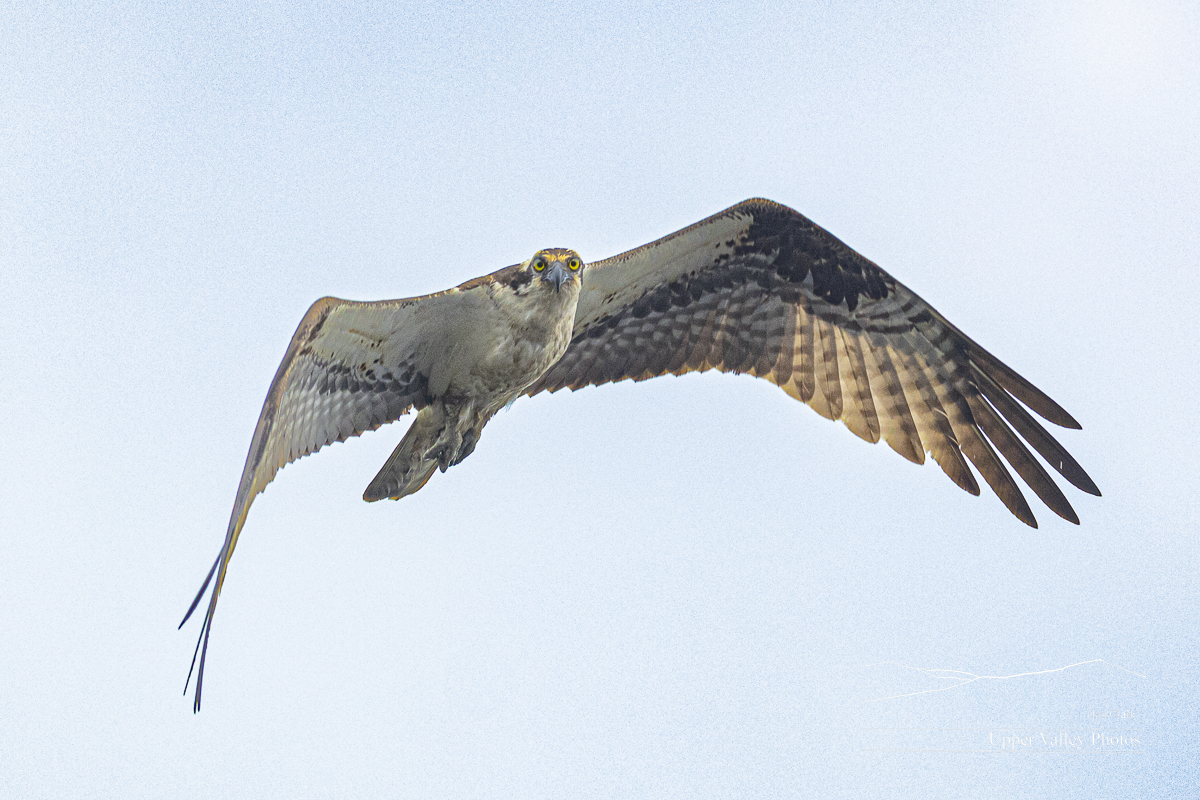

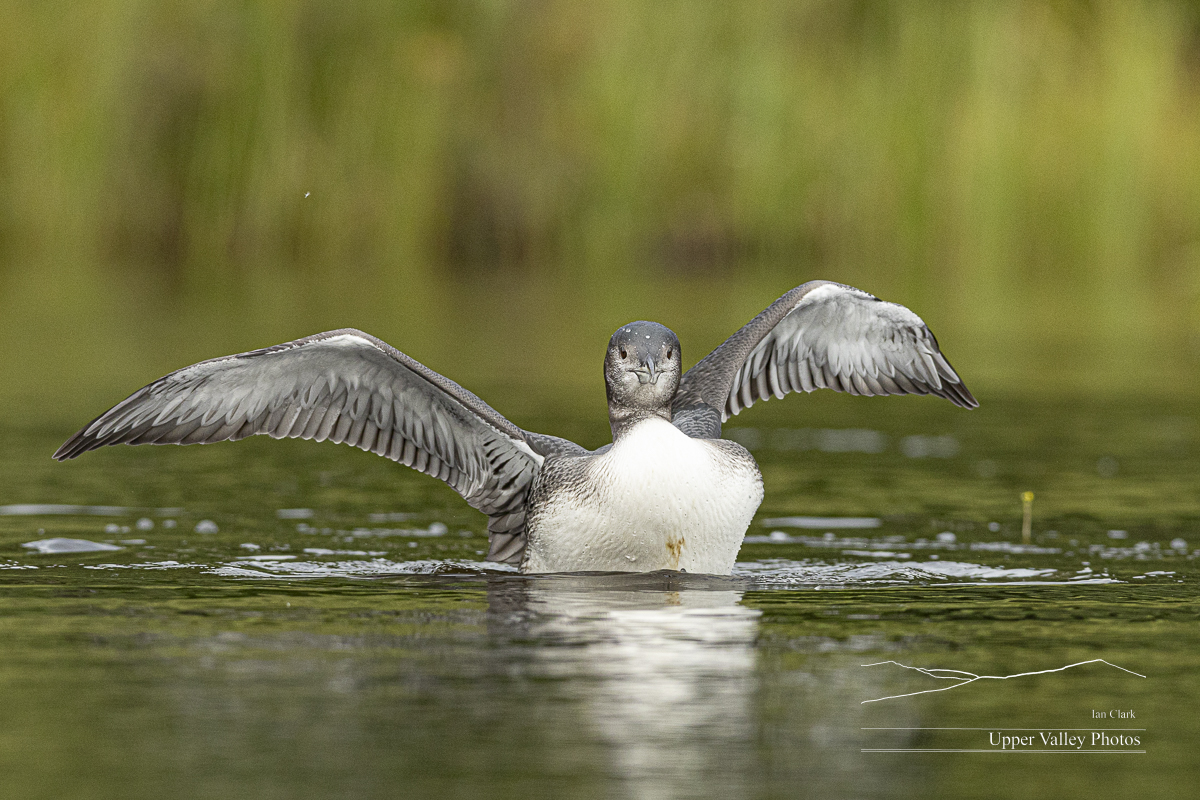
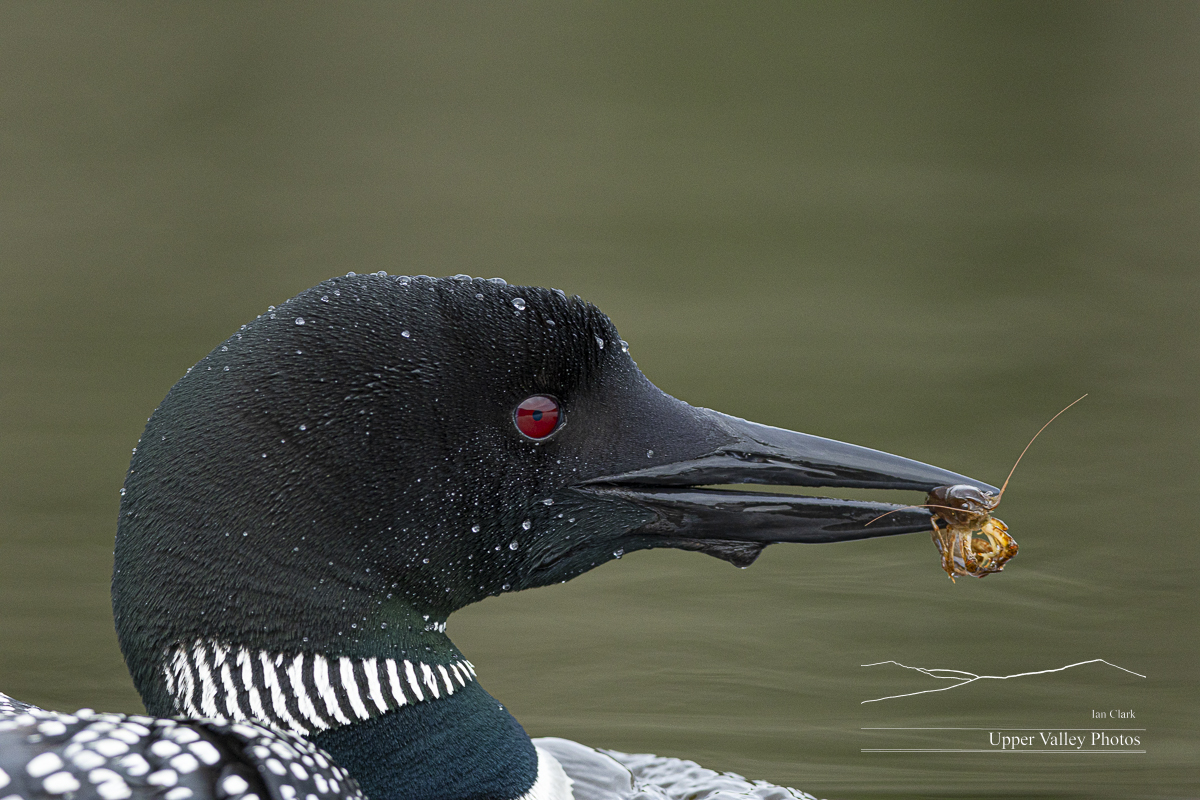
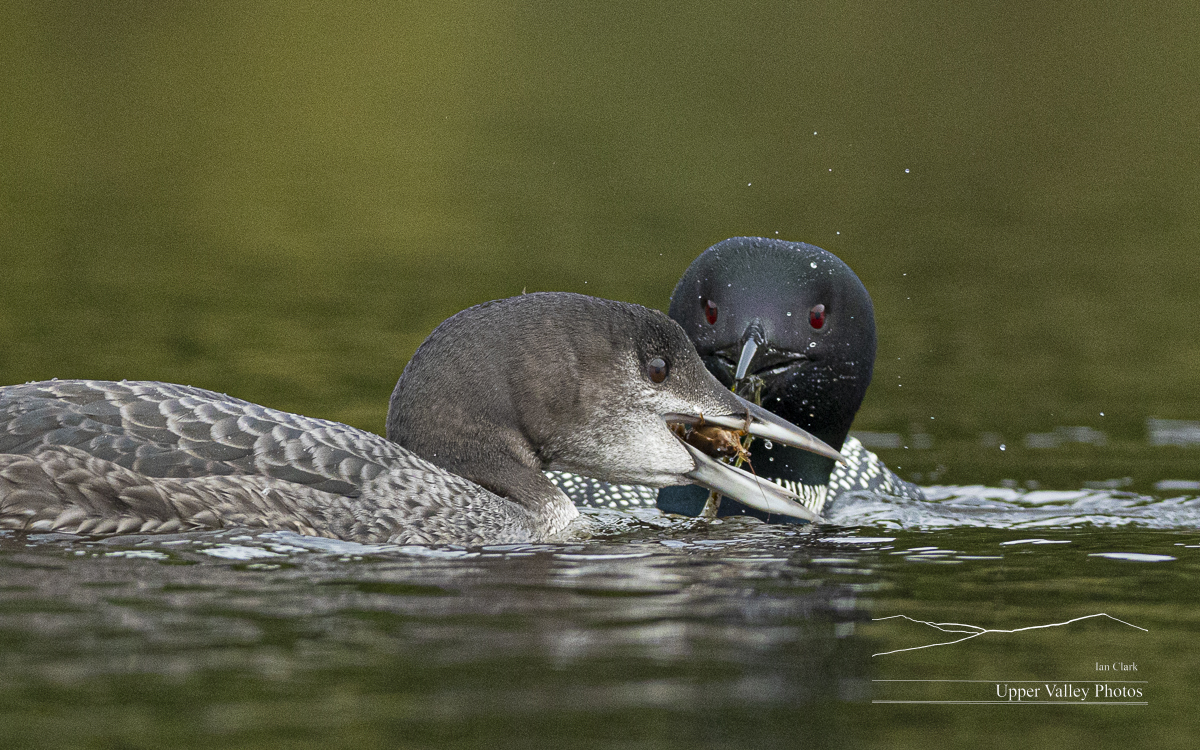

Our osprey made another dive that missed and circled a few times before heading off to the north.
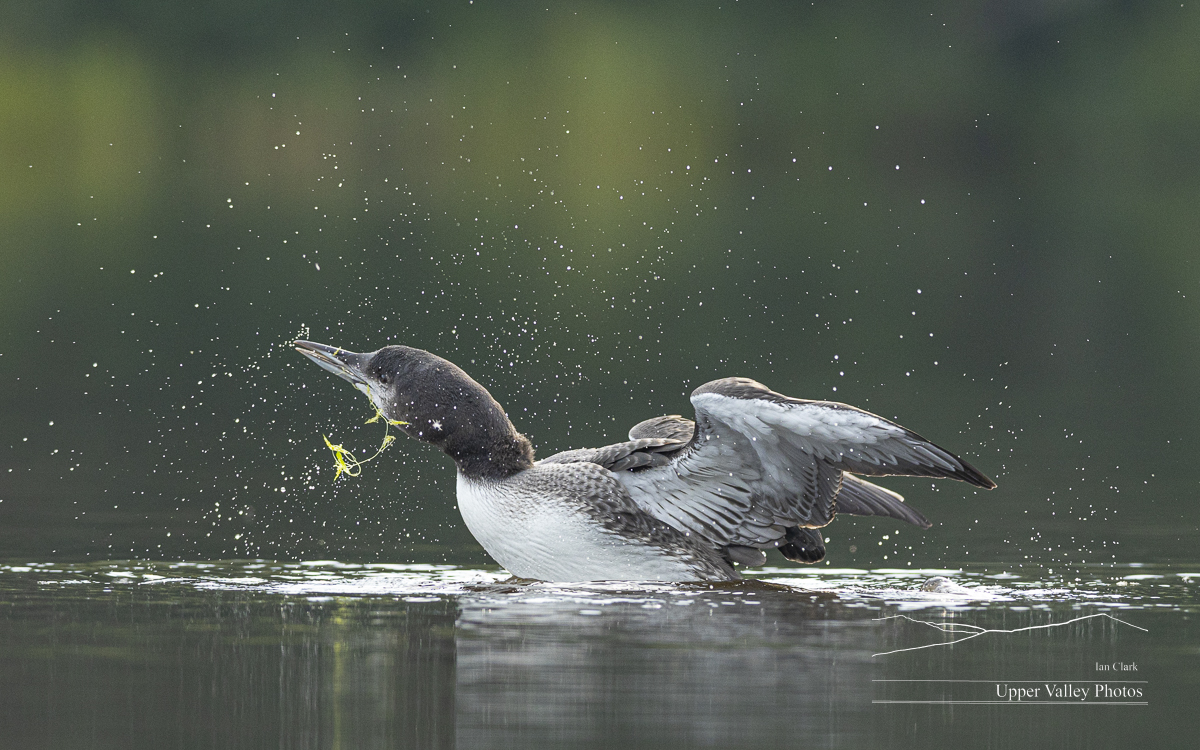
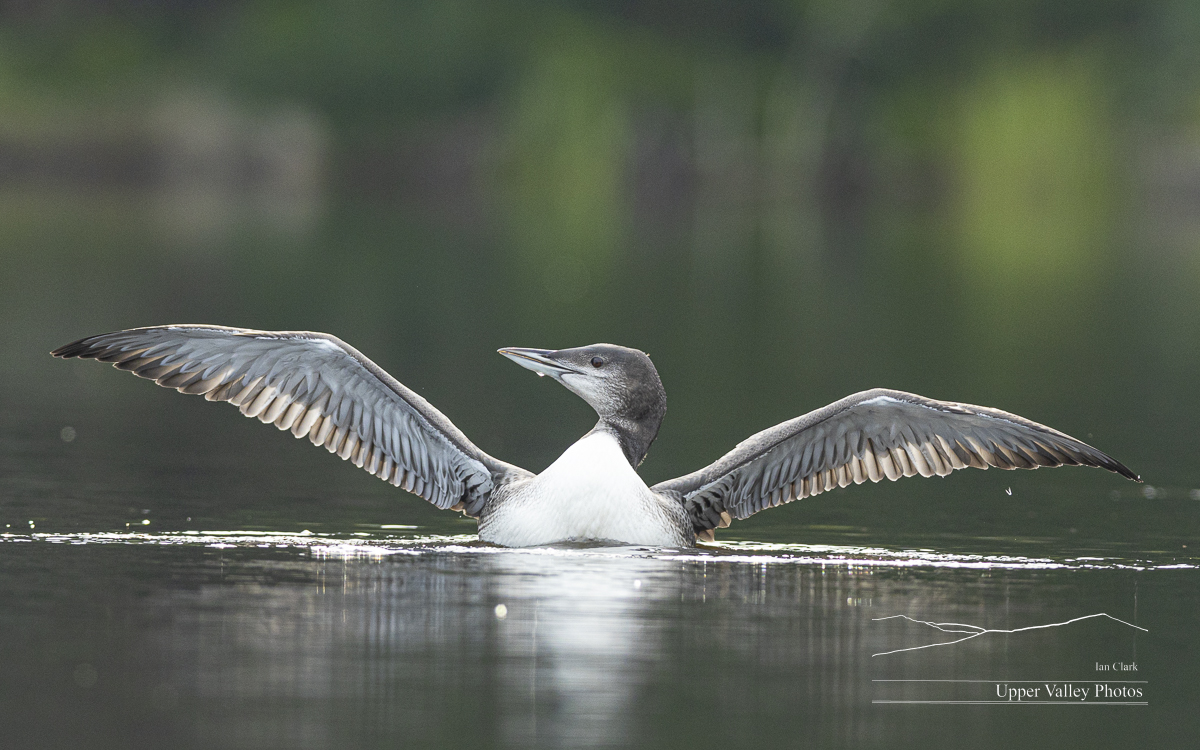

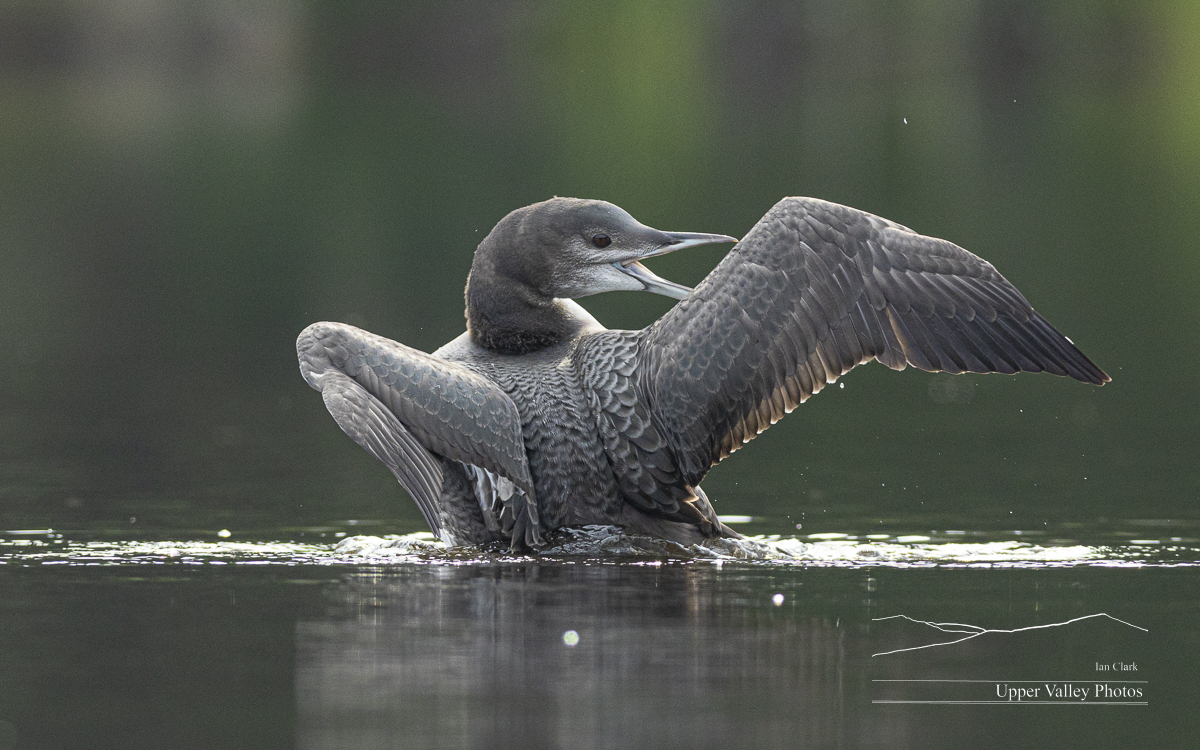
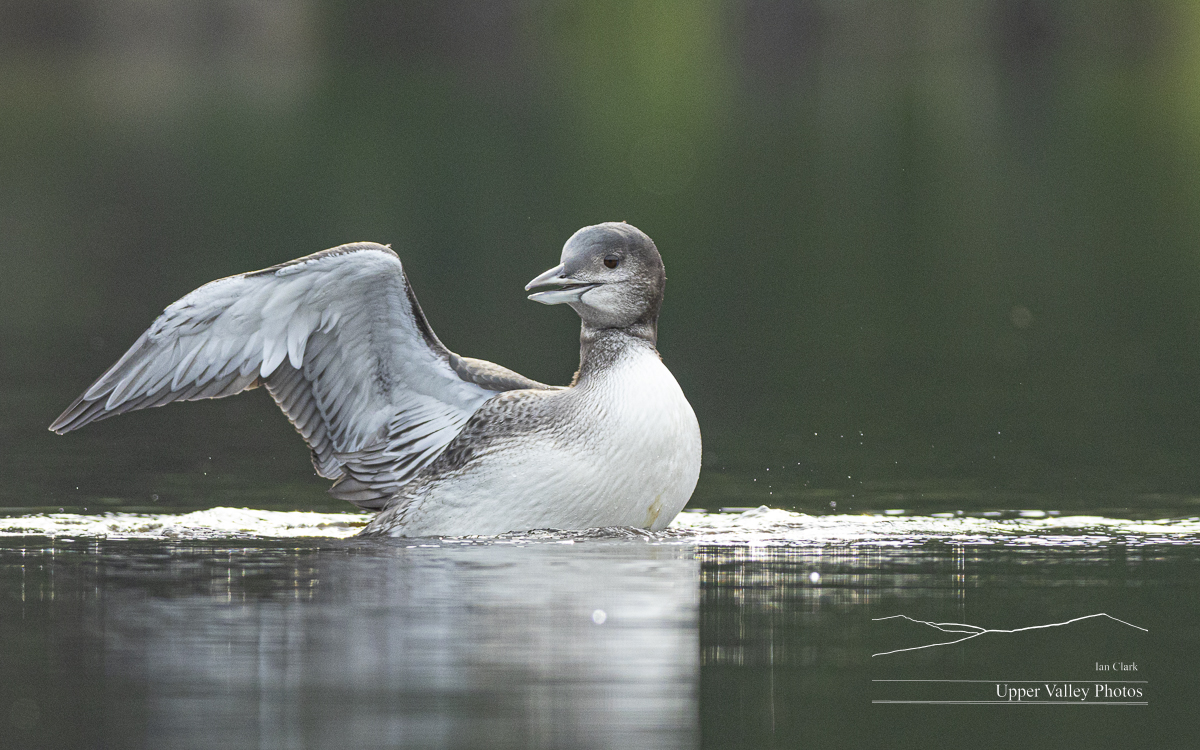

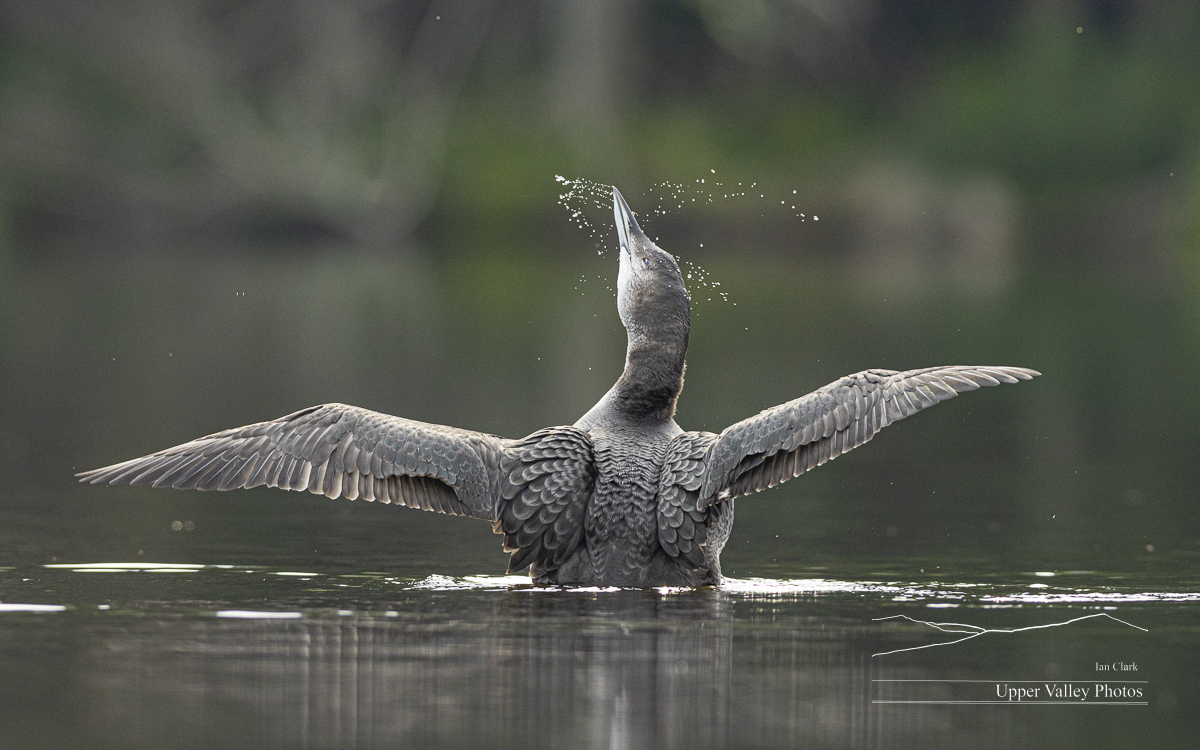
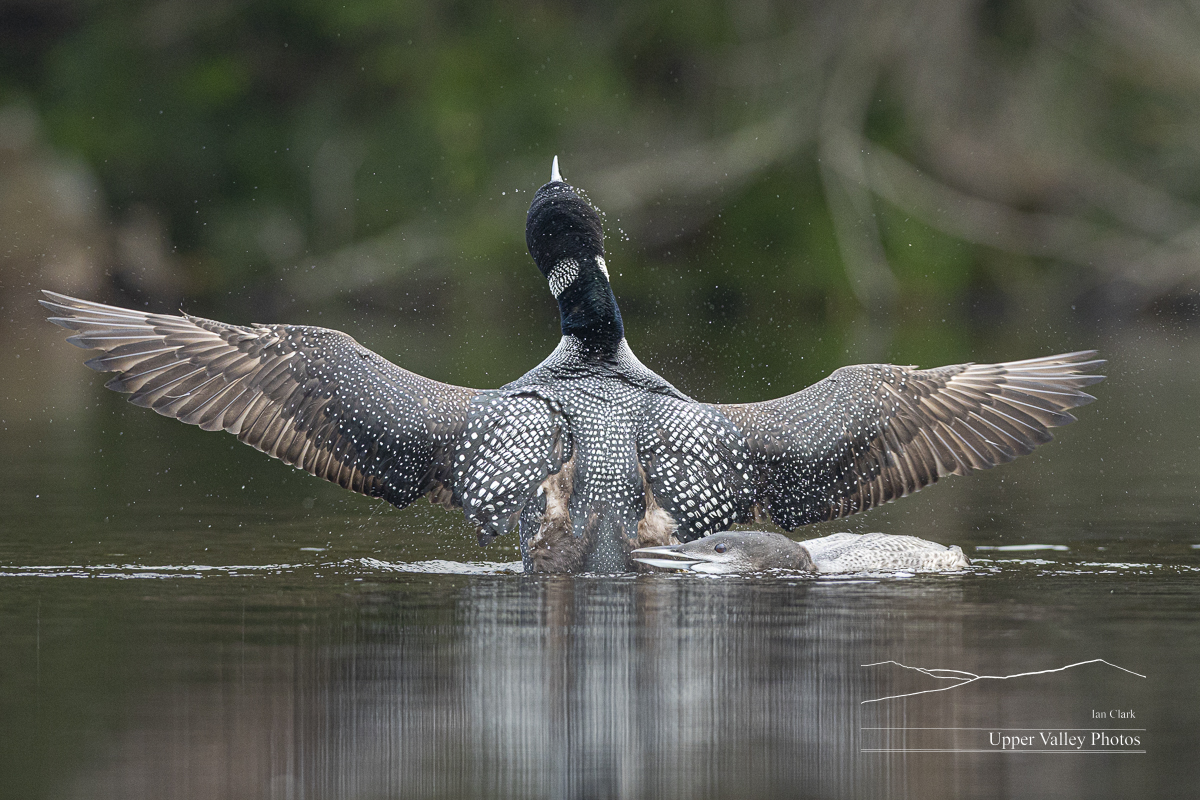


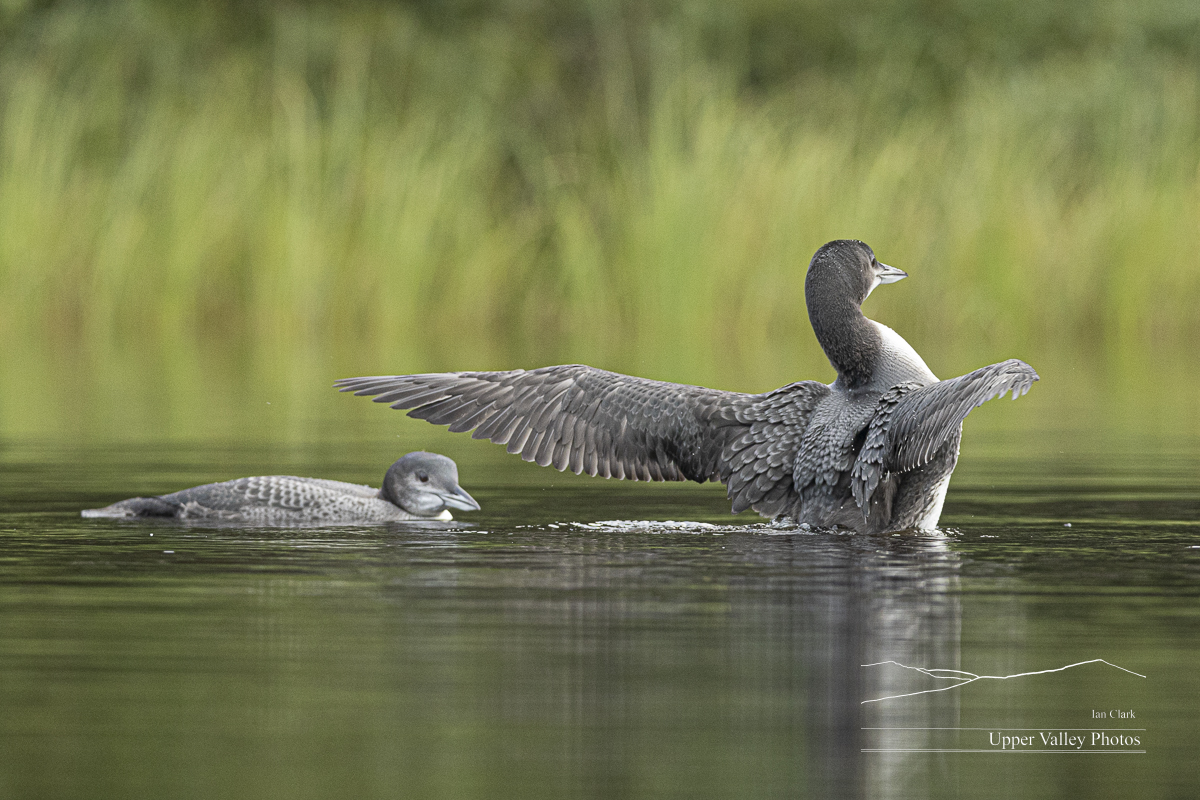
It was time for me to head out and I started paddling towards the boat launch.
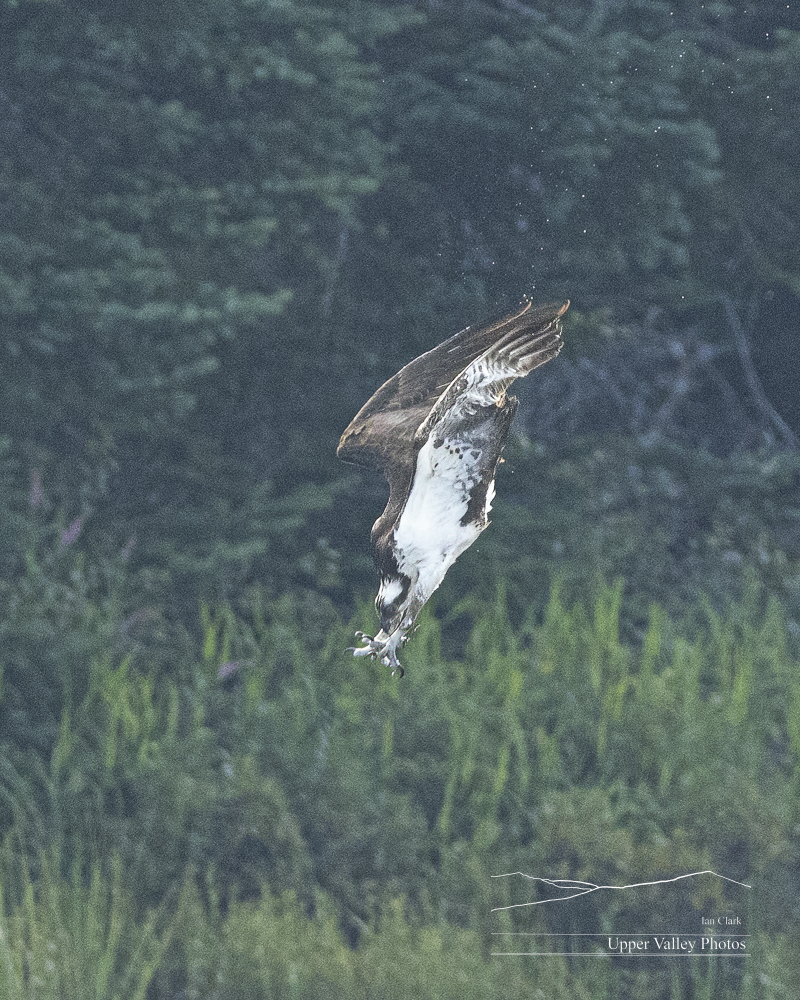

A friend on the Middleton’s pond tells me they’ve had intruders regularly over the past few weeks. I’m watching the weather and will get out to check on them and the Westons as soon as I can.
Loon Chicks at Five Weeks
The rain let up enough for me to get out to check on all three loon families this week. And, I only got caught in a shower once.
The League of New Hampshire Craftsmen’s Fair is coming right up, August 5th through the 12th. I’ll be down there with lots of wildlife and other photos. Stop by booth 726 and say hello. All the details for the fair are here.
I visited the Middletons last night. They’re the ones that lost their chick. On the last visit, they showed signs they might be courting again. That was before the heavy rains and flooding. We were spared the worst of the flooding, but did get significant rain. A friend on the pond has kept me updated. She says the loons have had one or two intruders on the pond regularly. When I visited, the hummock where they’ve nested the last several years has been washed away, with no sign of another nesting spot. There was an intruder on the pond, with some circling and posturing but no outright fights.
This morning, the forecast was for rain and thundershowers. When I got up, there were stars visible. I headed out to check on the Westons. One of the adults and two chicks were foraging not far from the boat launch. The other adult soon came down the pond to join them. They were in shadows, I headed up the pond to see who else might be about. The rain held off until I got to the other end of the pond. I had a soggy retreat.
On Wednesday morning, the forecast was mixed and there were a couple stars between clouds when I got up. I took a chance and headed east to visit the Eastons.
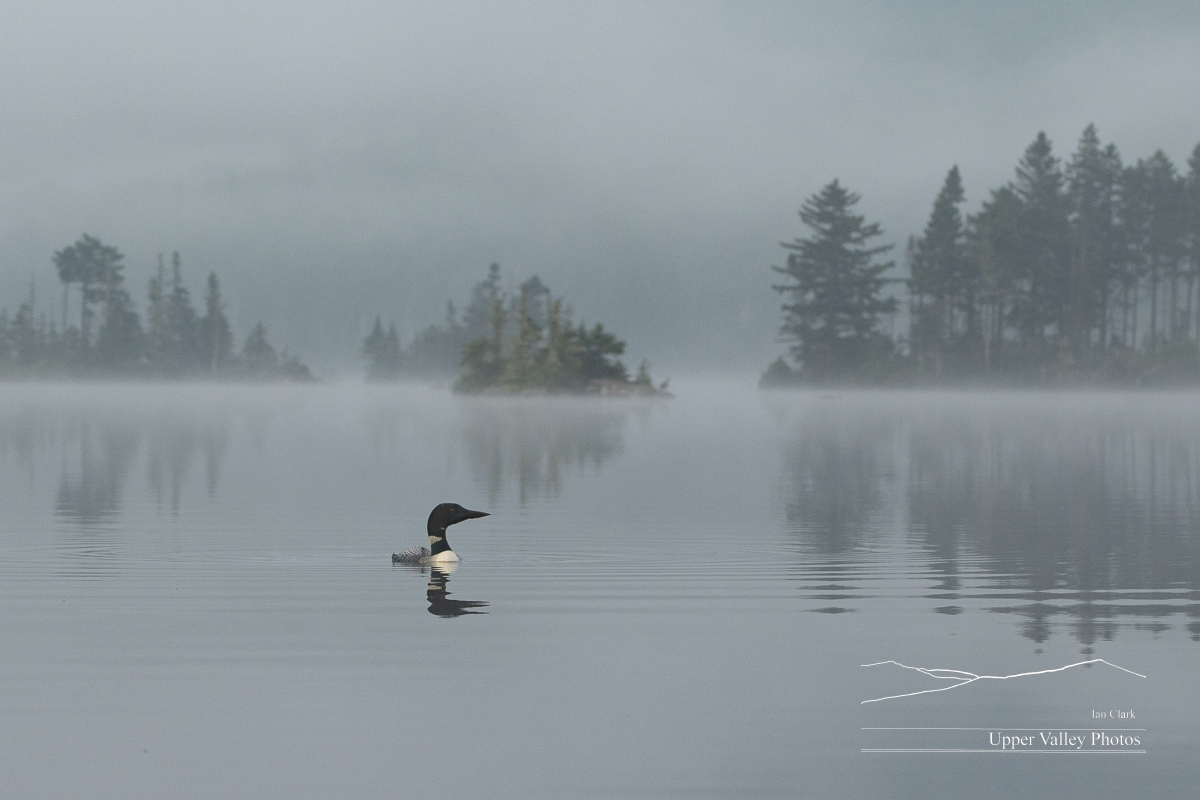

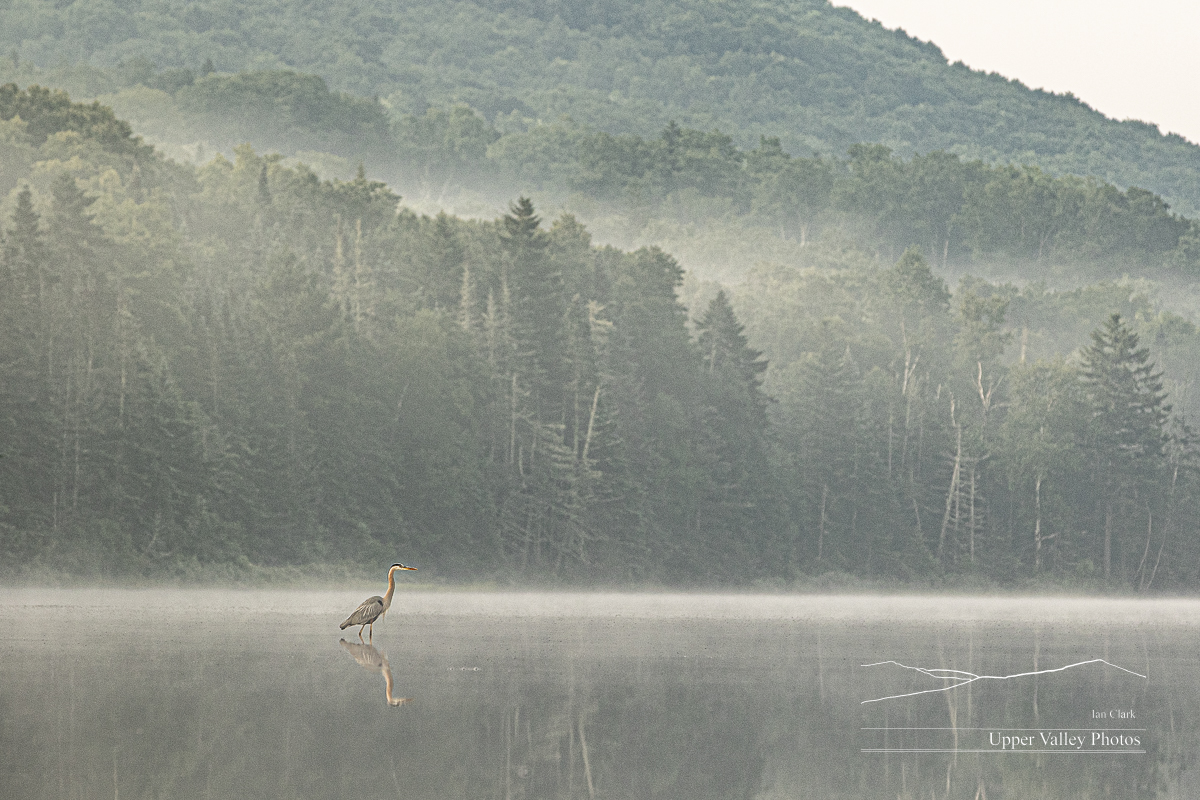
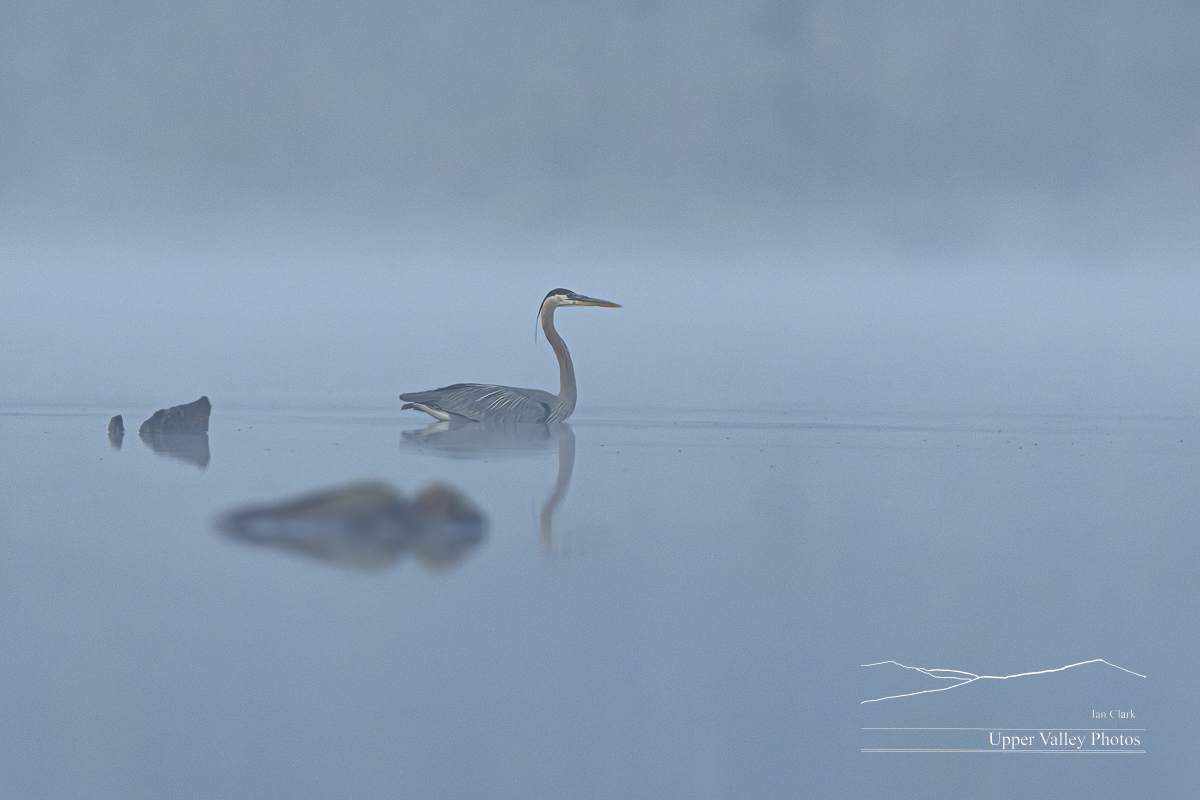
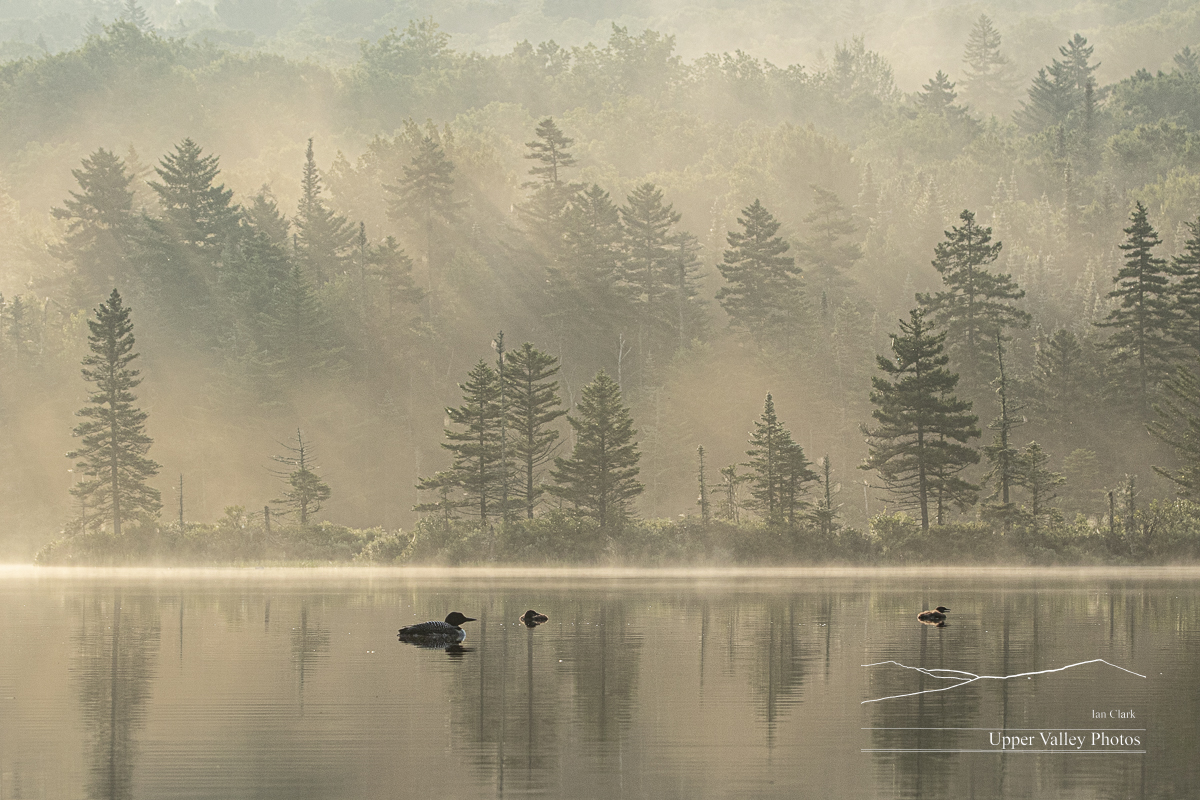
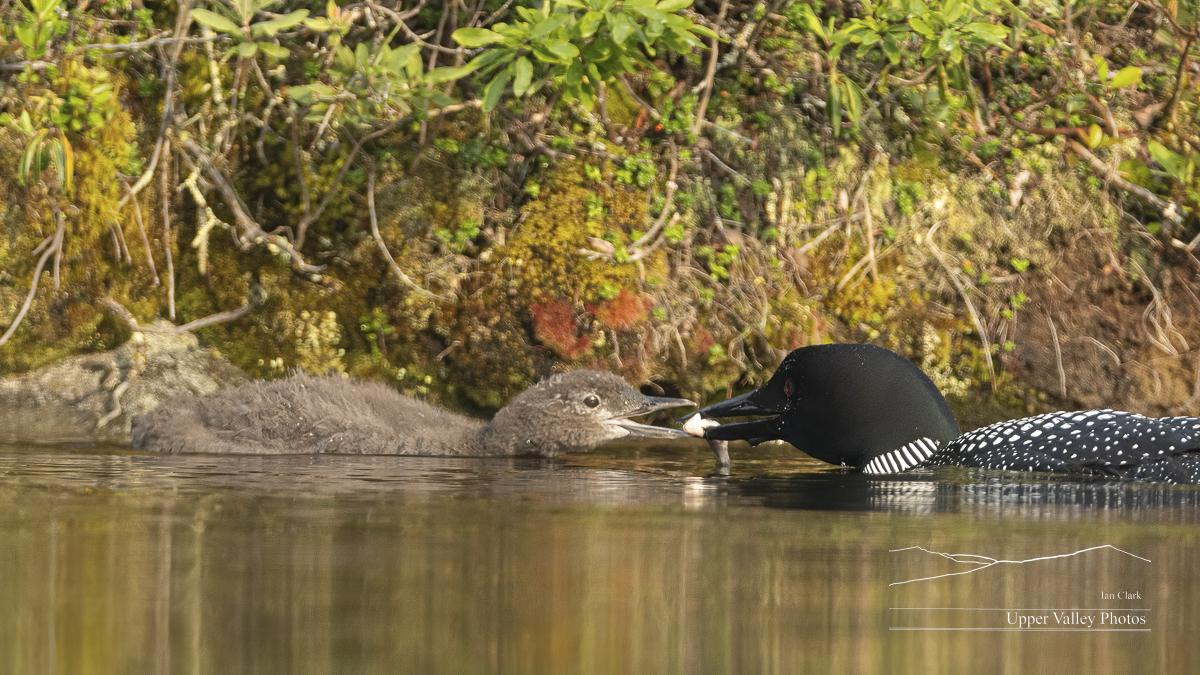
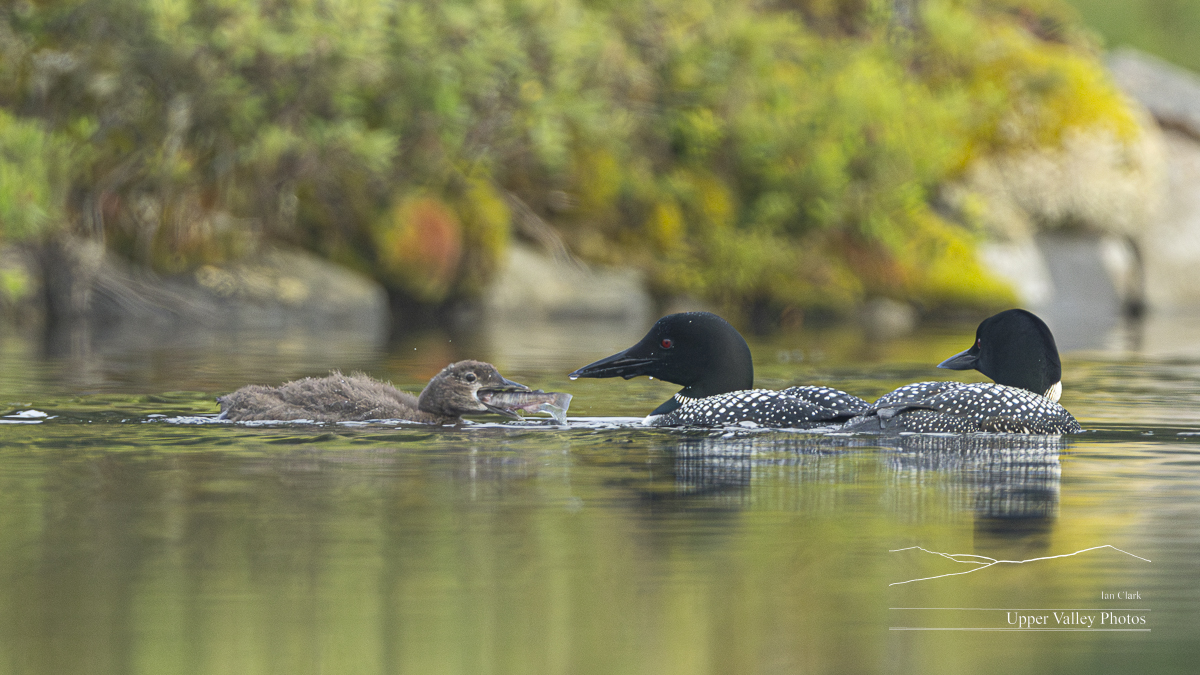
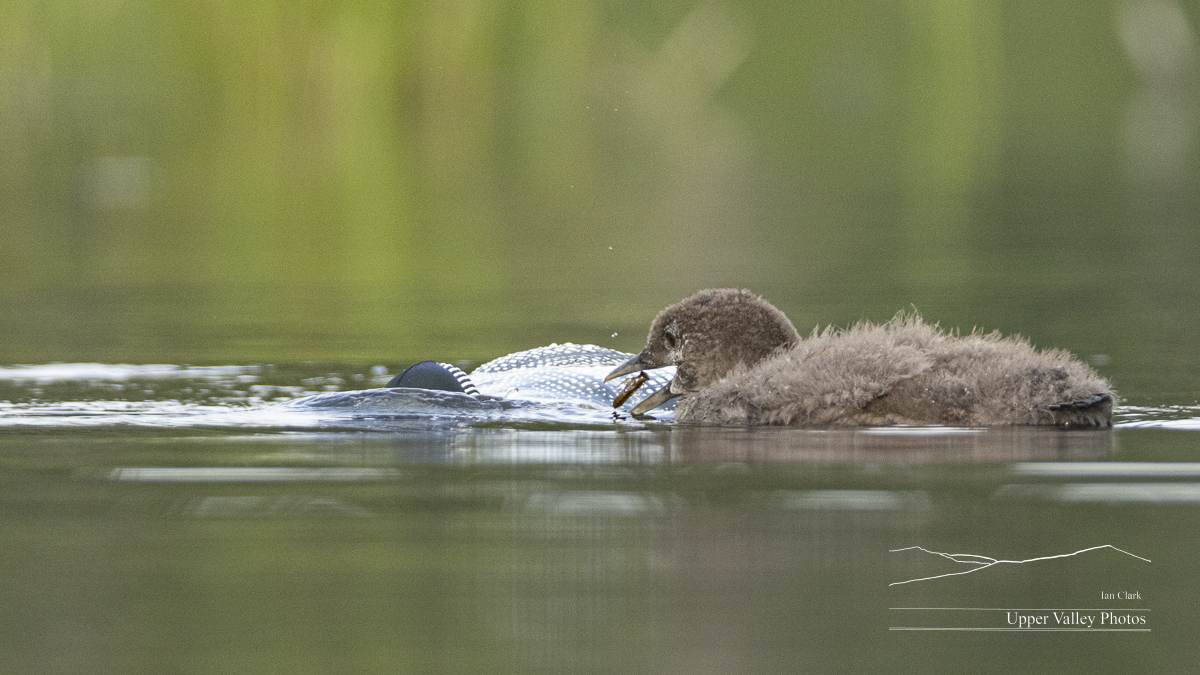

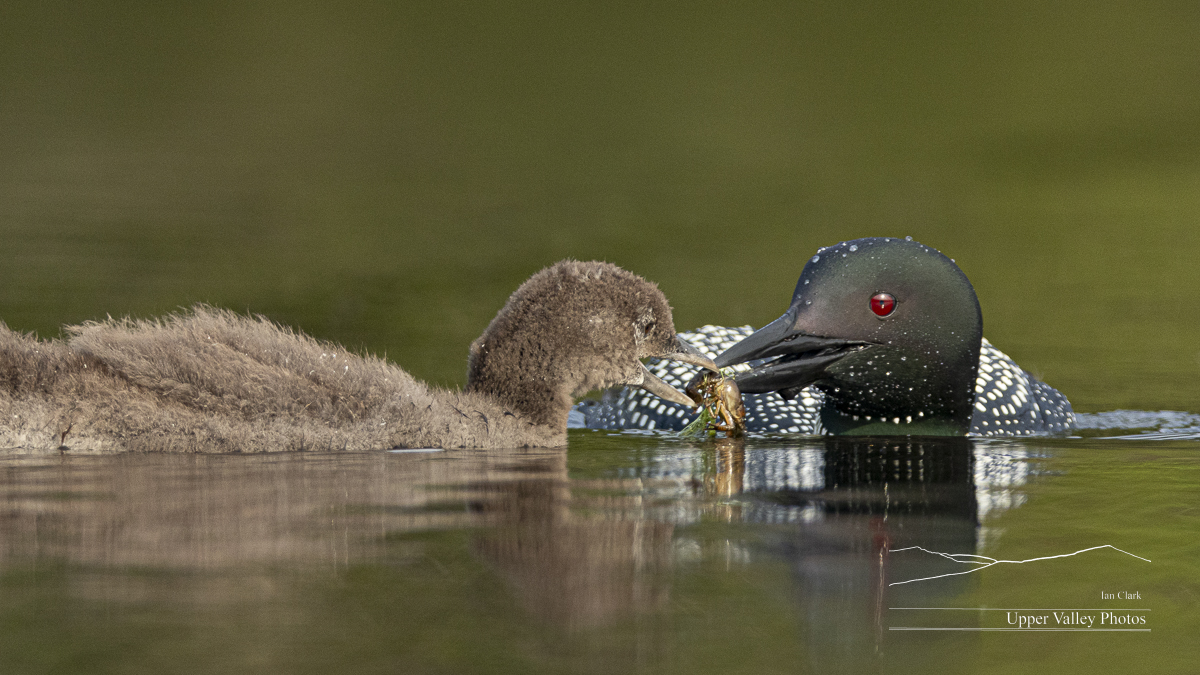
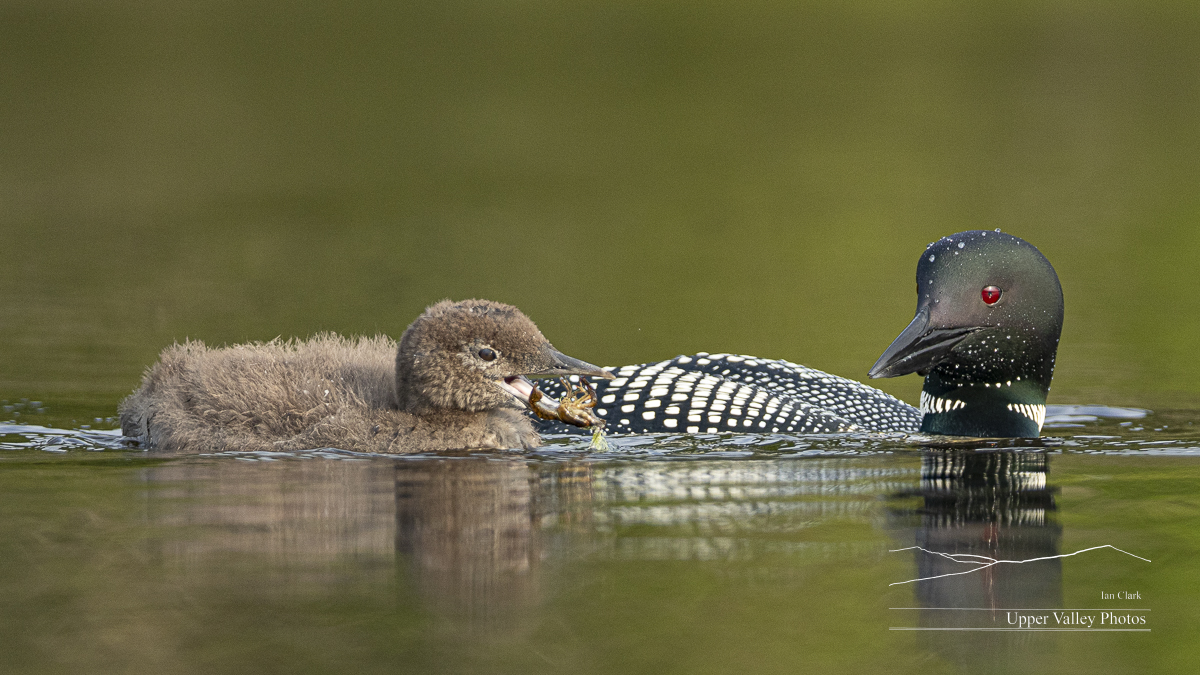
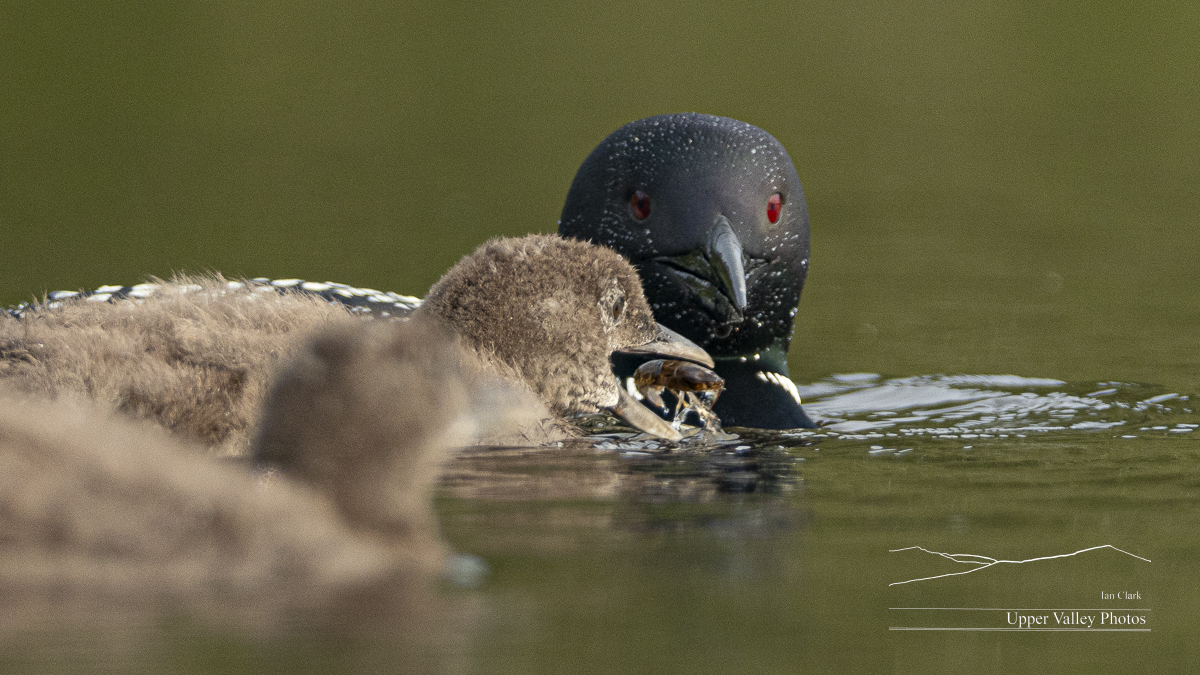
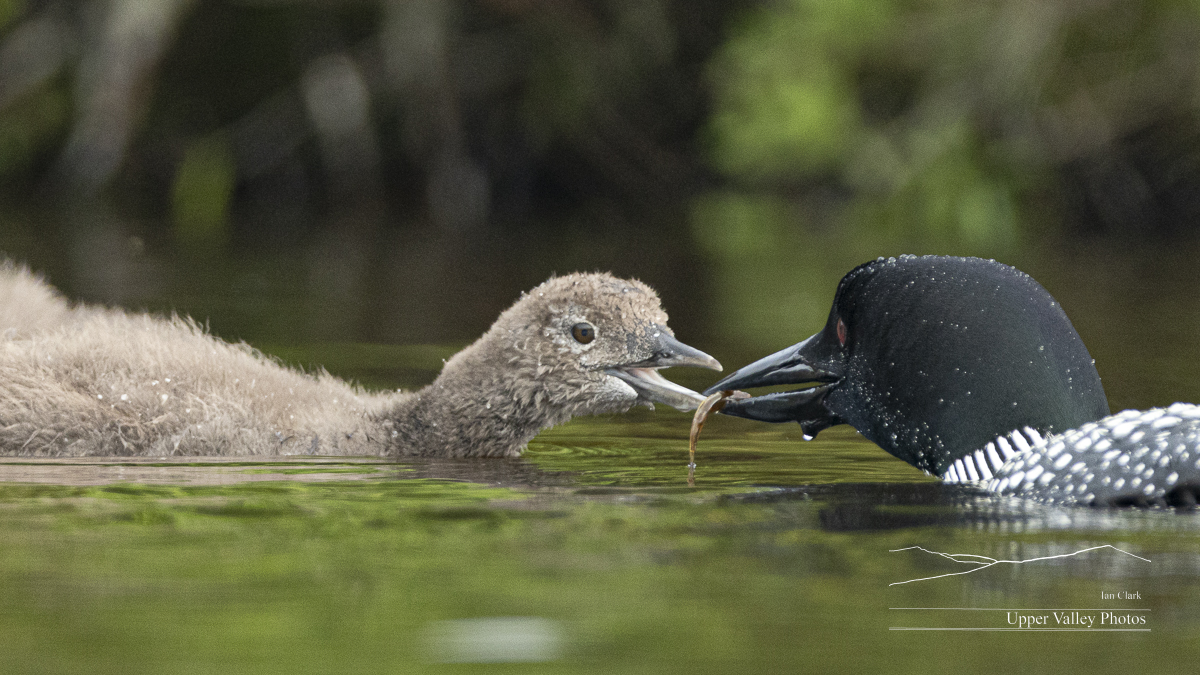



More Time with the Loons
Last weekend, I was able to spend both mornings on the Middleton’s Pond. They’ve got a new neighbor, it looks like they may be having second thoughts about the nest location and they, once again, told an intruder to go away.
I’ll be down at the Paradise City Show in Northampton, MA, over Memorial Day Weekend. I’ll have lots of wildlife prints, including lots of loons, as well as note cards. Stop by to say hello. All the show details here.
Saturday morning found a great egret foraging not far from where the loons nested last year and may again this year. The loons were off in another cove on the pond.
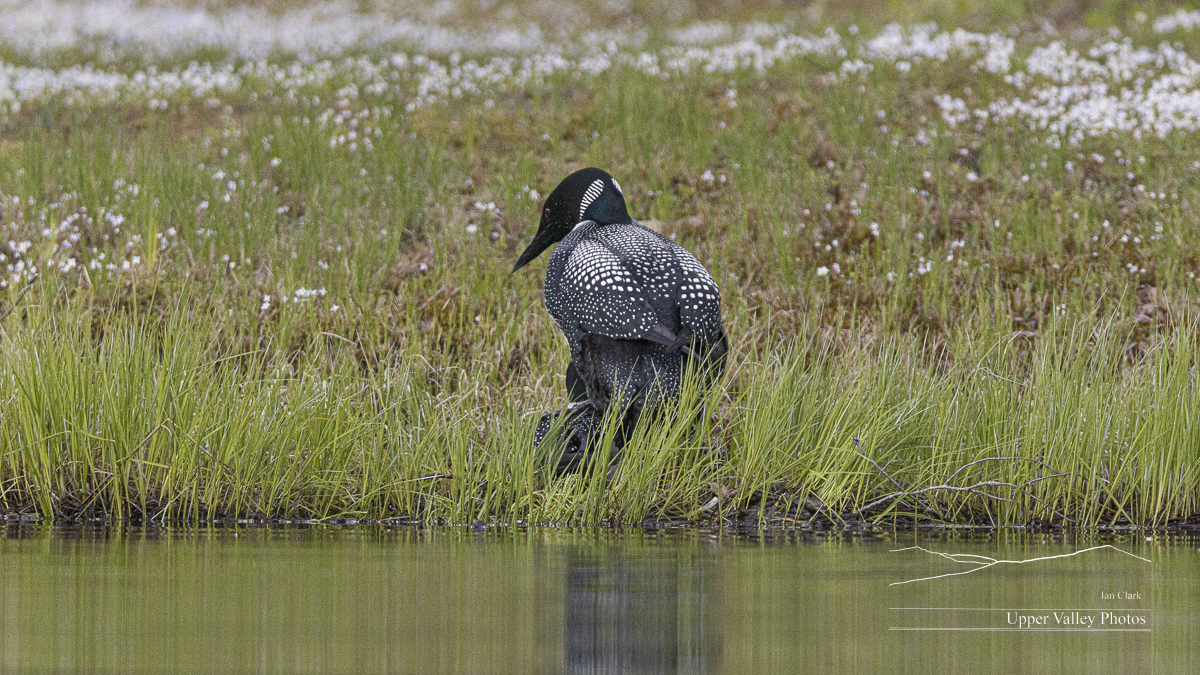
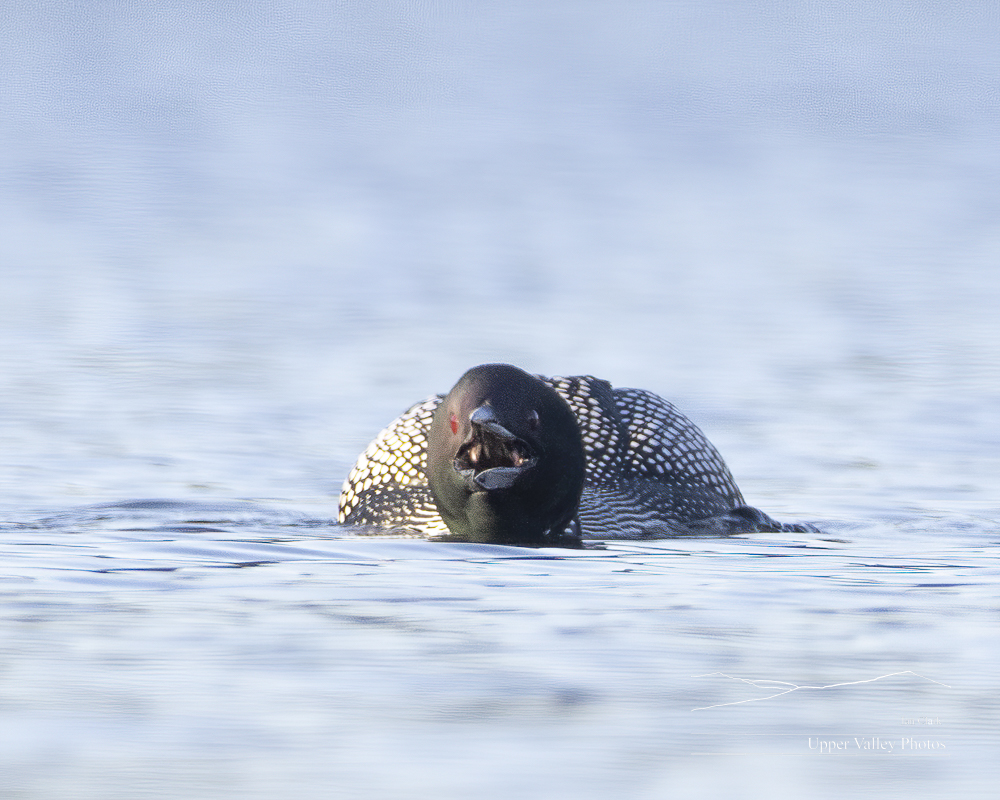

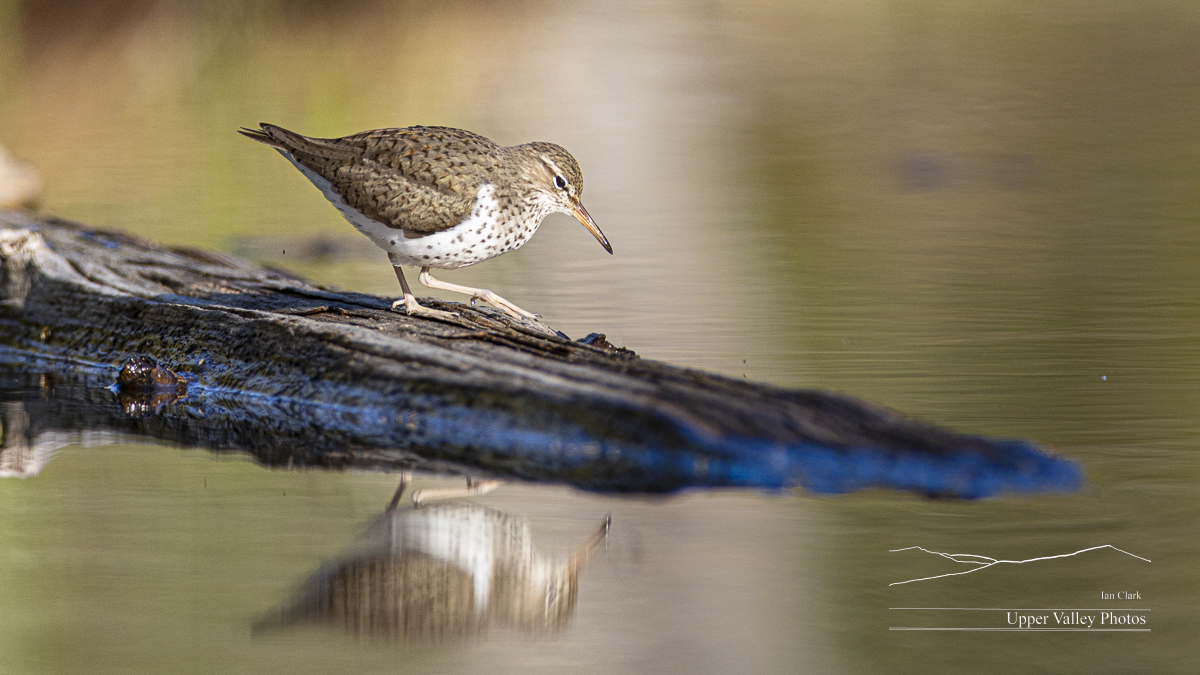
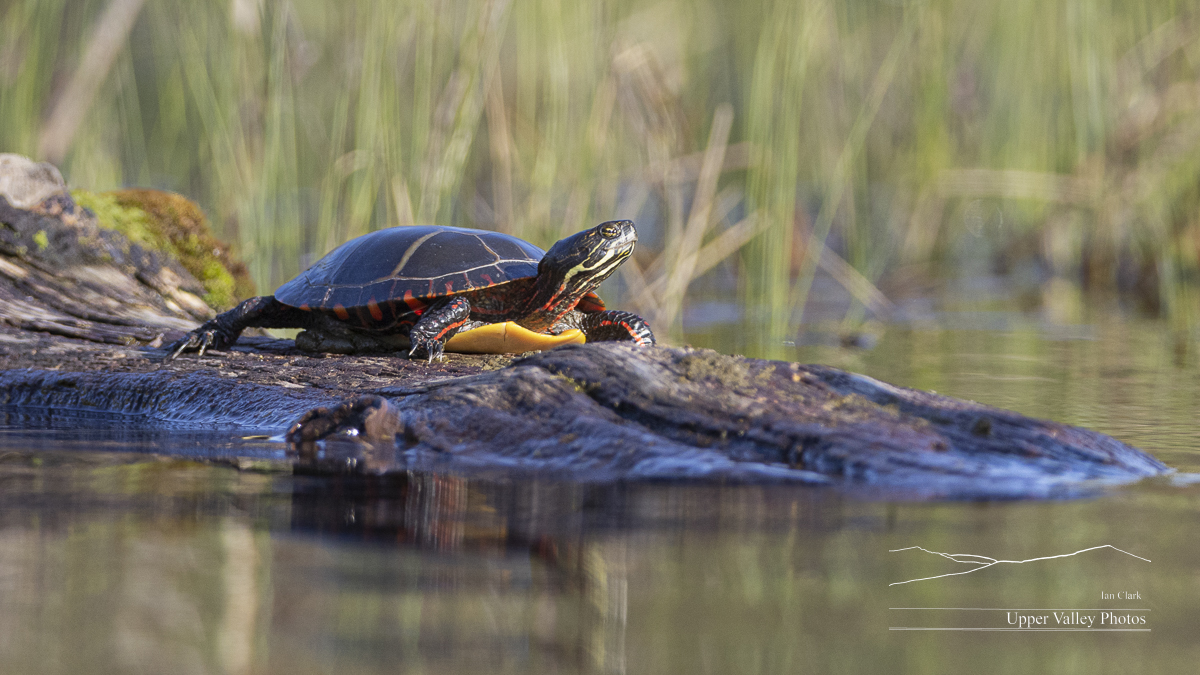
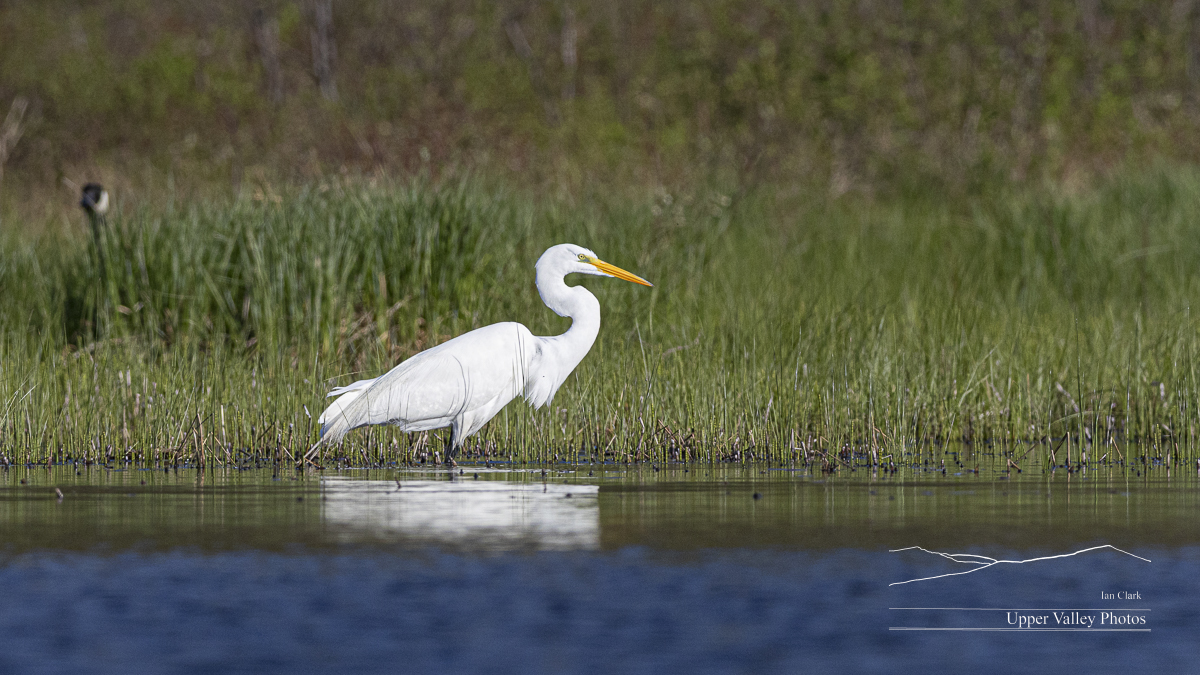
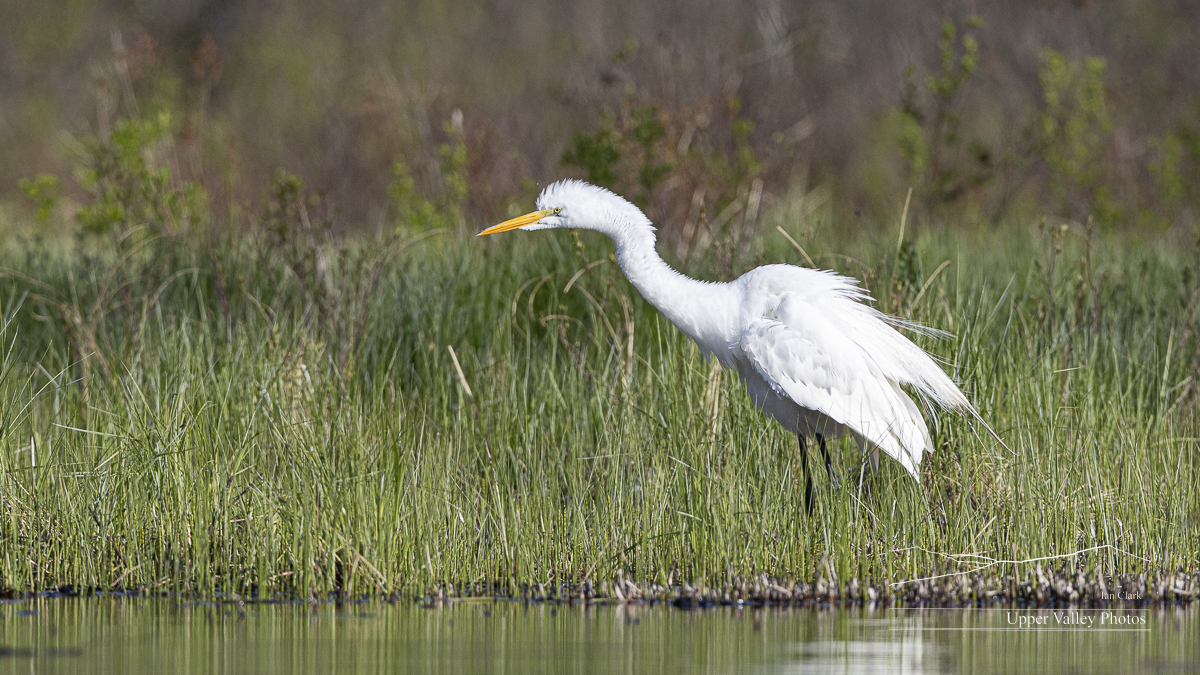
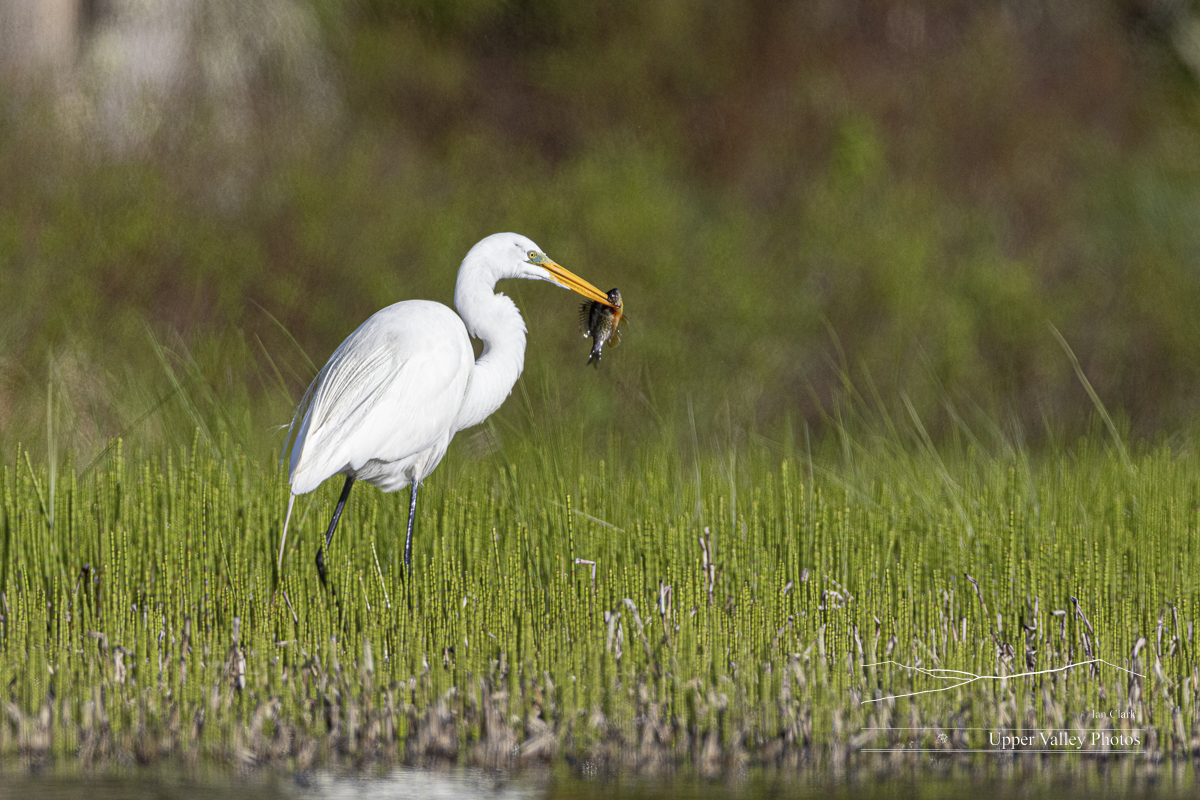
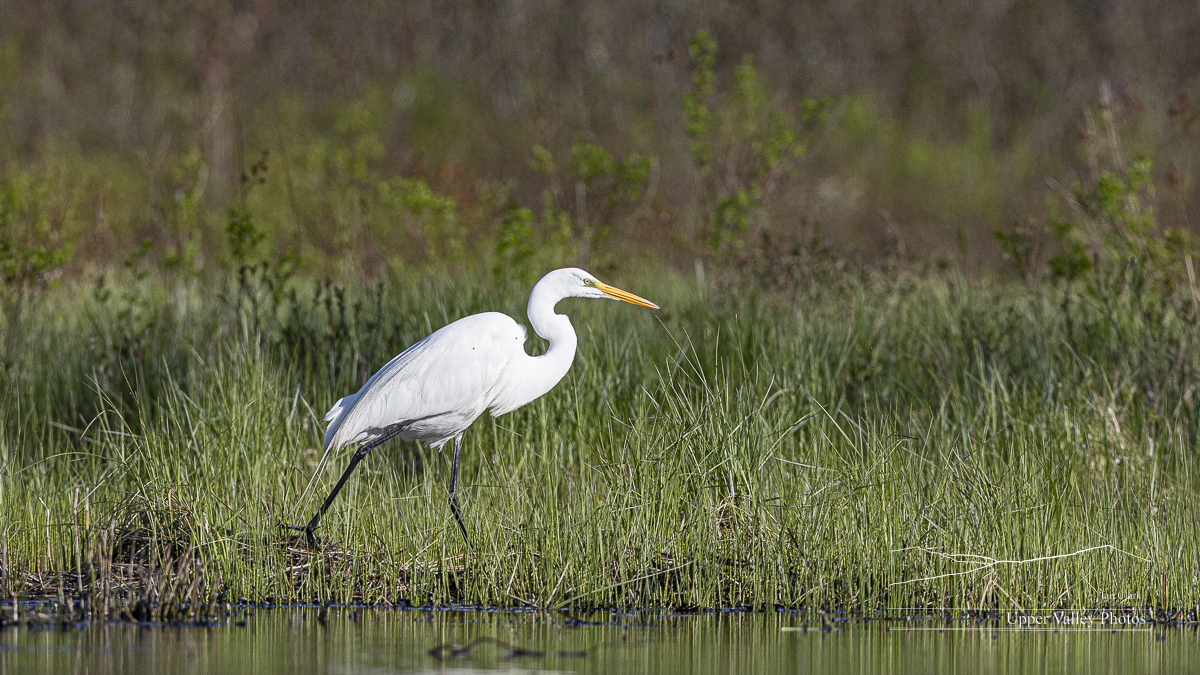



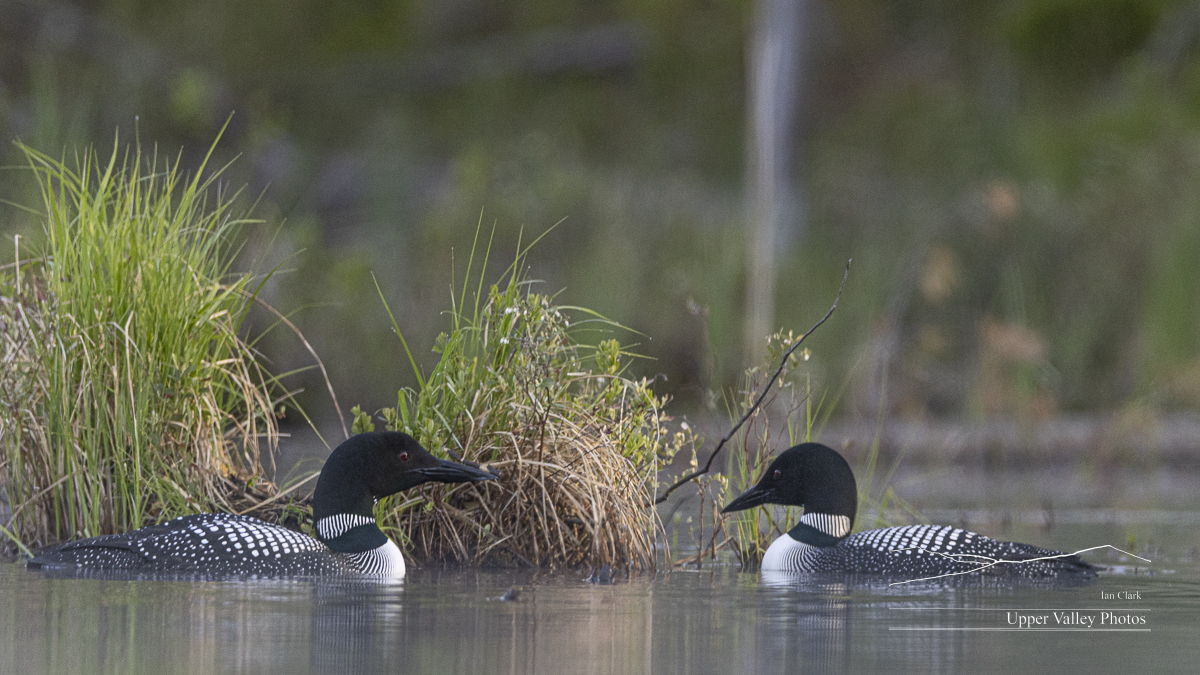

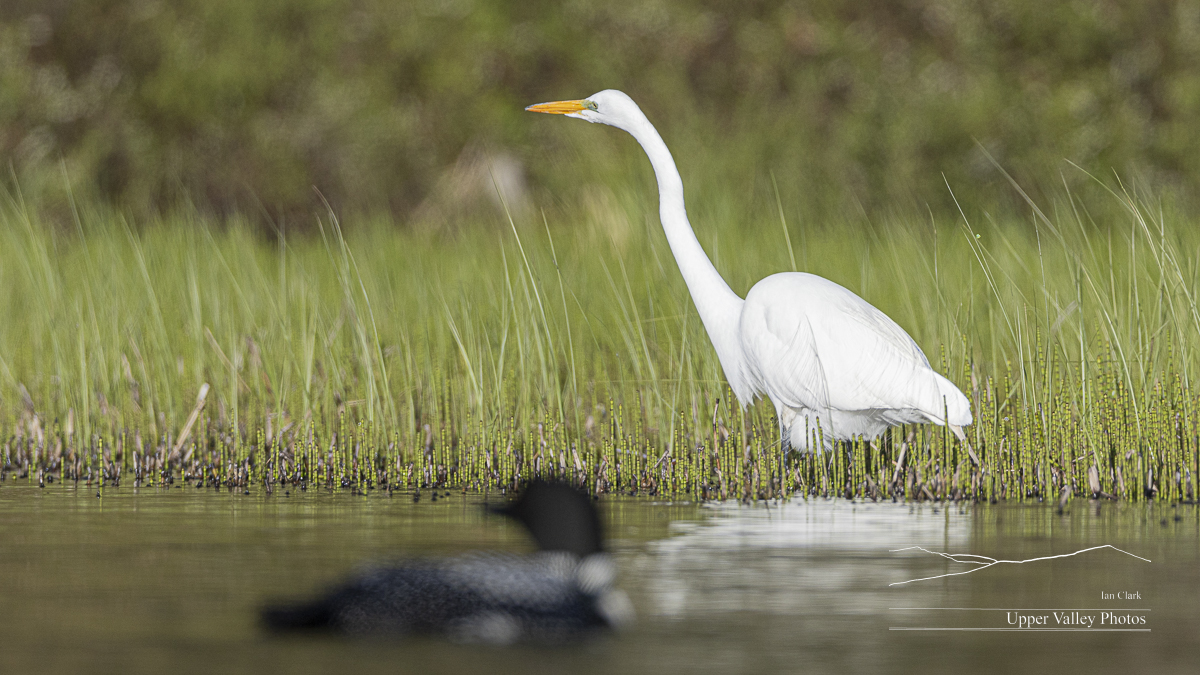
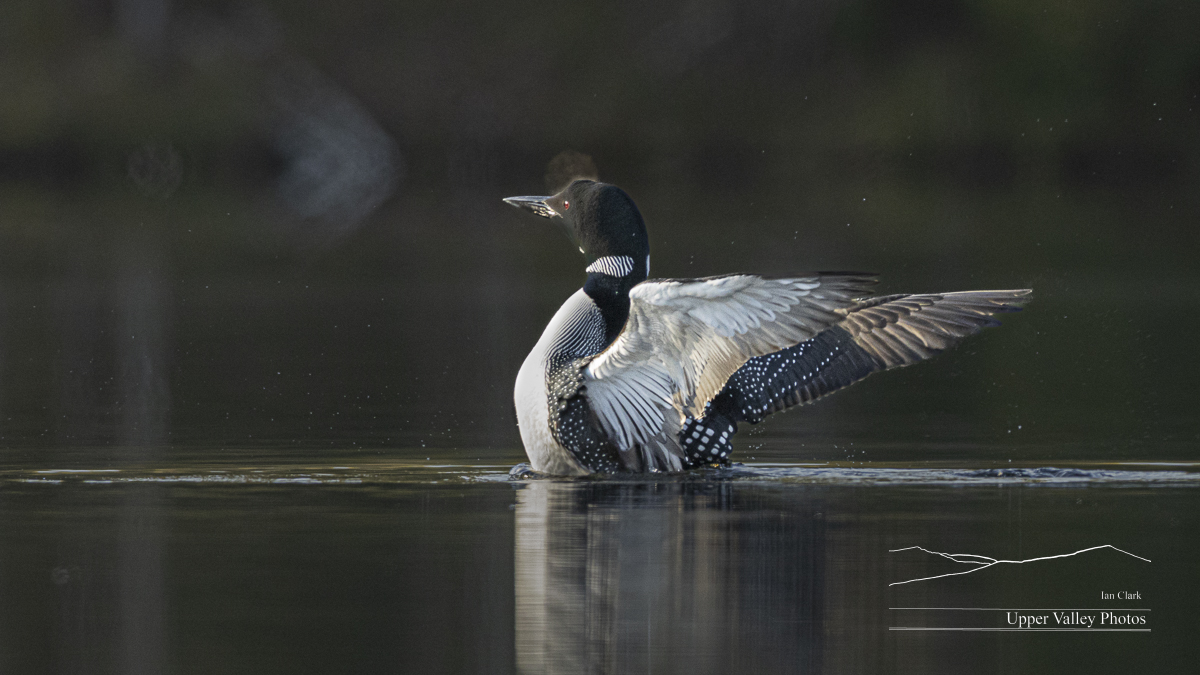
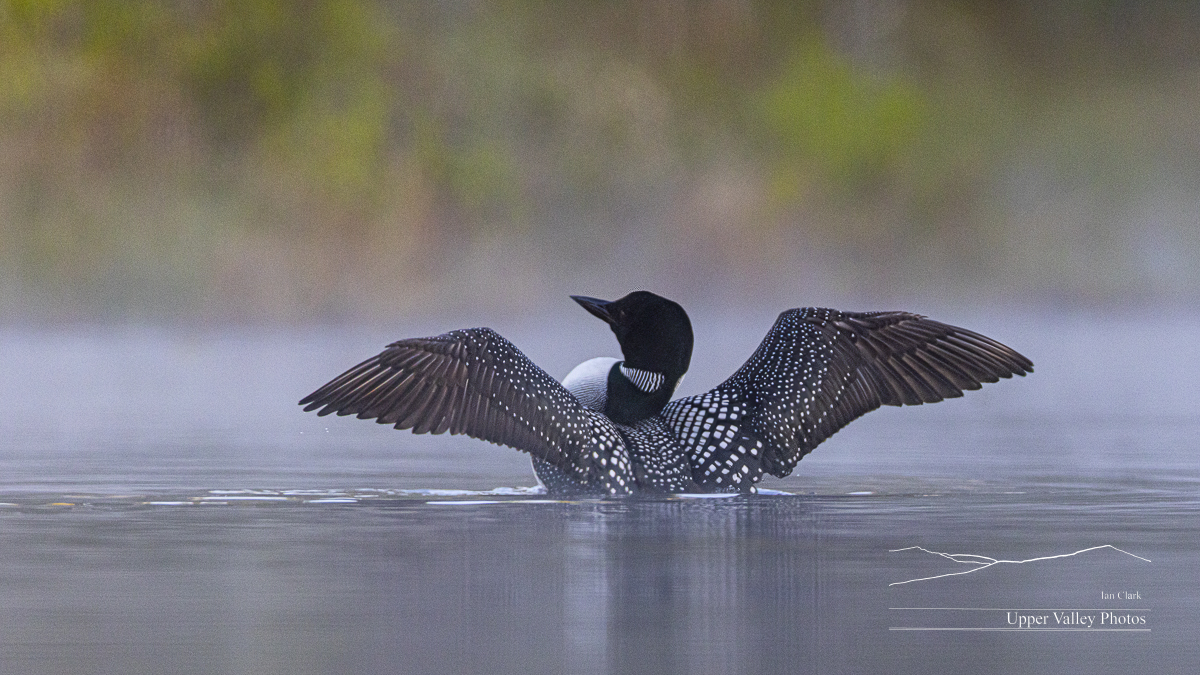
I’m anxiously watching the weather, itching to get back to see if they’ve decided on a nesting site.
Unexpected Action on the Middleton’s Pond
The forecast for this morning called for rain. I happily planned to sleep in. Owing two huskies often thwarts such plans. When I let them out, there were stars to be seen. There was a thick fog over the Connecticut River, but clear skies above. The Middleton’s – the loons that live on the pond between the other two ponds – pond is a few hundred feet above the Connecticut. Hoping for some mood shots, I packed up and headed out.
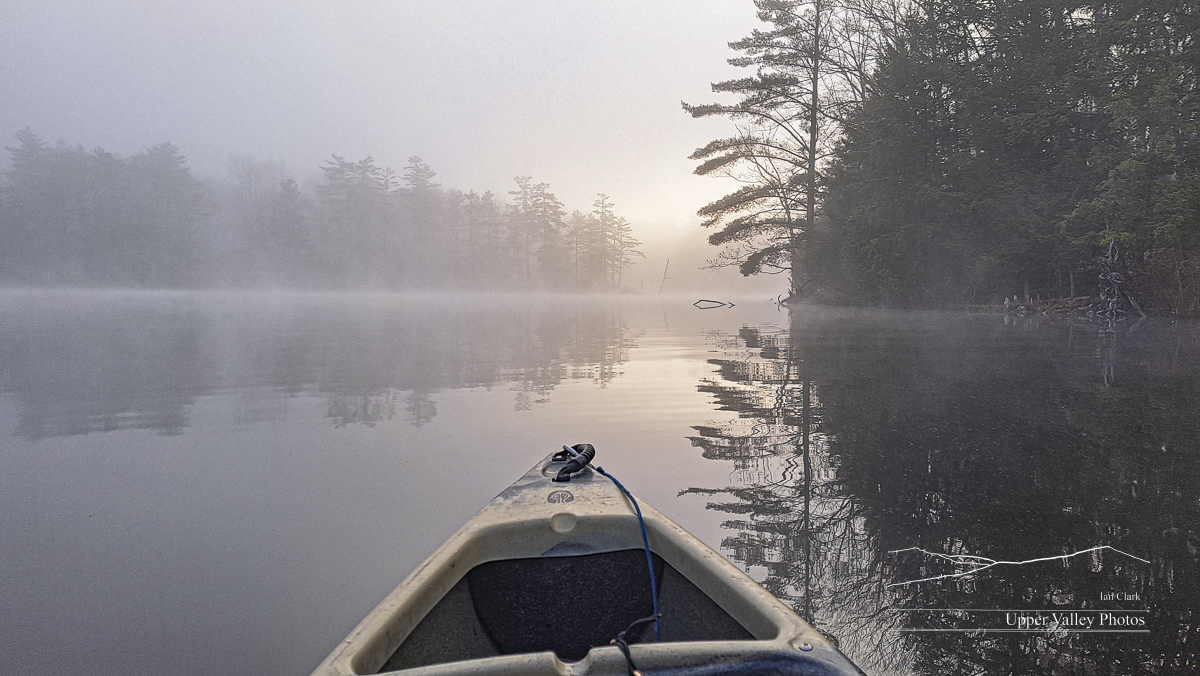
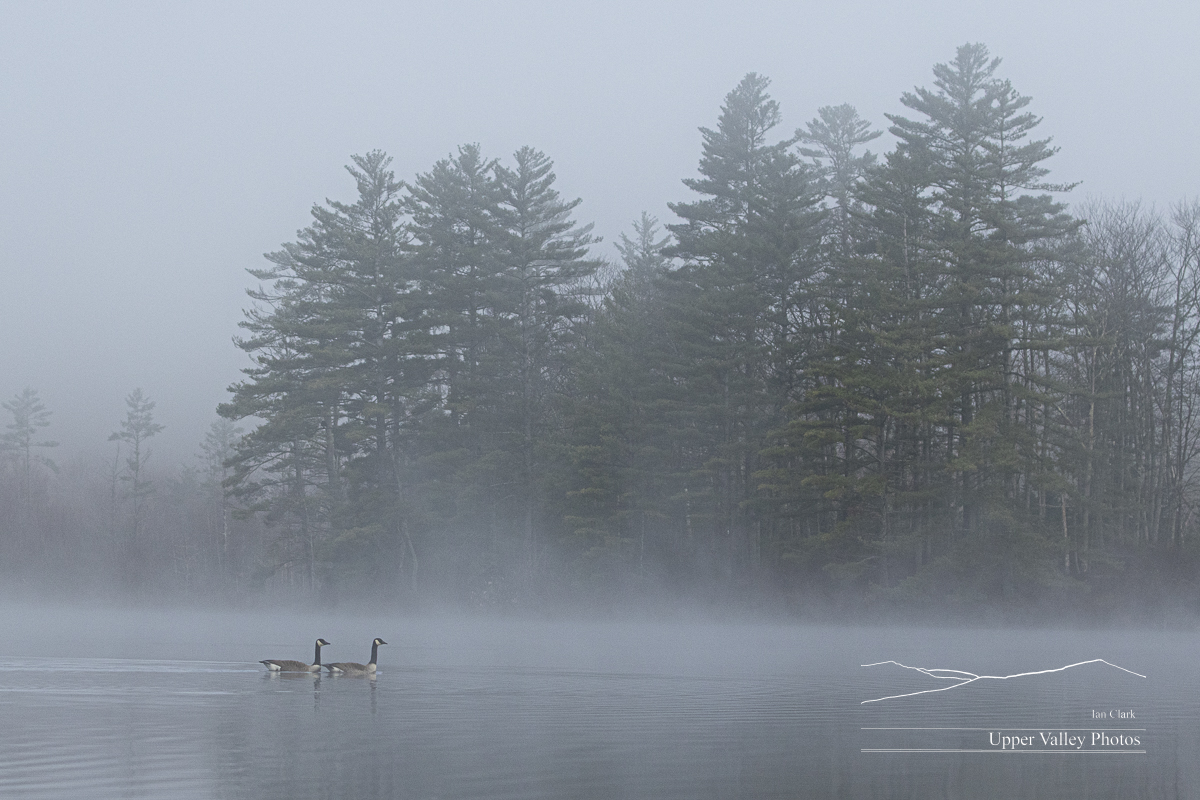
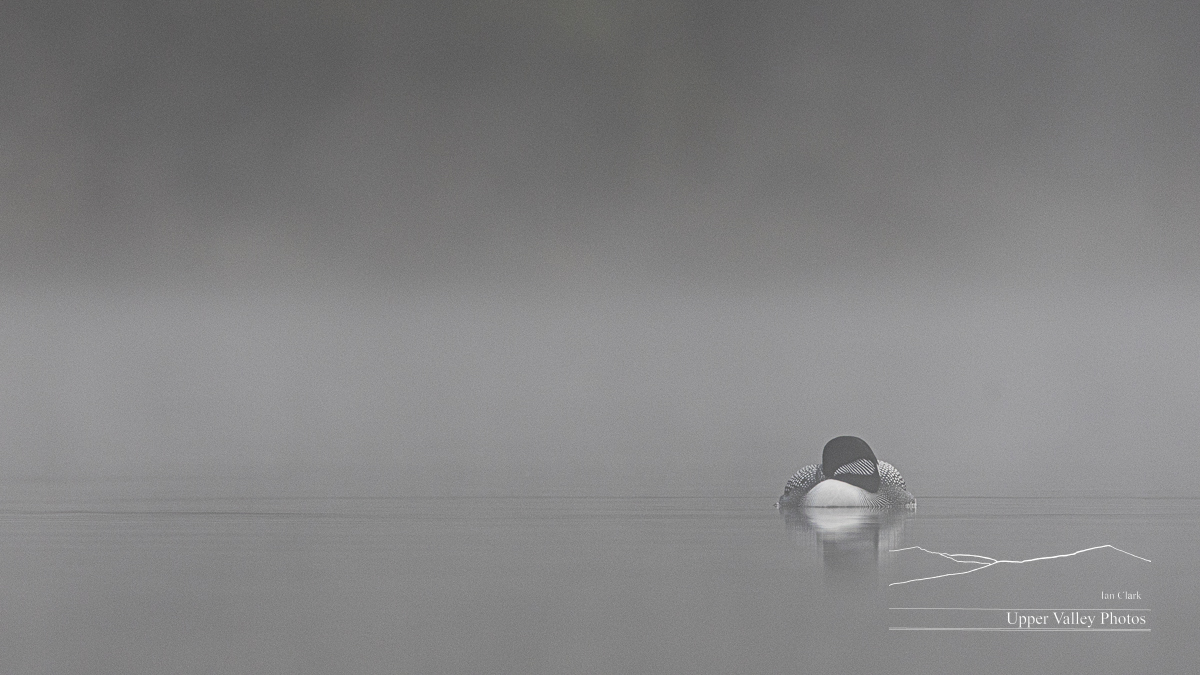
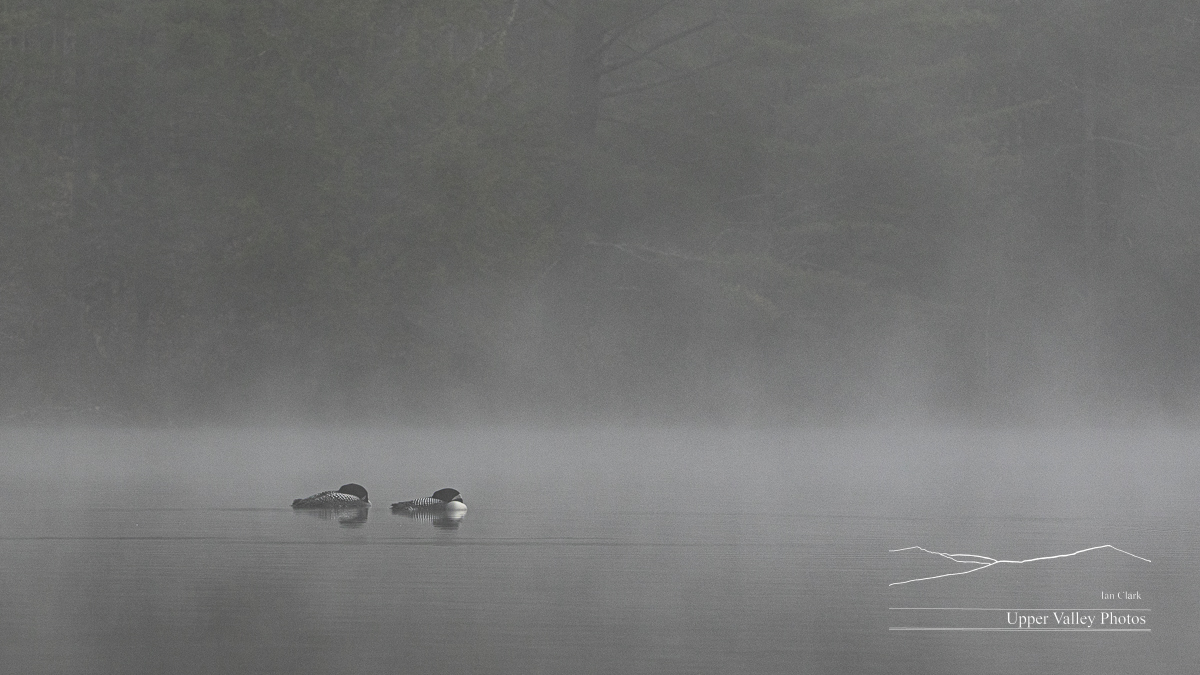
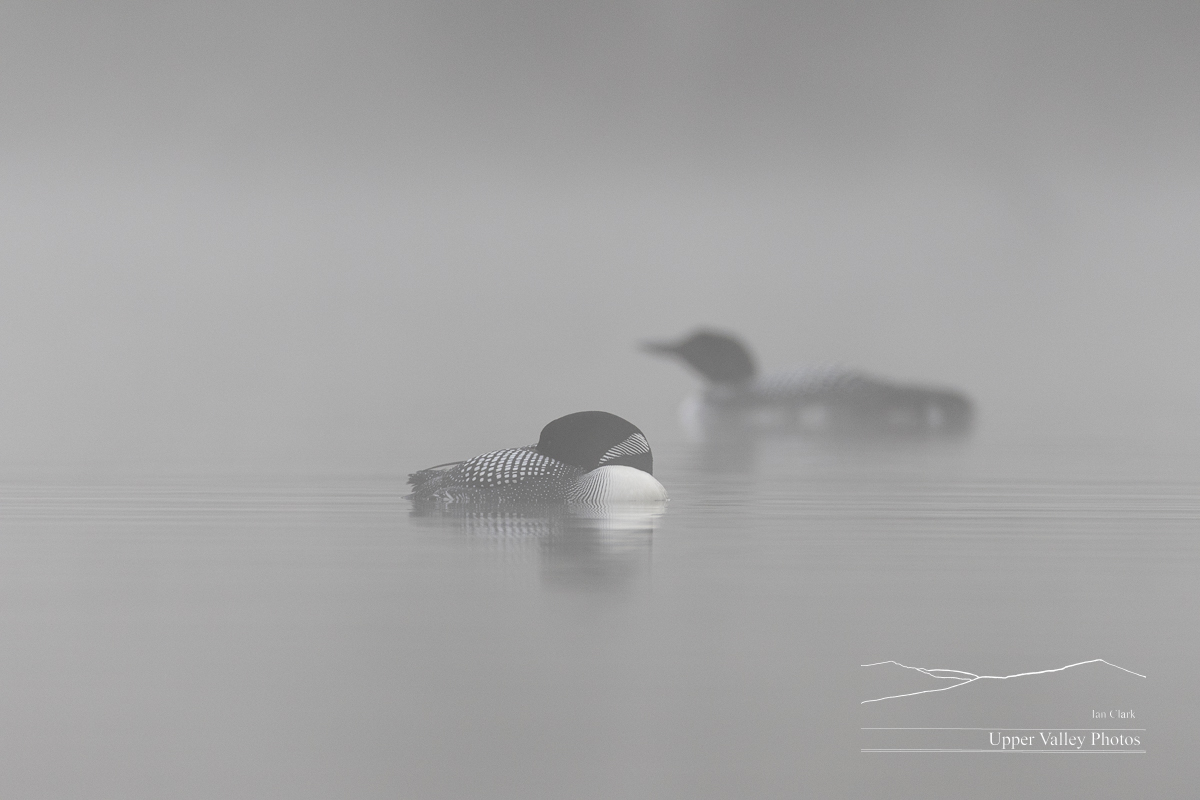
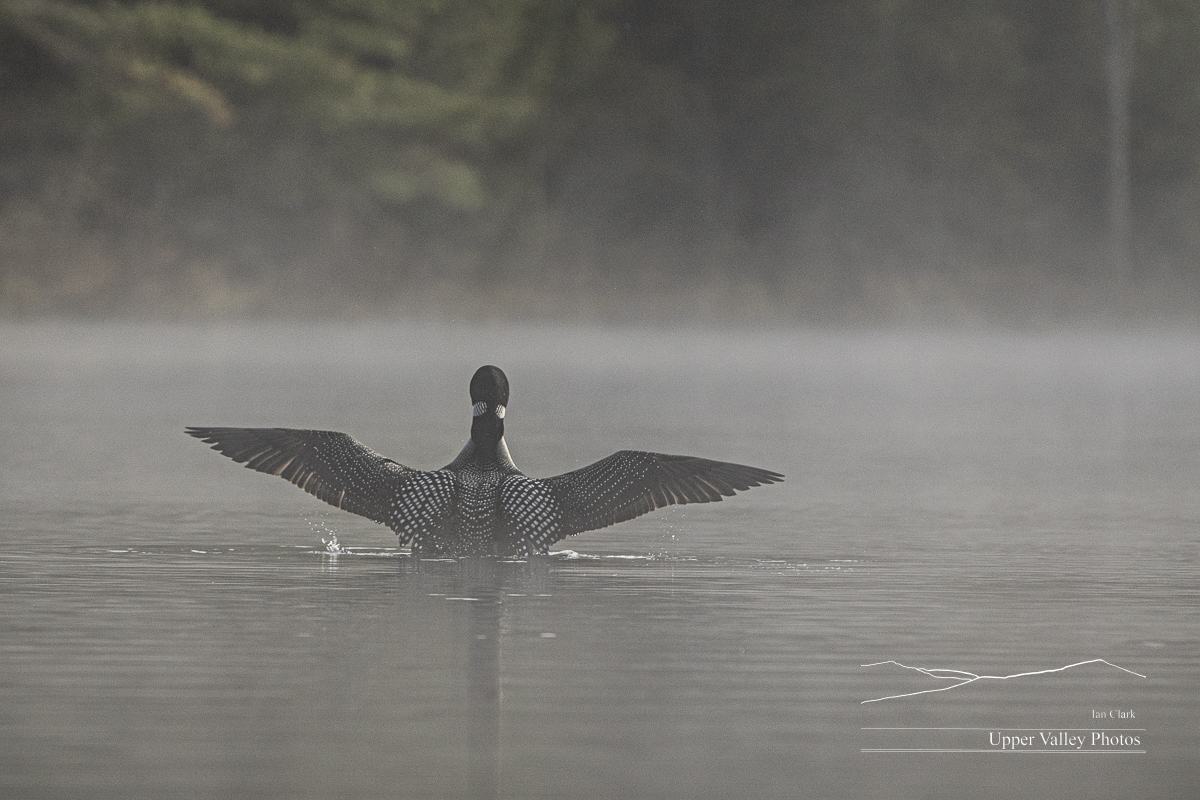
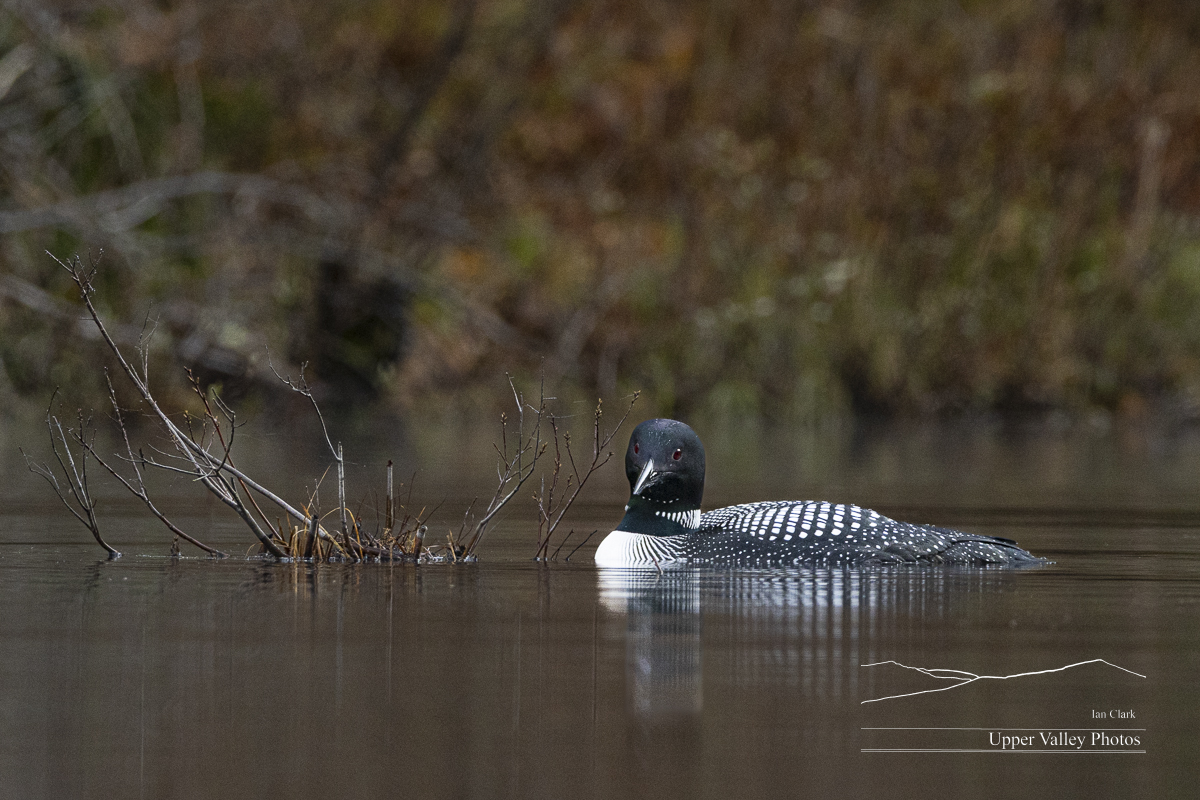
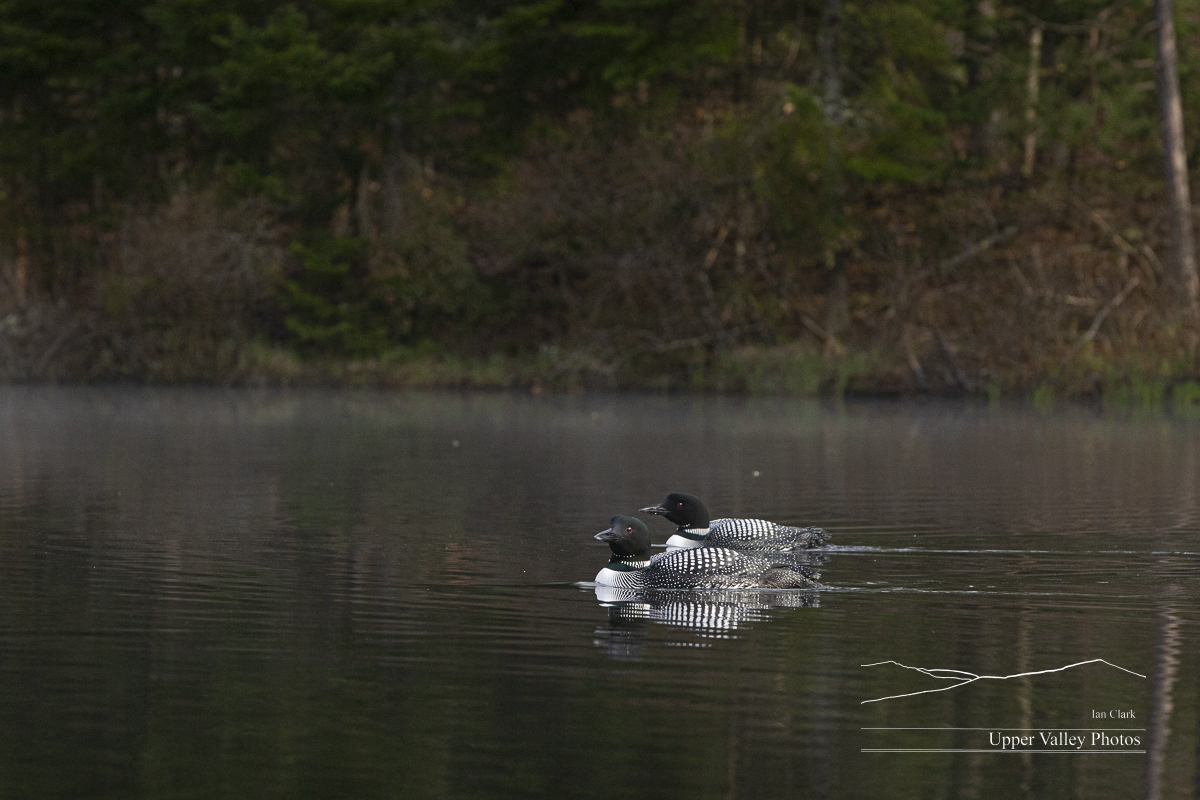


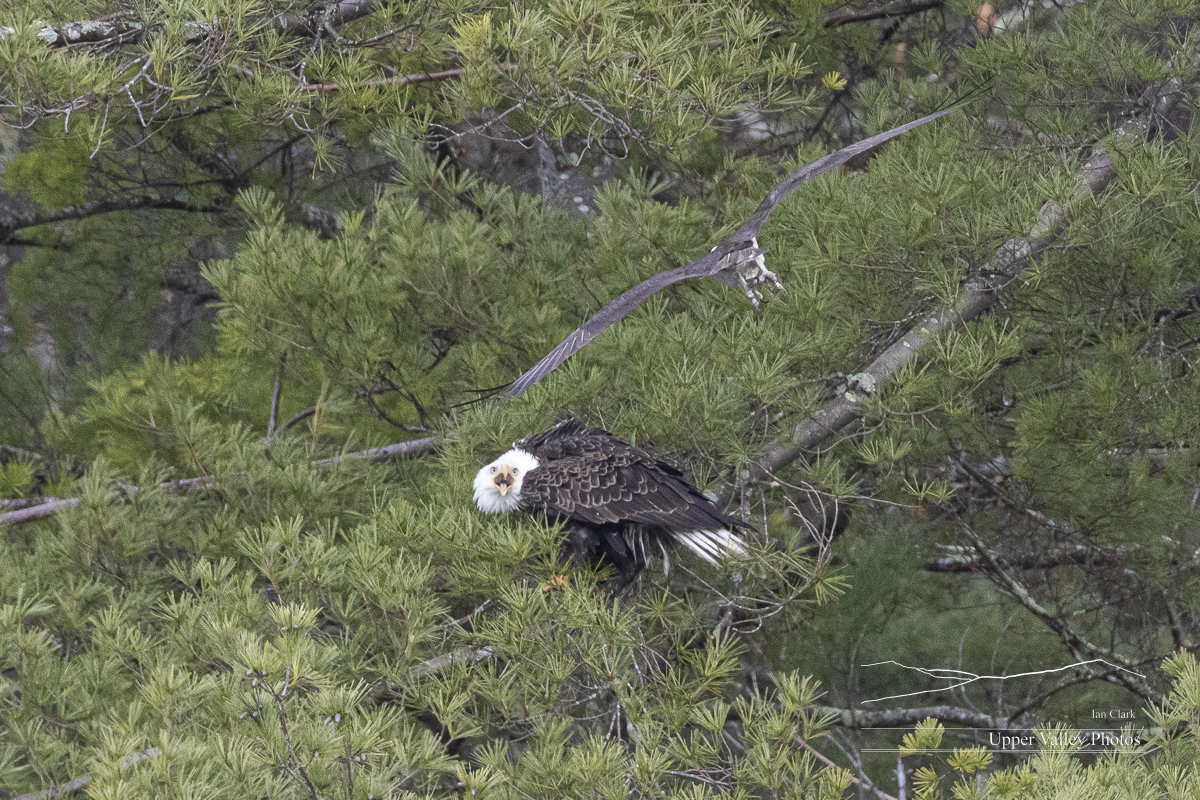
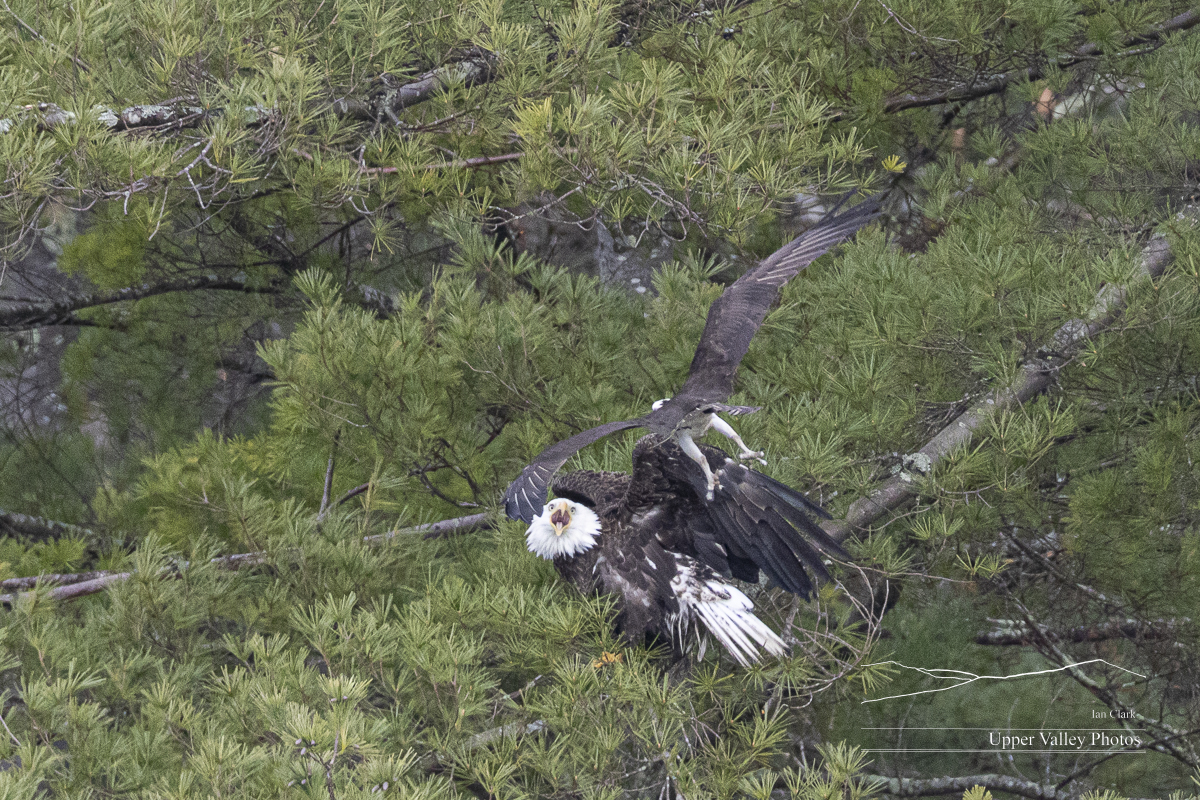
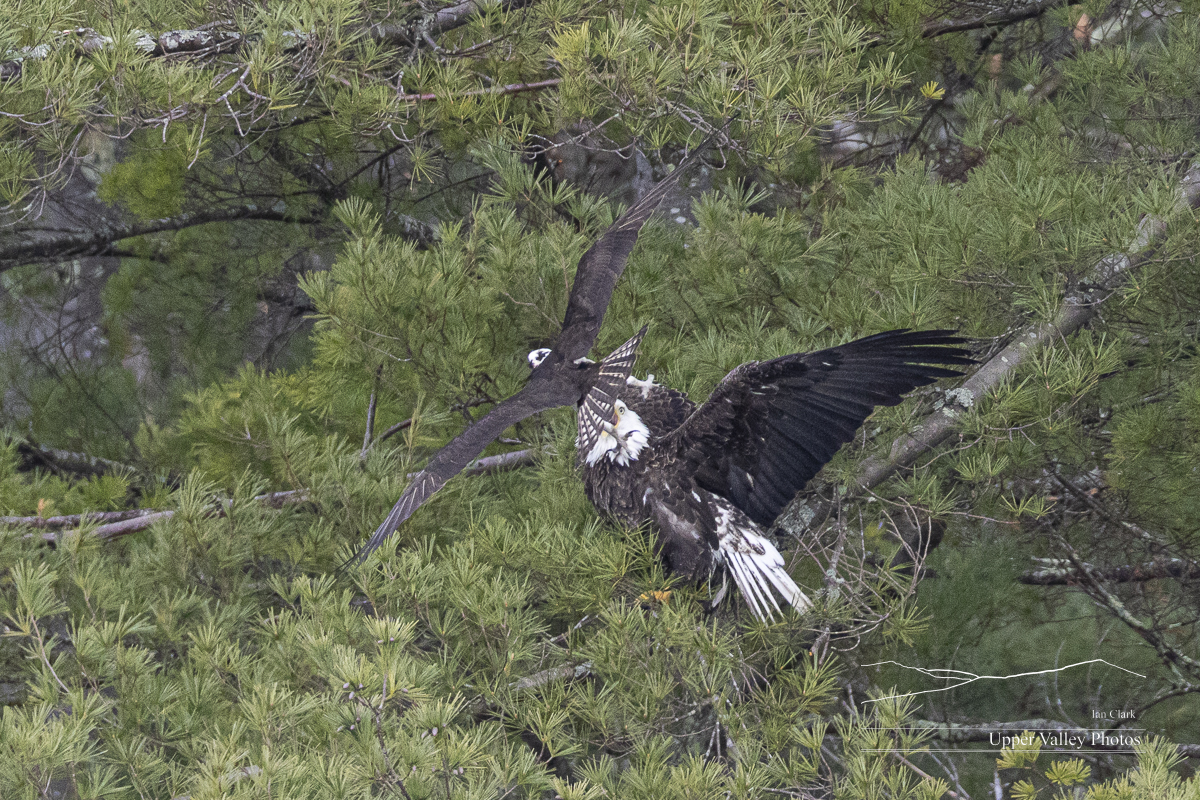
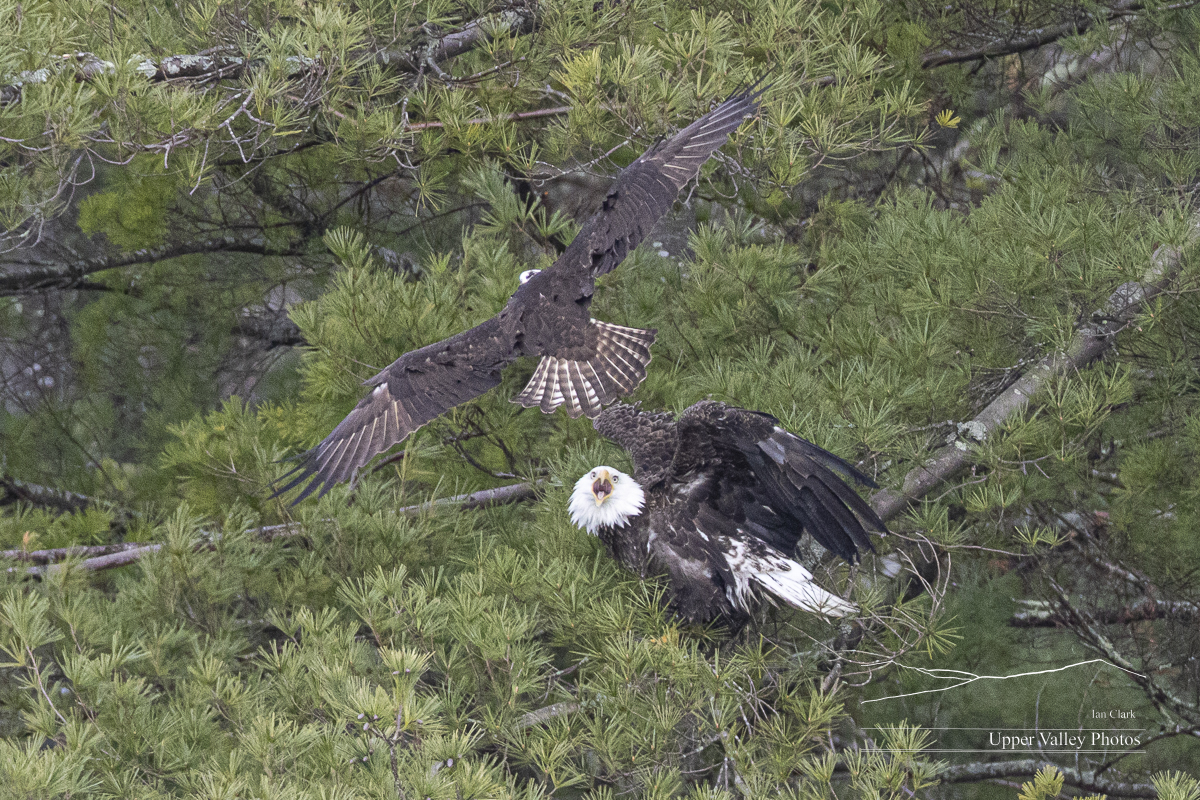
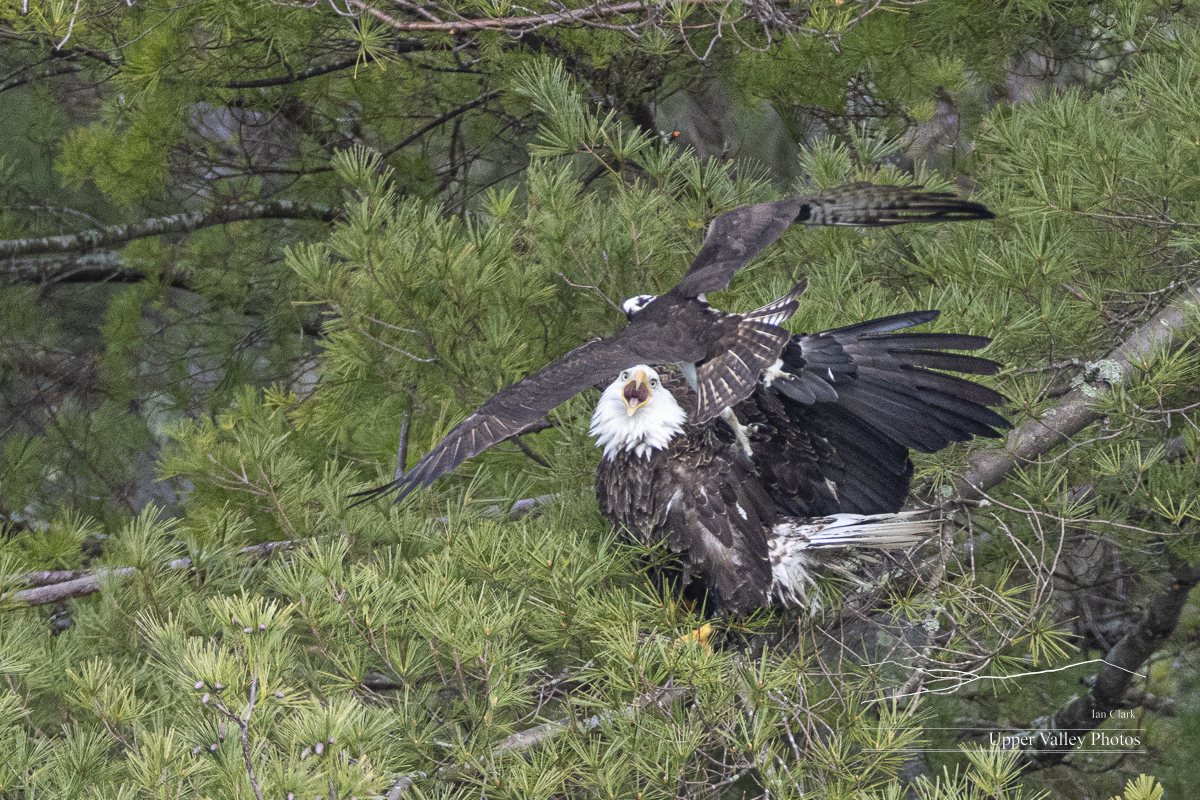
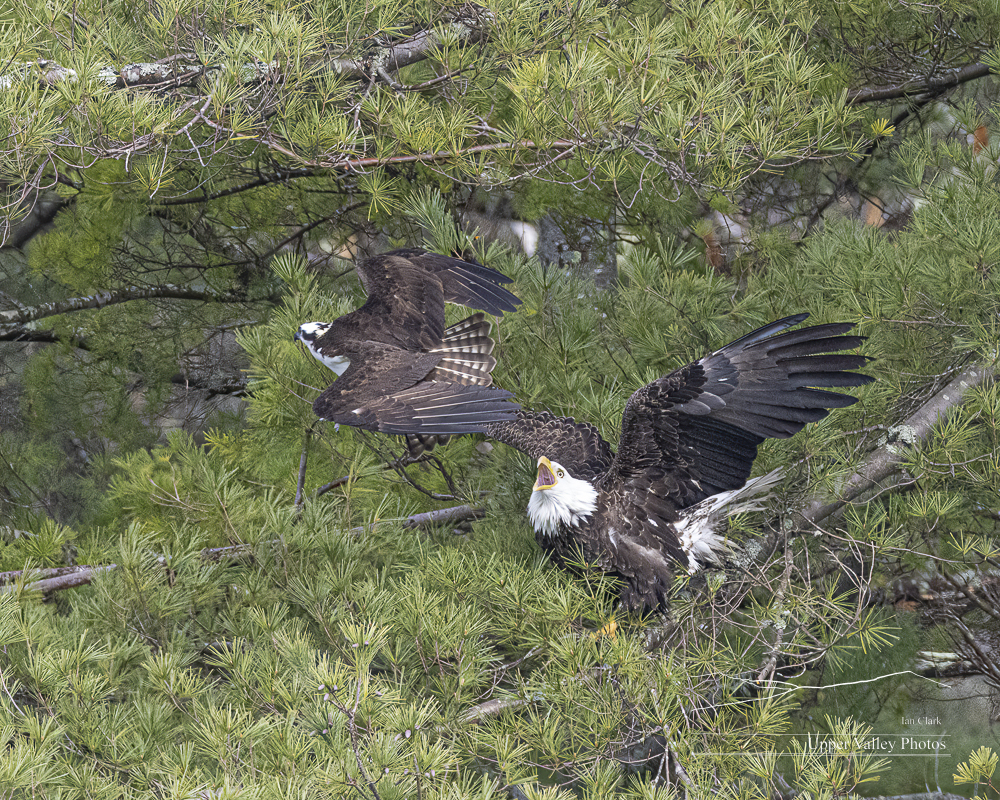
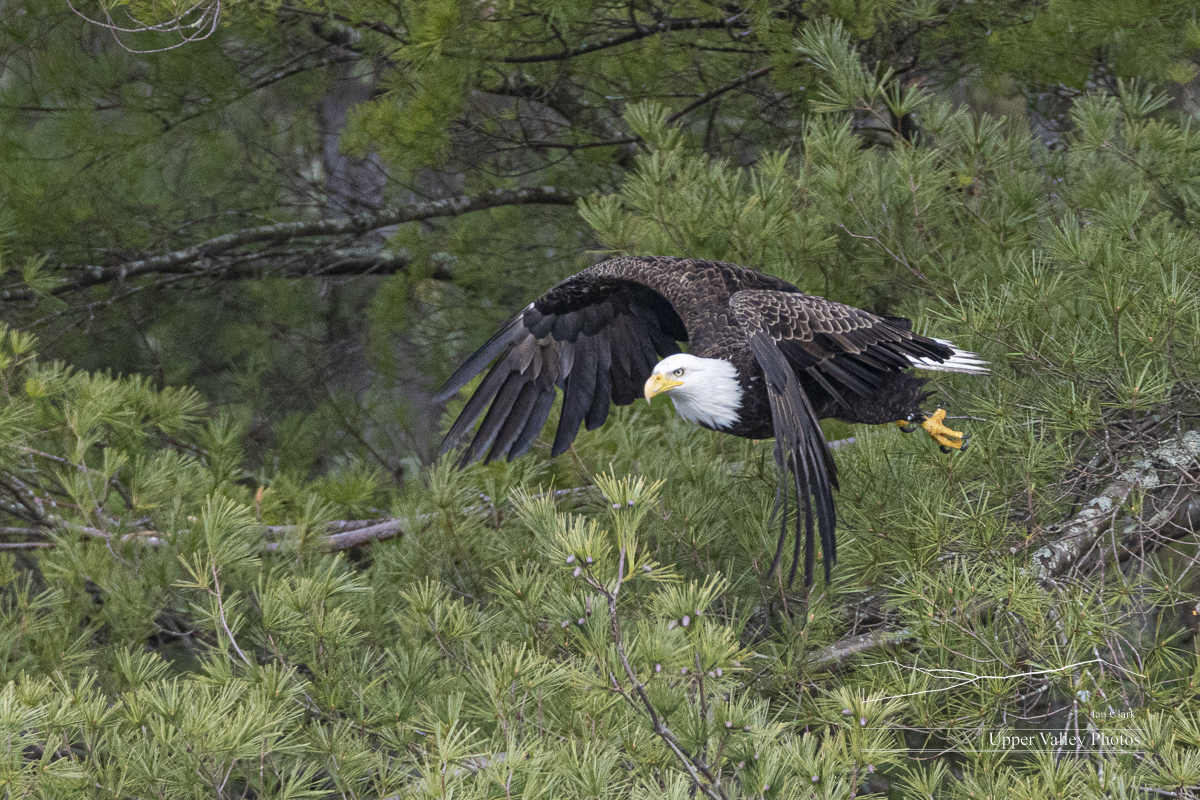
The loons would be rooting for the osprey. Osprey’s diet is almost exclusively fish, they leave the loons alone, while eagles are a very real threat to loon families.
My luck with the weather ran out. A few raindrops remined me that the huskies needed their morning run. I had the boat packed up and was pulling out of the parking spot when the rain hit. The huskies enjoyed romping in the mud when they got their run.
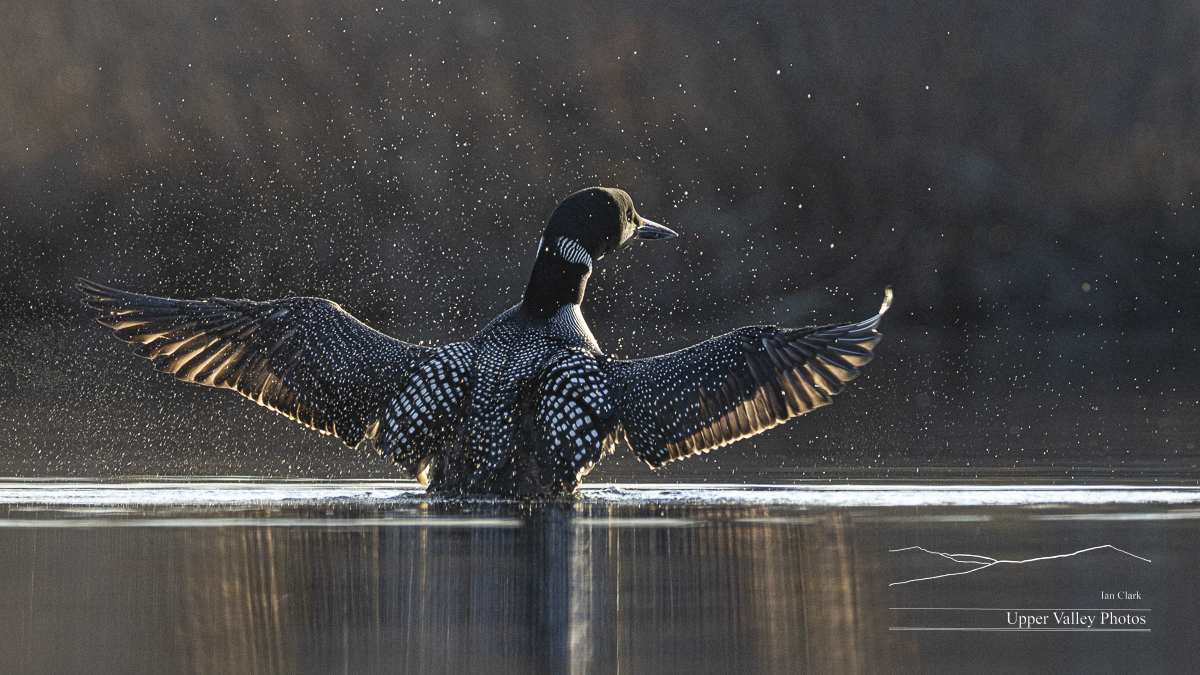
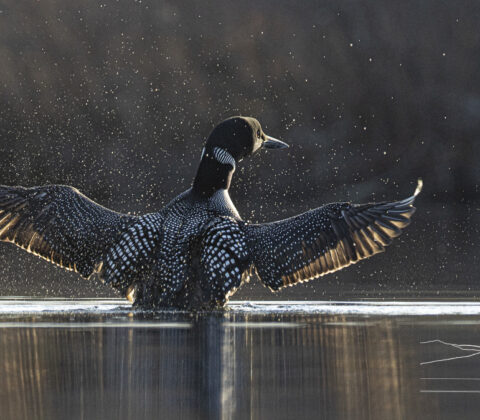
Loons Have Returned to the North Country
Loons have returned to our local ponds. The Westons – the loons on the pond to my west – were spotted a week ago on Monday, April 10. The Middletons – the loons on the pond between the eastern and western ponds I’ve been following – showed up Thursday, April 13.
In other news, our bluebirds have been around the yard regularly. Their camera is supposed to send me a notification when they’re in the box. It hasn’t been sending notifications and has been on my list to fix for a time. Yesterday I went to show off the live feed and found Mrs. Bluebird in the box.

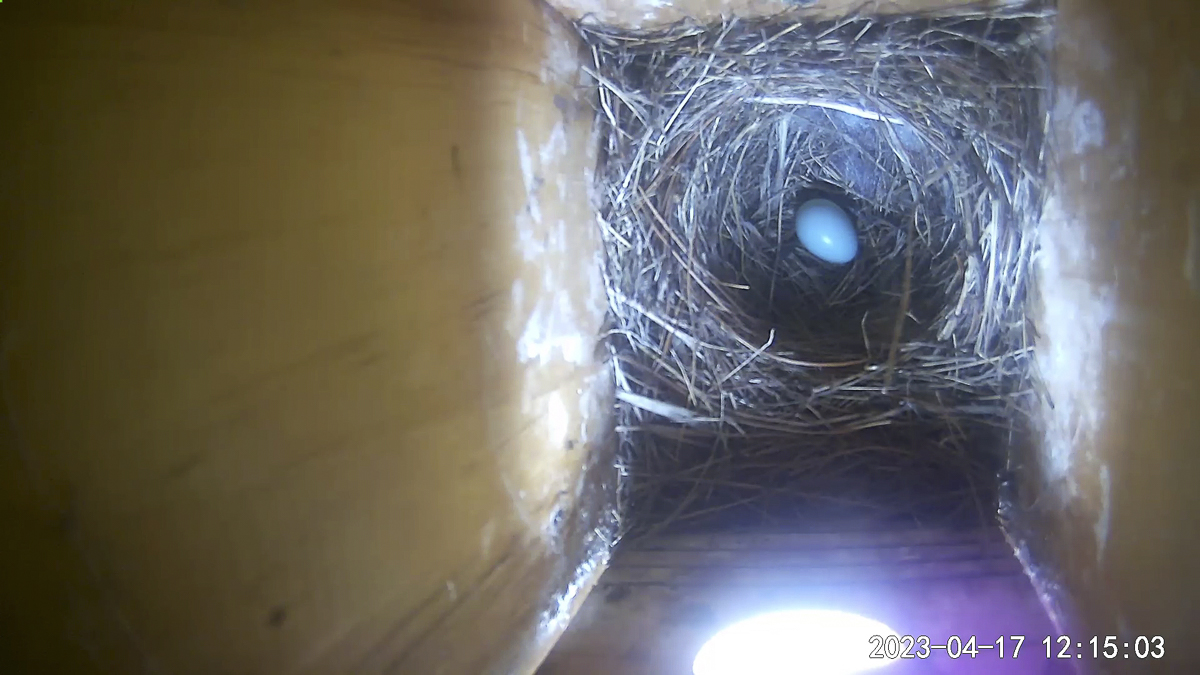
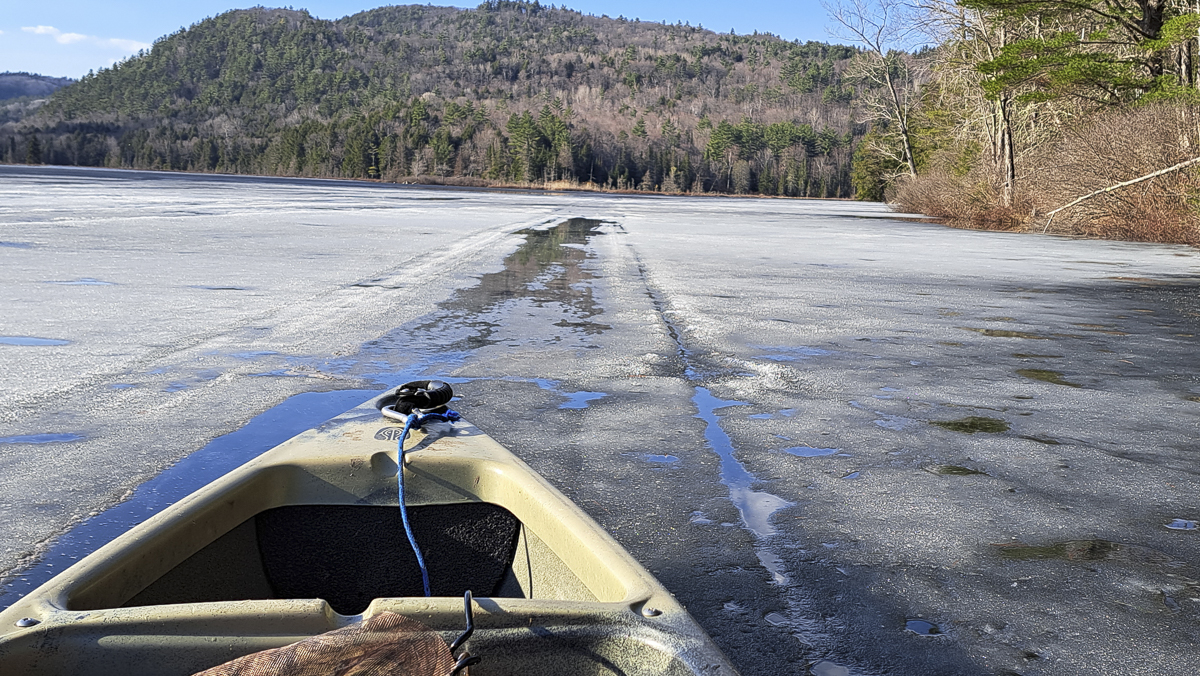
On Friday, I tried the Middletons’ pond. Two loons were foraging together for a time before preening and settling in for a nap.

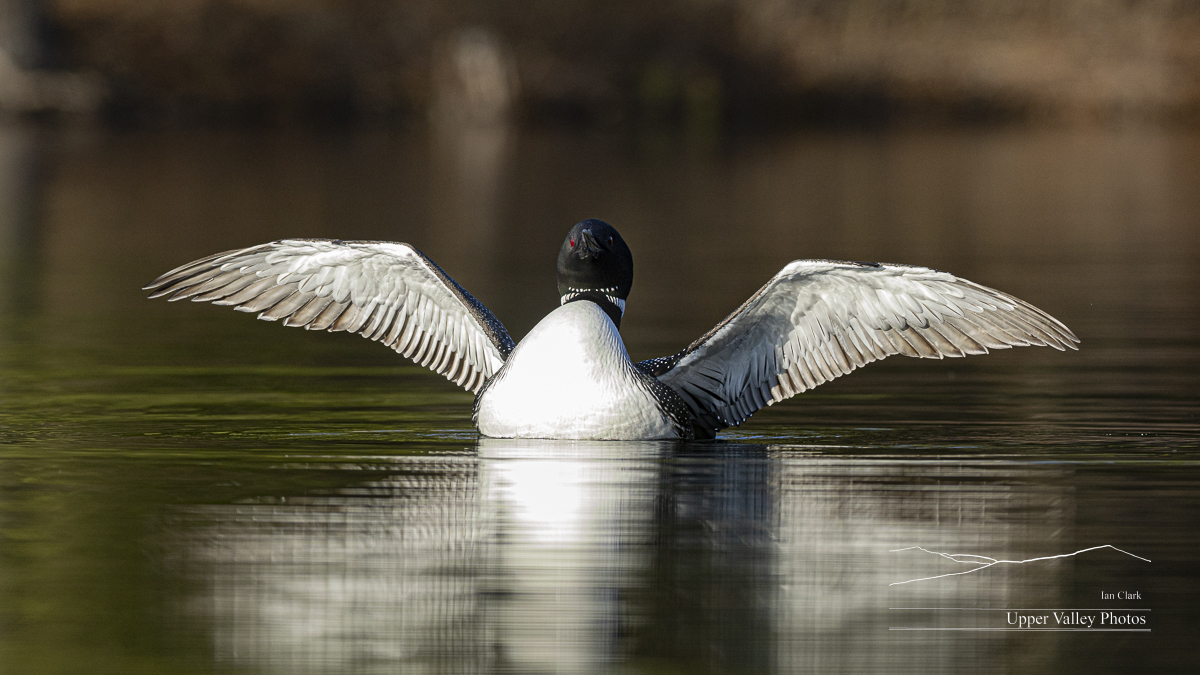
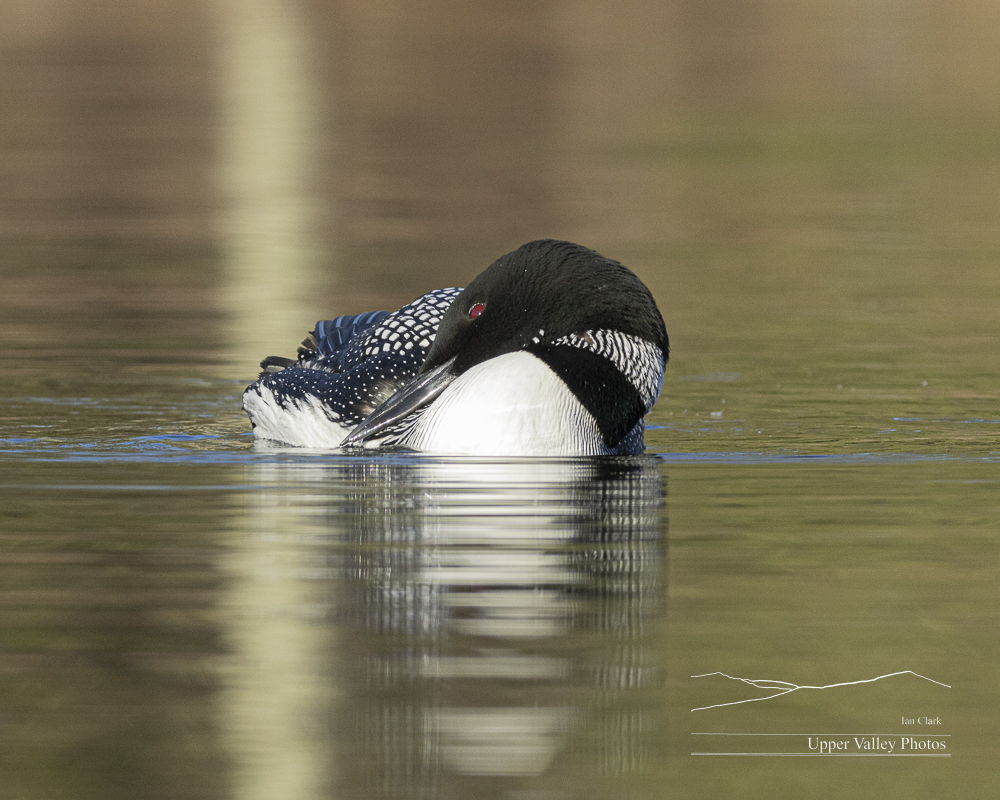

I hope to follow the loons on the same three ponds that I have been watching again this season. You can keep up with their adventures by subscribing. And, if you know someone who enjoys wildlife, please share the blog with them.
A Look Back at Our Loons in 2022
Lazy photographers everywhere squeeze an extra post out of their favorite pix of the previous year. Why should I be different? Let’s look at some of my favorite pix of our loon families from last summer.
If you liked following the loons on my blog, you might be interested in seeing my presentation An Uncommon Look at the Common Loon. I’ve put together a PowerPoint presentation with some natural history of loons and we’ll follow a loon family from nest to the chicks in flight. I’ll be giving the presentation a couple times this week.
The first presentation will be at the Thompson Center in Woodstock, VT, this Thursday, January 12, at 1:00 p.m. The second presentation will be at the Blake Memorial Library in East Corinth, VT, this Friday, January 13, at 6:30 p.m. Both are free and everyone welcome.
And, if your interests include steam locomotives, I’ll be giving my presentation Under Steam at the Bugbee Senior Center in White River Jct., VT, on Wednesday, January 25 at 1:00 p.m. We’ll take a look at some of the US’s remaining operating steam locomotives. I’ve been tracking down the last steam engines since the 1970s, this show looks at the highlights from coast to coast. Also free and everyone welcome.
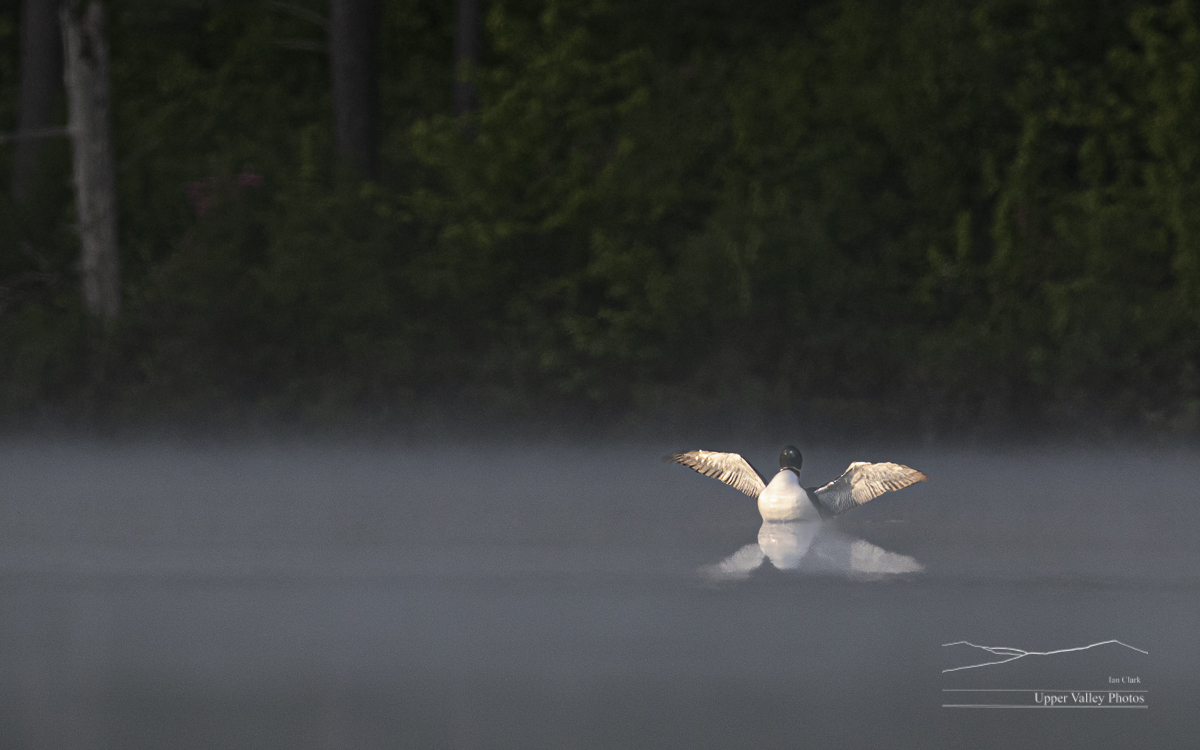

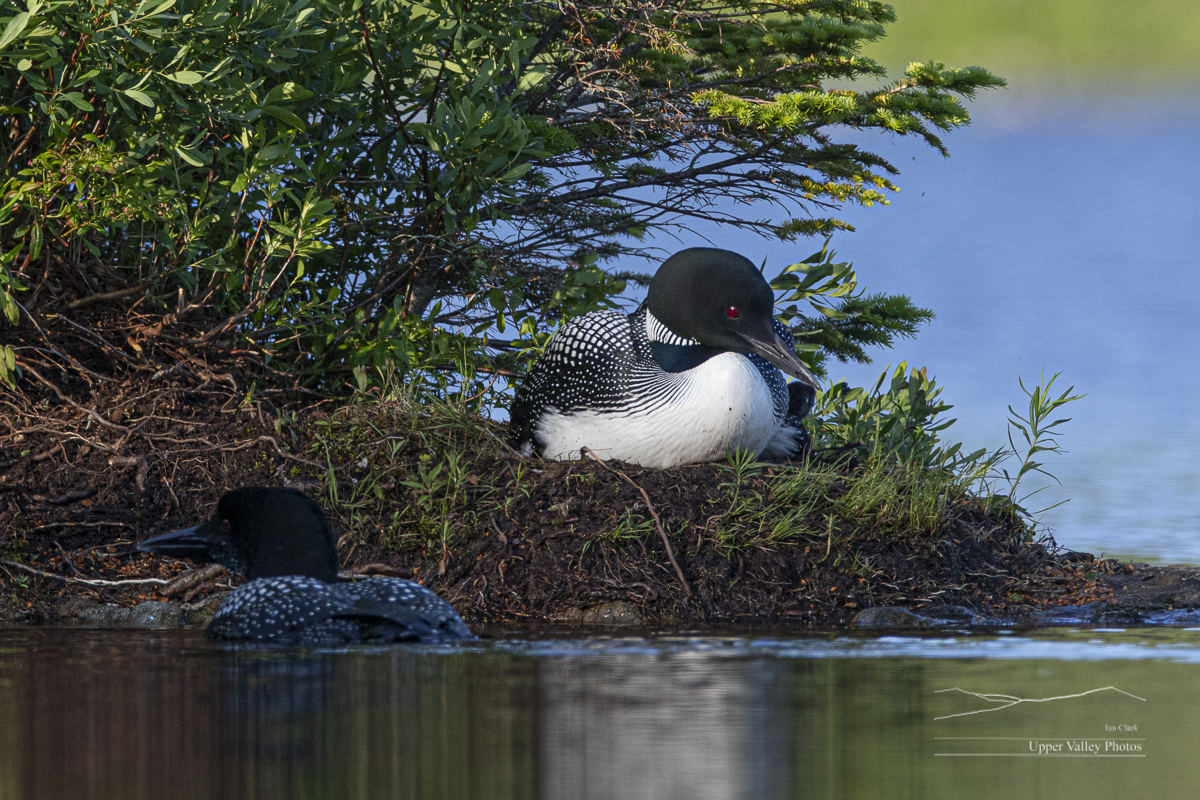
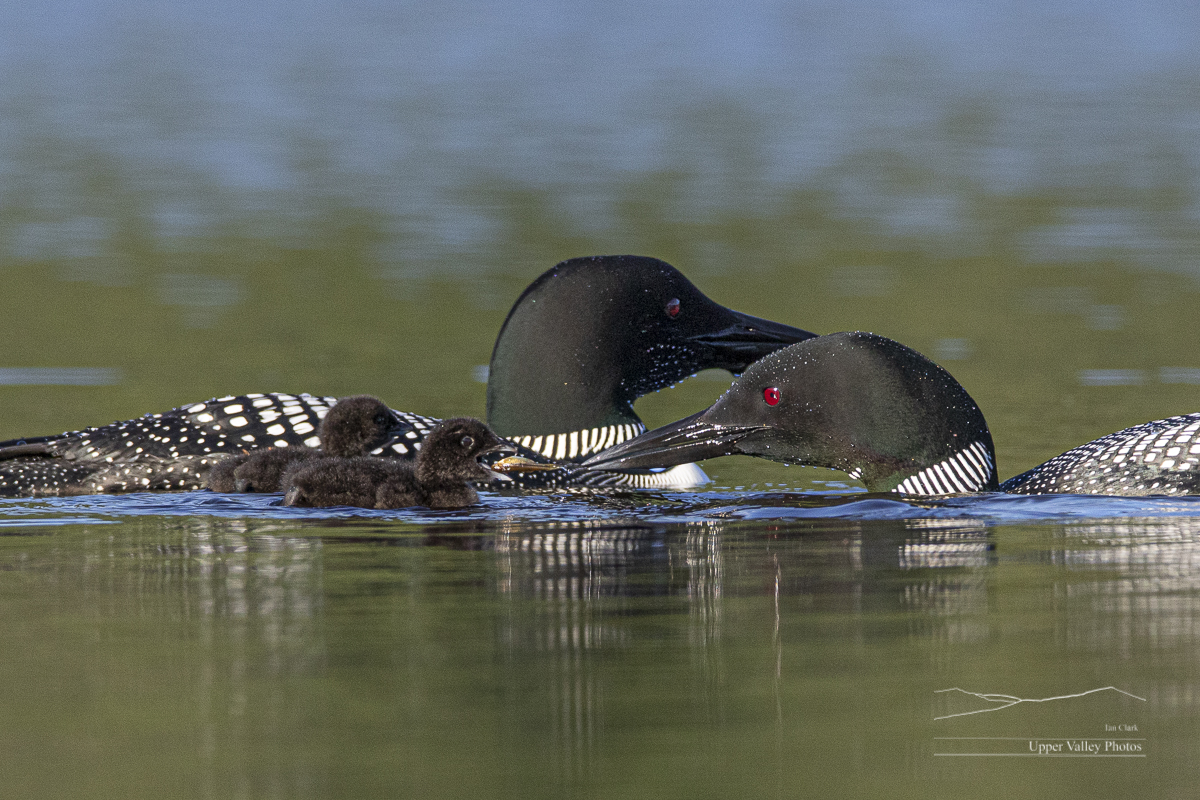
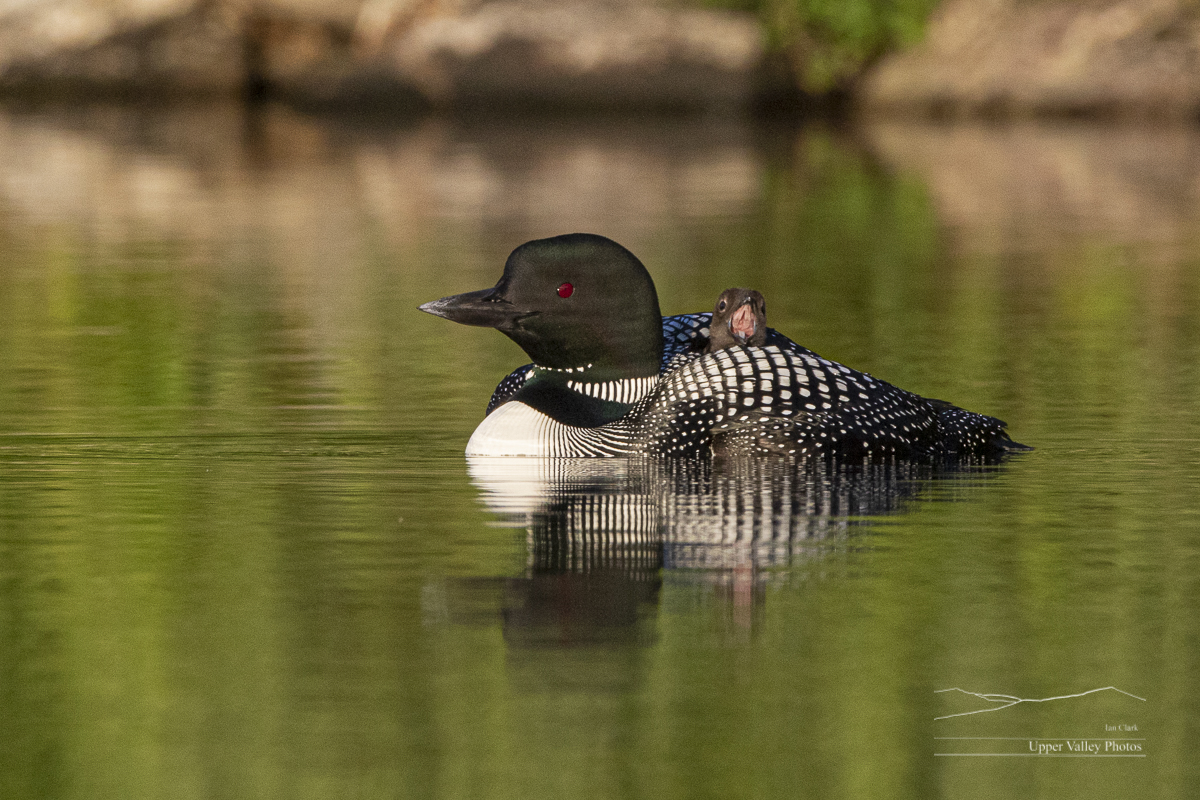

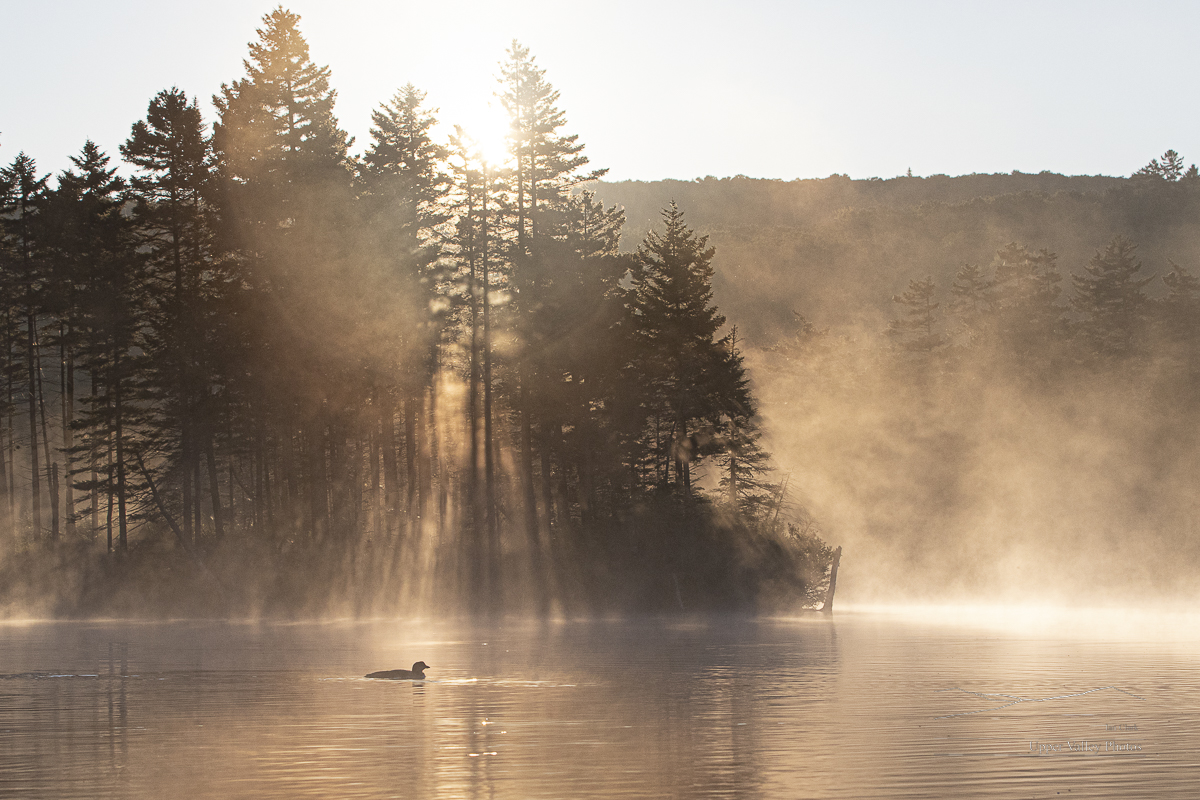


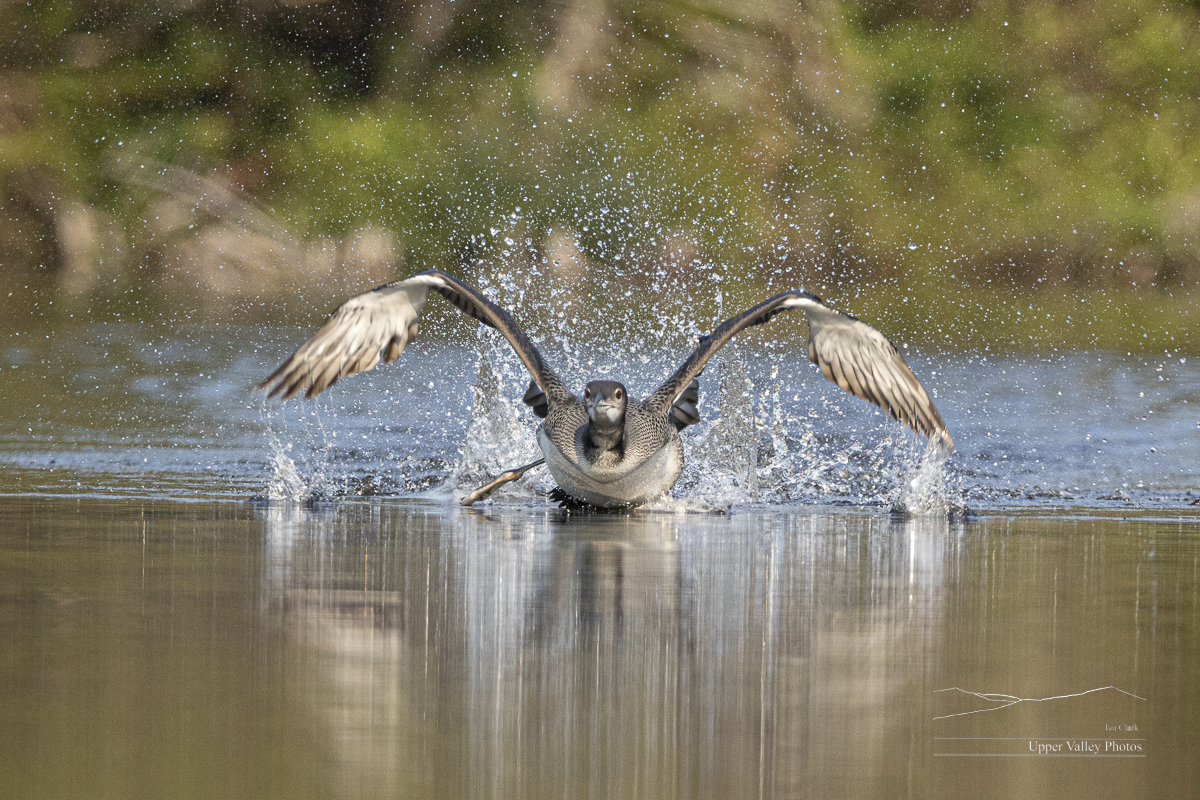
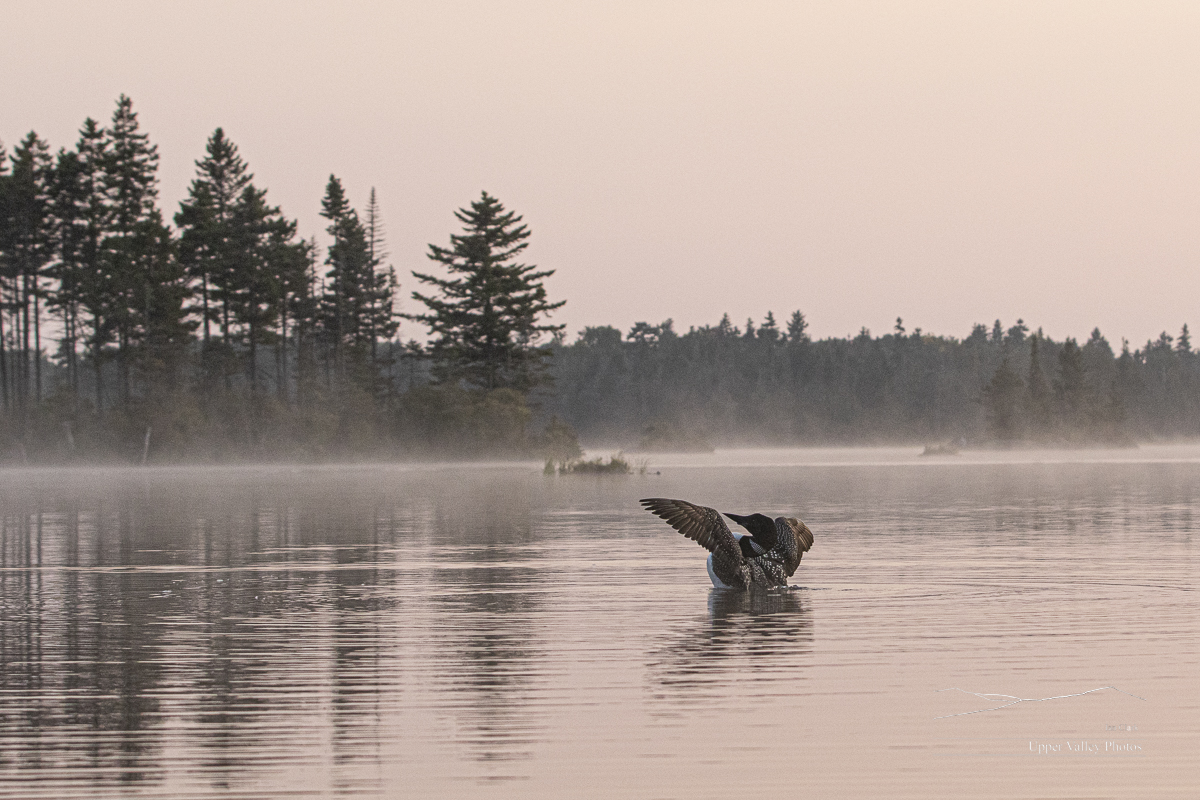
One Loon Family Still Here
Dawn yesterday found a cloudless sky and with the temperature here on the hill at 32°, I figured I could get the kayak around the pond. I headed north to check on the Westons. This is the family that faced intruders for several weeks in the spring. They hatched two chicks and one survives and is 15 weeks old.
I’ve got a couple appearances coming up. Wednesday October 26, I’ll be at the Bugbee Senior Center at 1:00 p.m.with my slideshow An Uncommon Look at the Common Loon. The show is open to the public, see the details on their site: https://www.bugbeecenter.org/activity/special-events/bugbeetalks/.
There’s a photographic print version of An Uncommon Look which I’ll be hanging at the Kellogg-Hubbard Memorial Library in Montpelier on November 1. It will stay up until November 30. I’ll be giving An Uncommon Look at 6:30 p.m. on November 9 at the Library. Free and open to the public.
And, I’ll be at Craft Vermont November 18-20, 2022 at the DoubleTree in South Burlington. Come on by and say hello.
When I got to the loon’s pond, the sun had yet to hit the tops of the trees along the west side of the pond and it was a refreshing 29°. There was only the slightest trace of ice along the shore, no problem for a kayak.
While I was launching the kayak, I noticed what looked to be a large hawk land in a tree towards the other end of the pond. Too far away for a good ID and with the loons talking I headed out to find them.
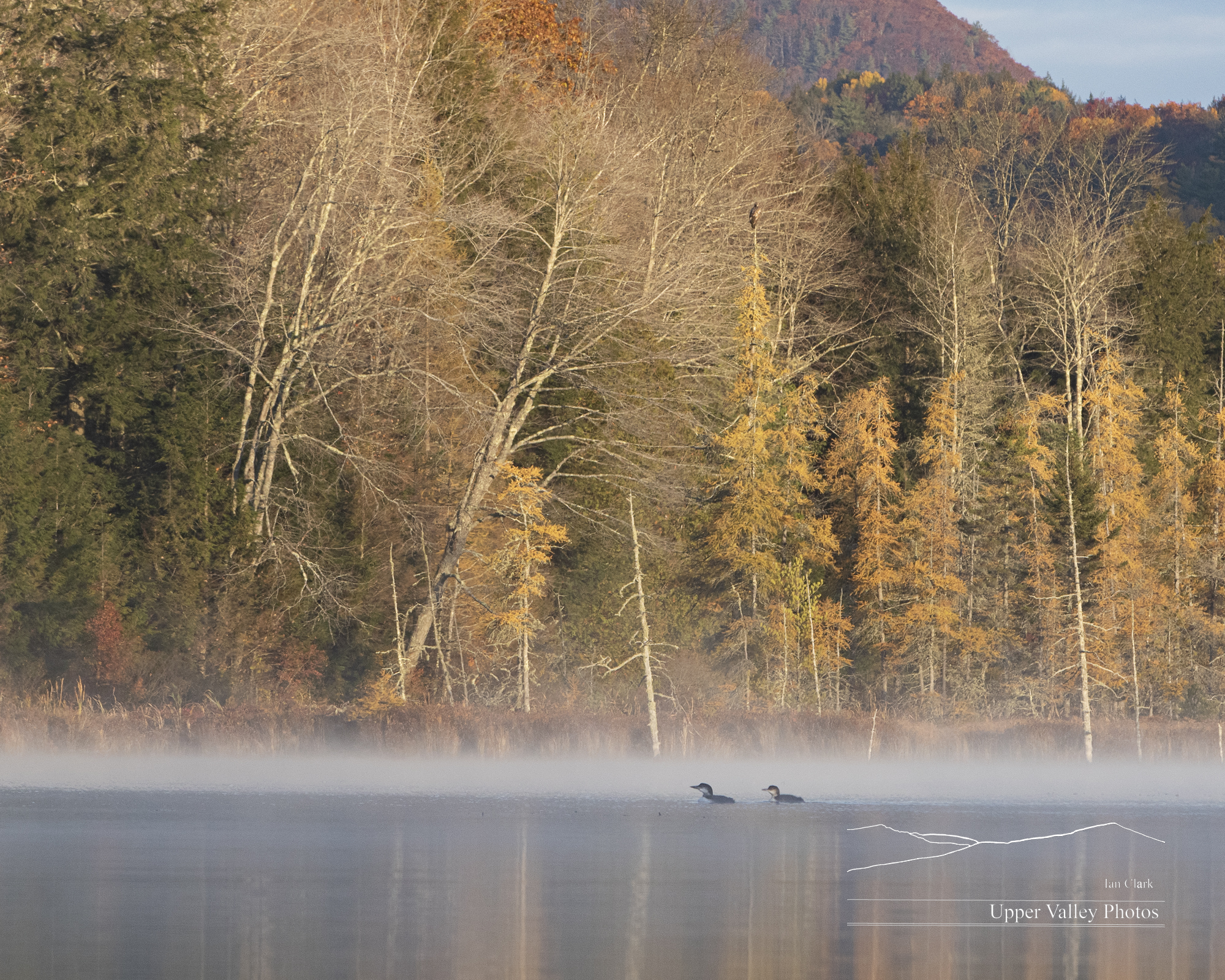
There were two loons on the pond. One I suspect is mom, the other is our surviving chick. When I found thems, they appeared agitated. They were swimming back and forth, fairly rapidly and making low hooting calls. After I watched for a few minutes, it occurred to me to check that hawk out. It turned out to be a juvenile bald eagle. One of the residents on the pond told me earlier that a young eagle had been harassing the chick. The eagle is at the top of the tree just right of center.

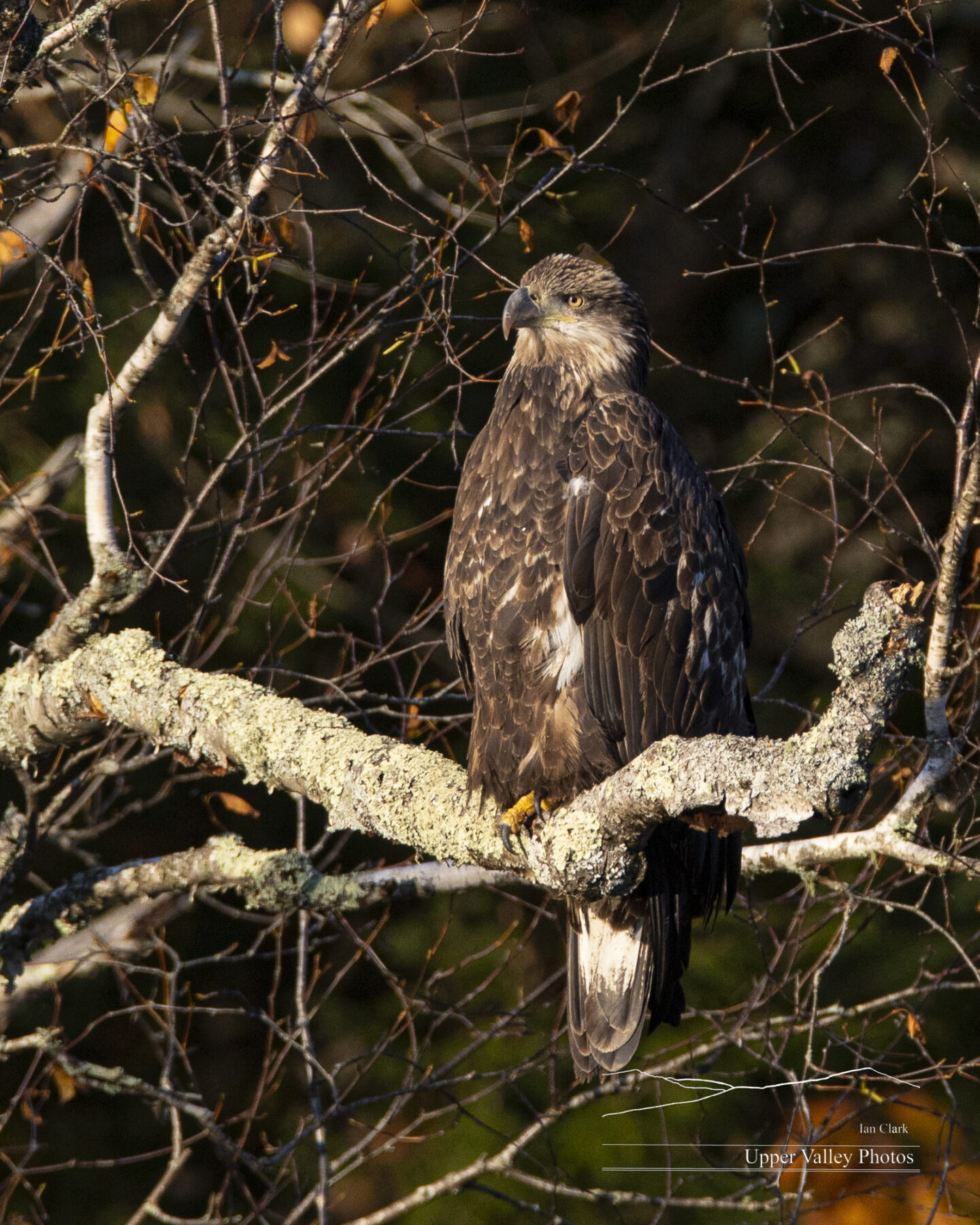

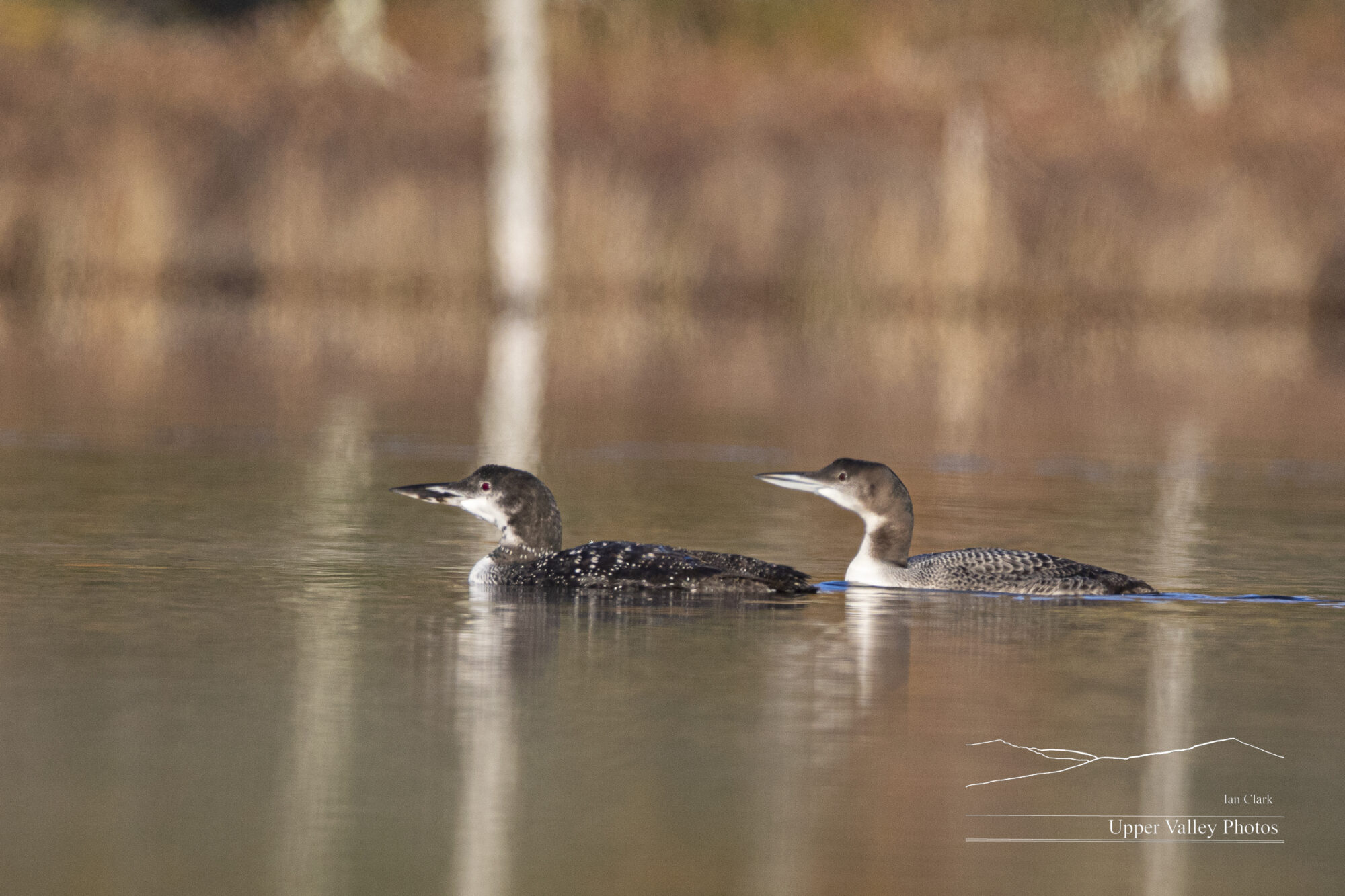
I suspect that’s mom in front. My guess is based on not hearing the adult loon yodel. The male on the pond this year was not shy about yodeling at eagles or most anything that moved along the shore. Our chick is a male, he tried a couple of yodels that didn’t impress the eagles. Note that mom has pretty much changed into her winter plumage.

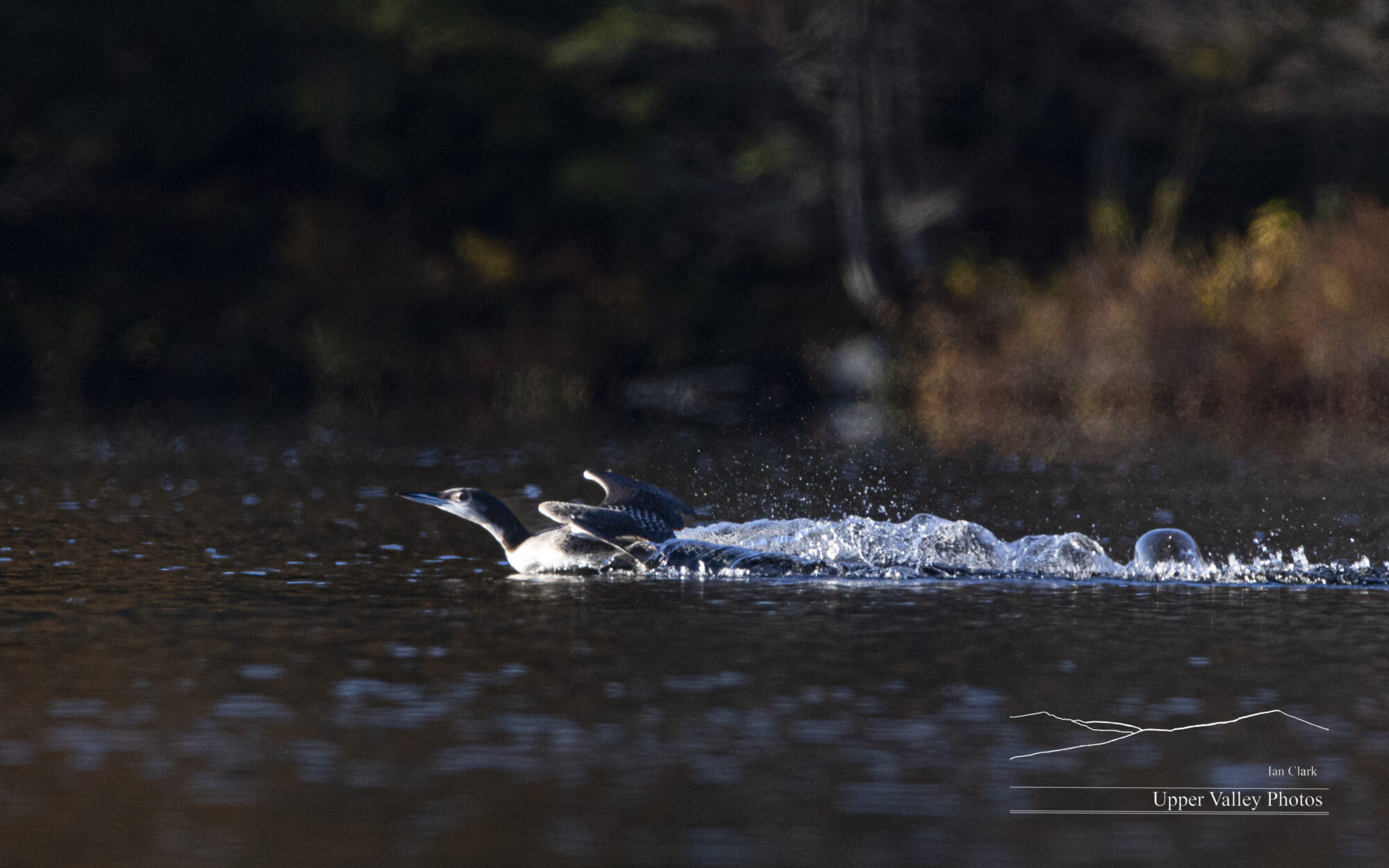
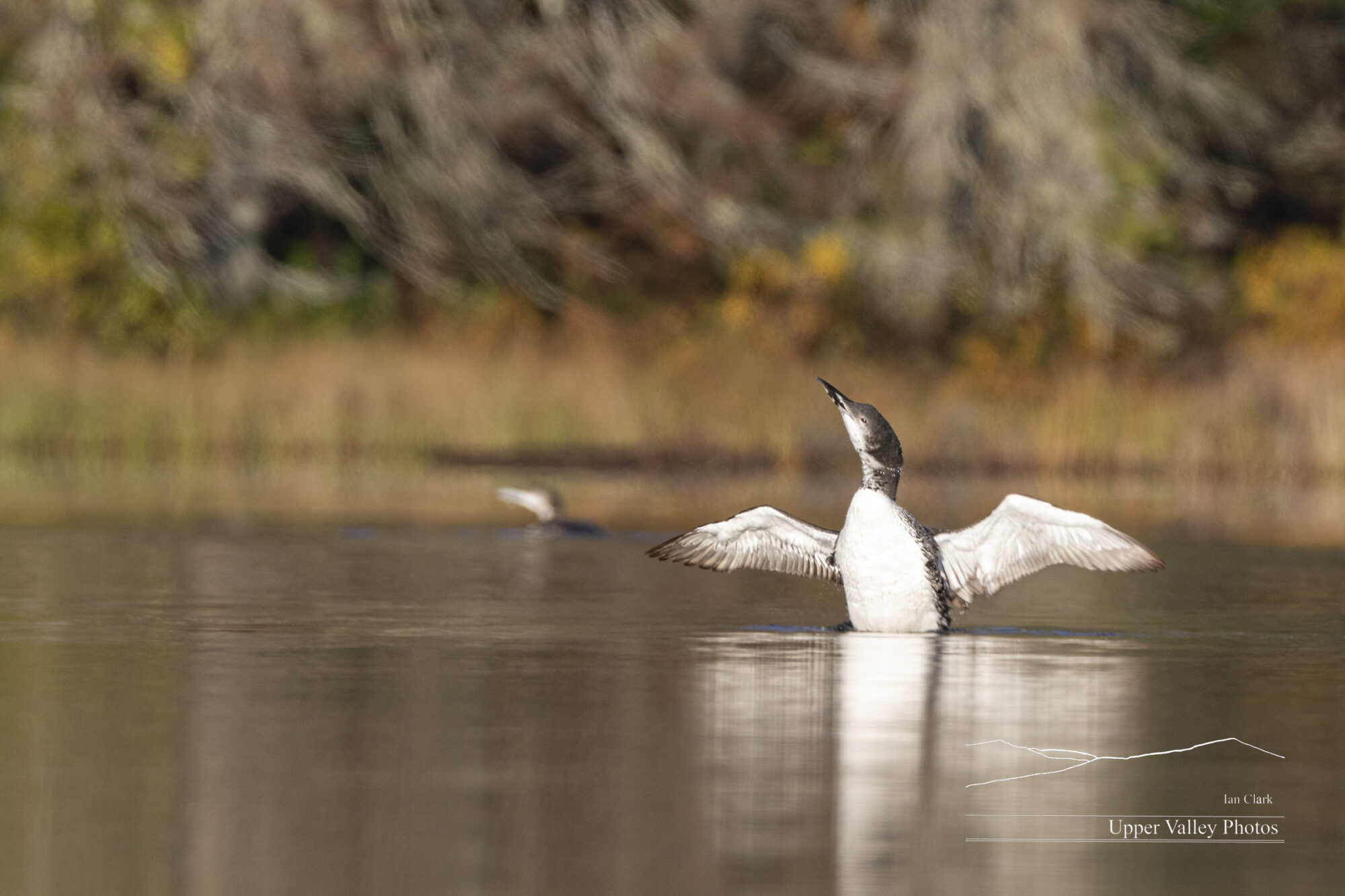
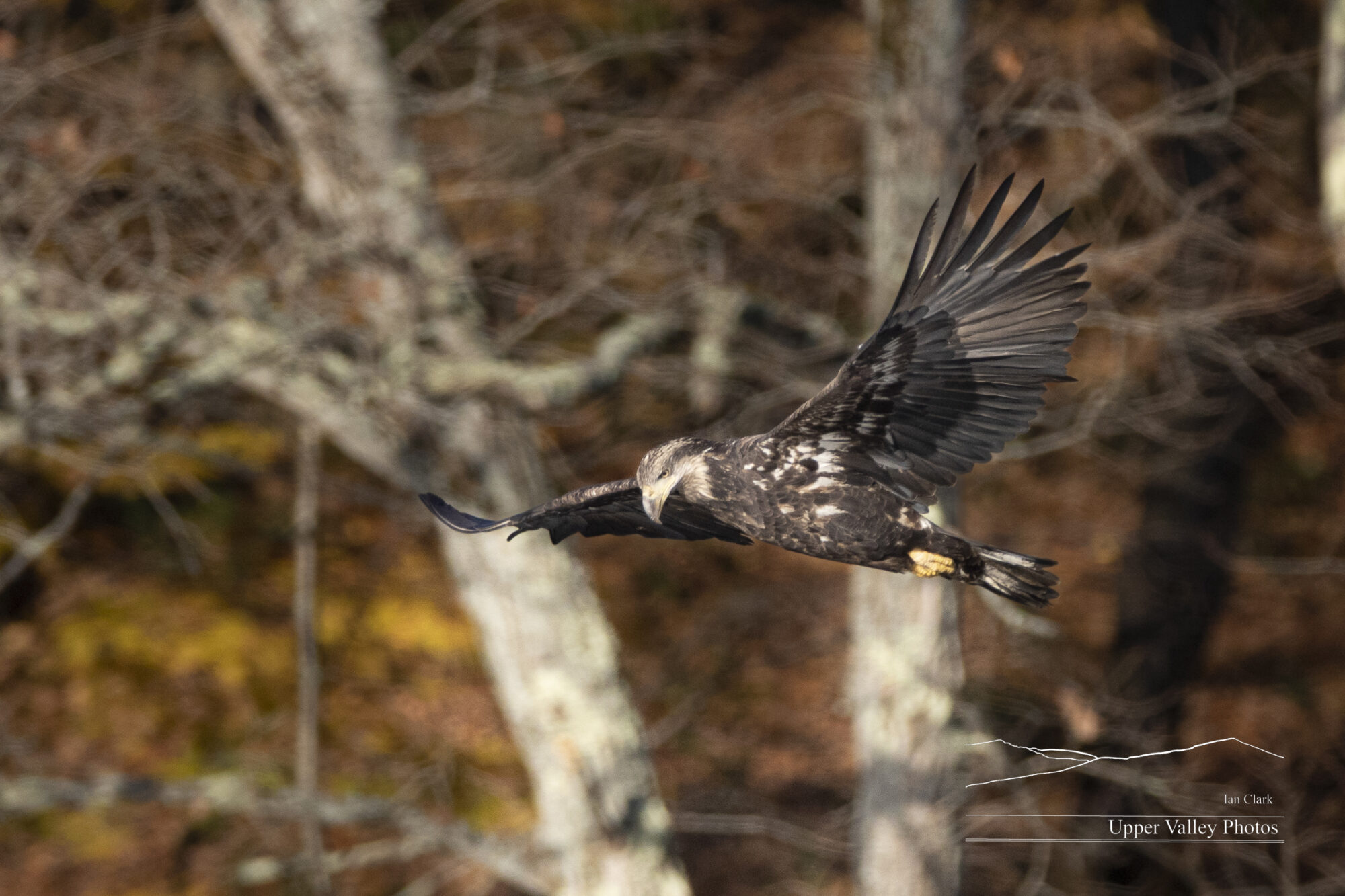


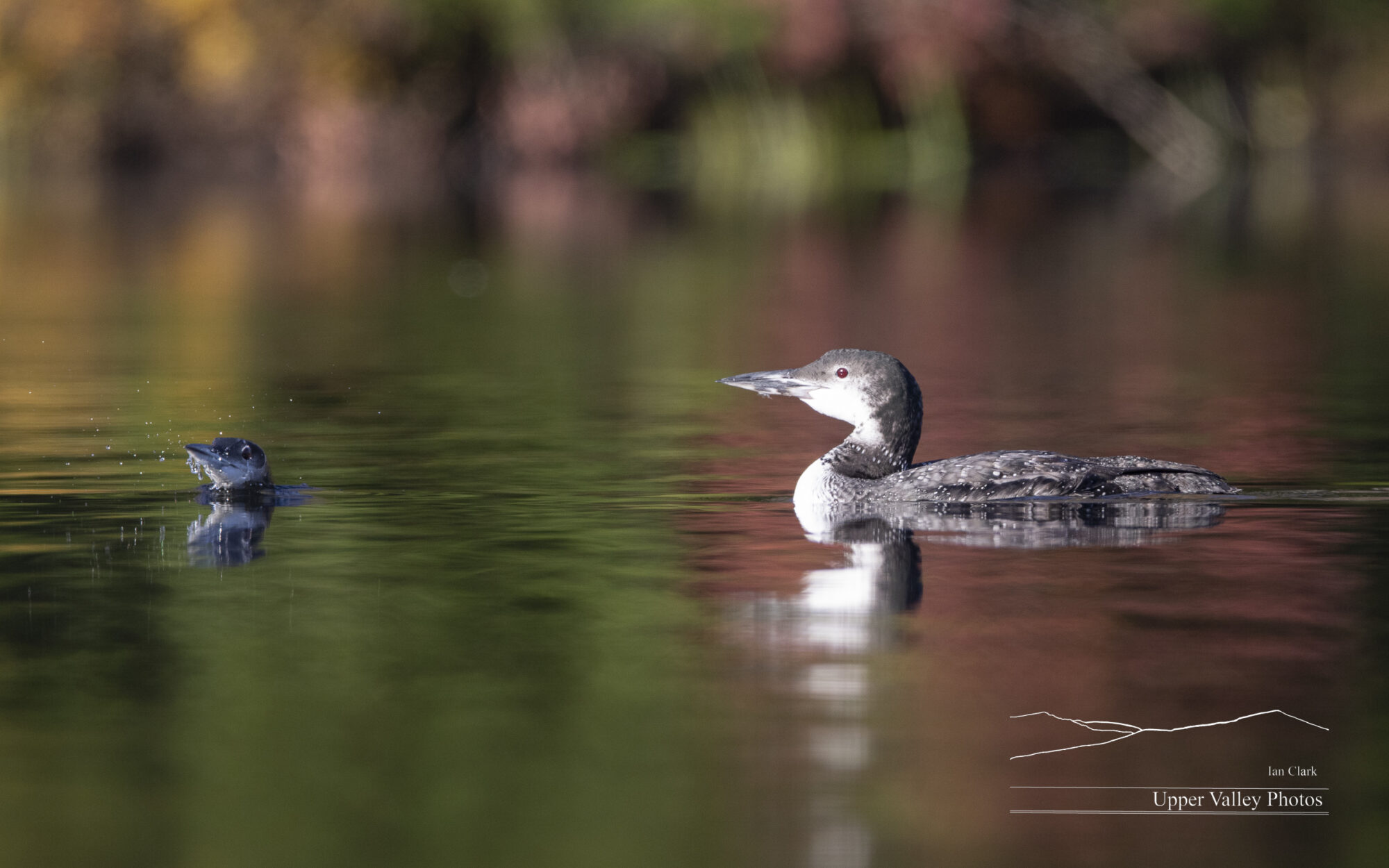
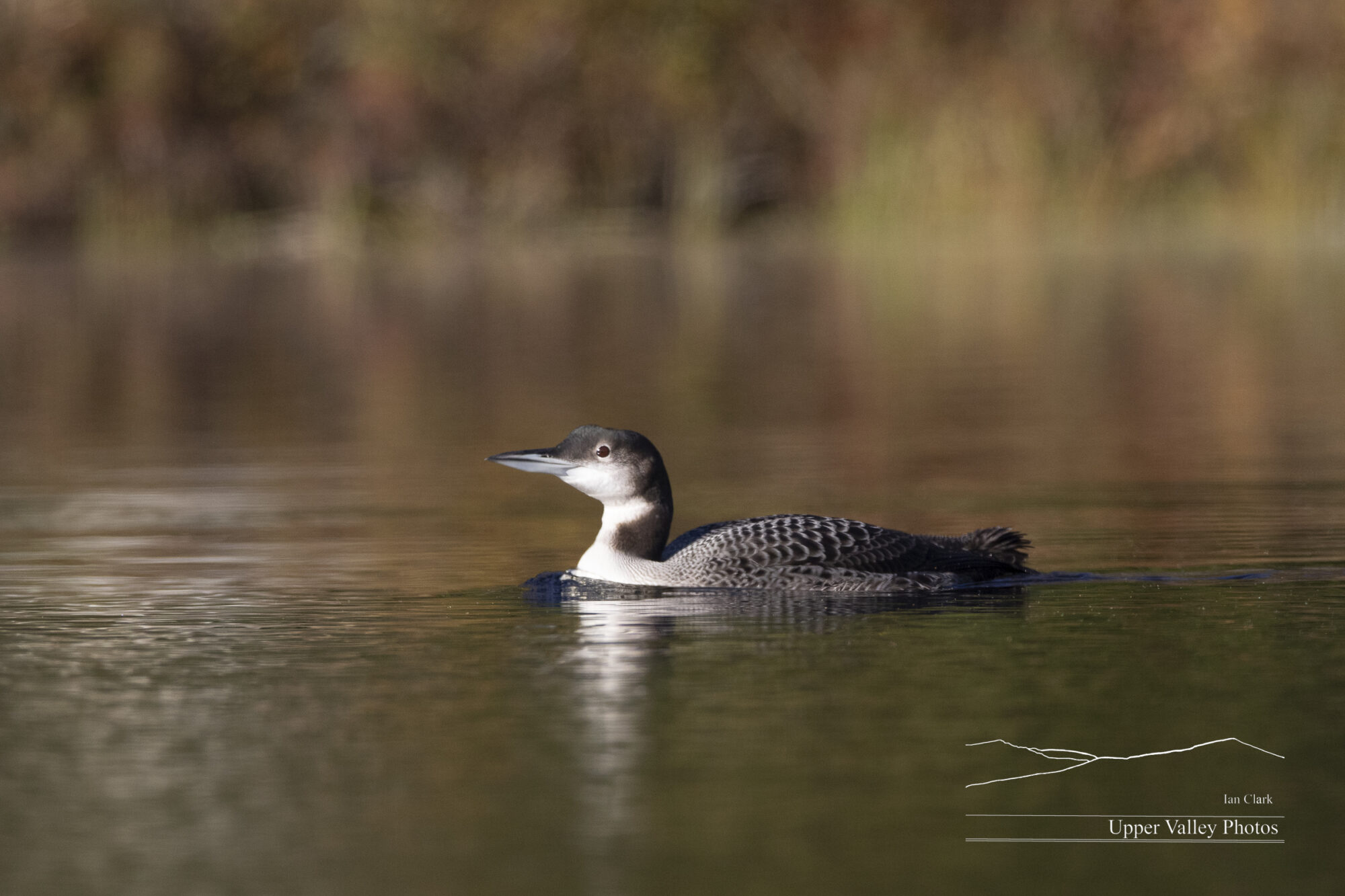
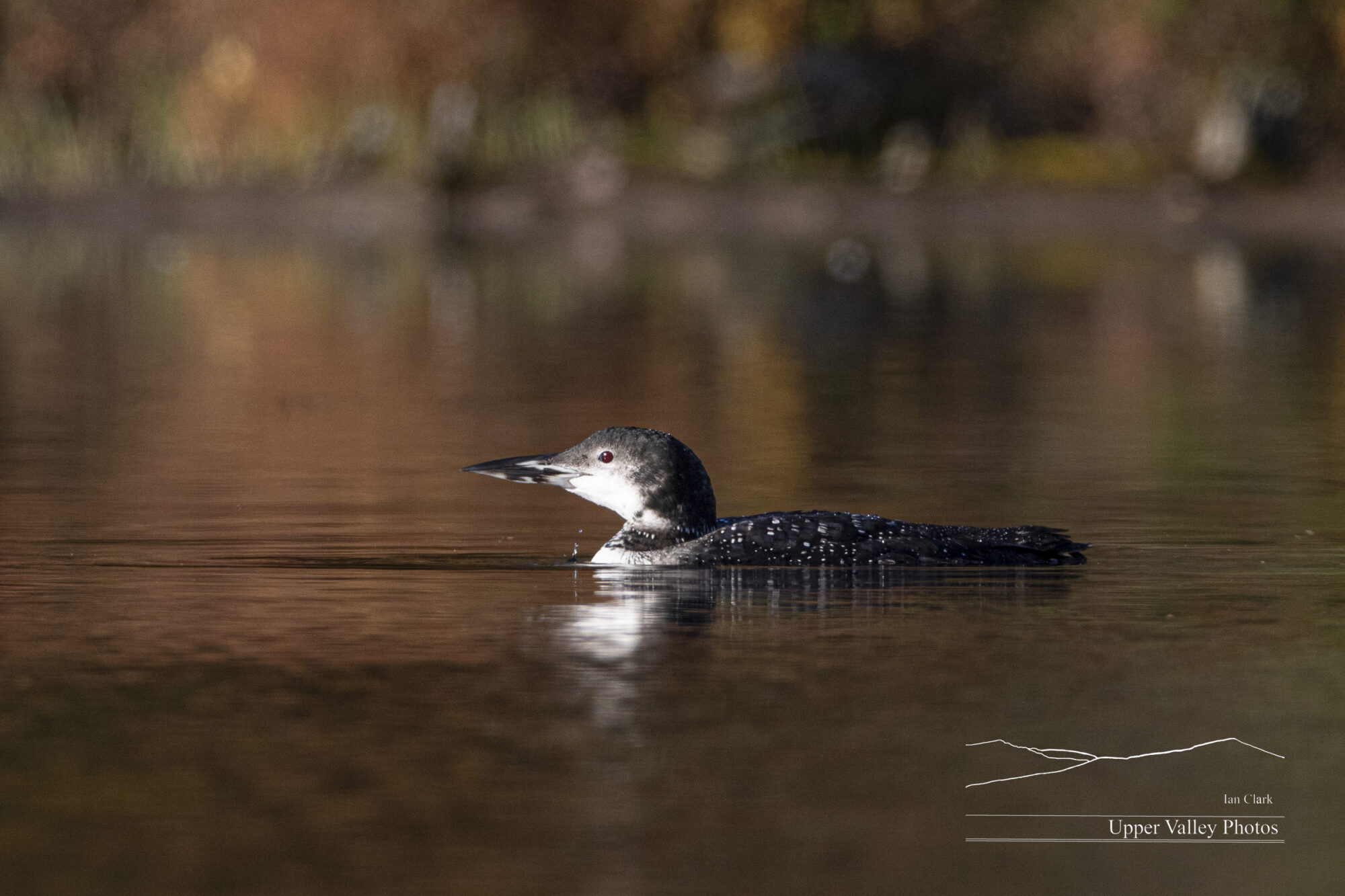
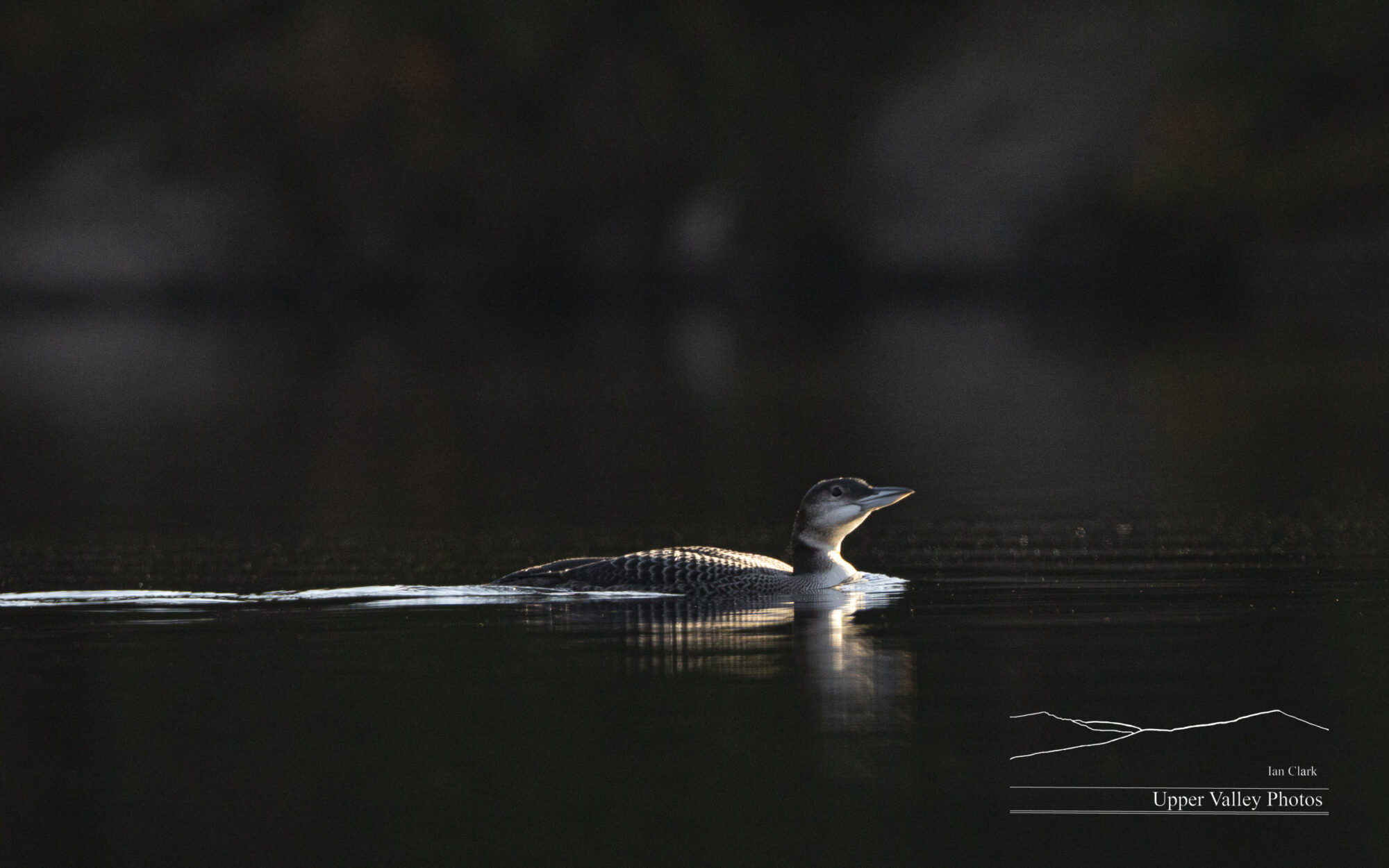


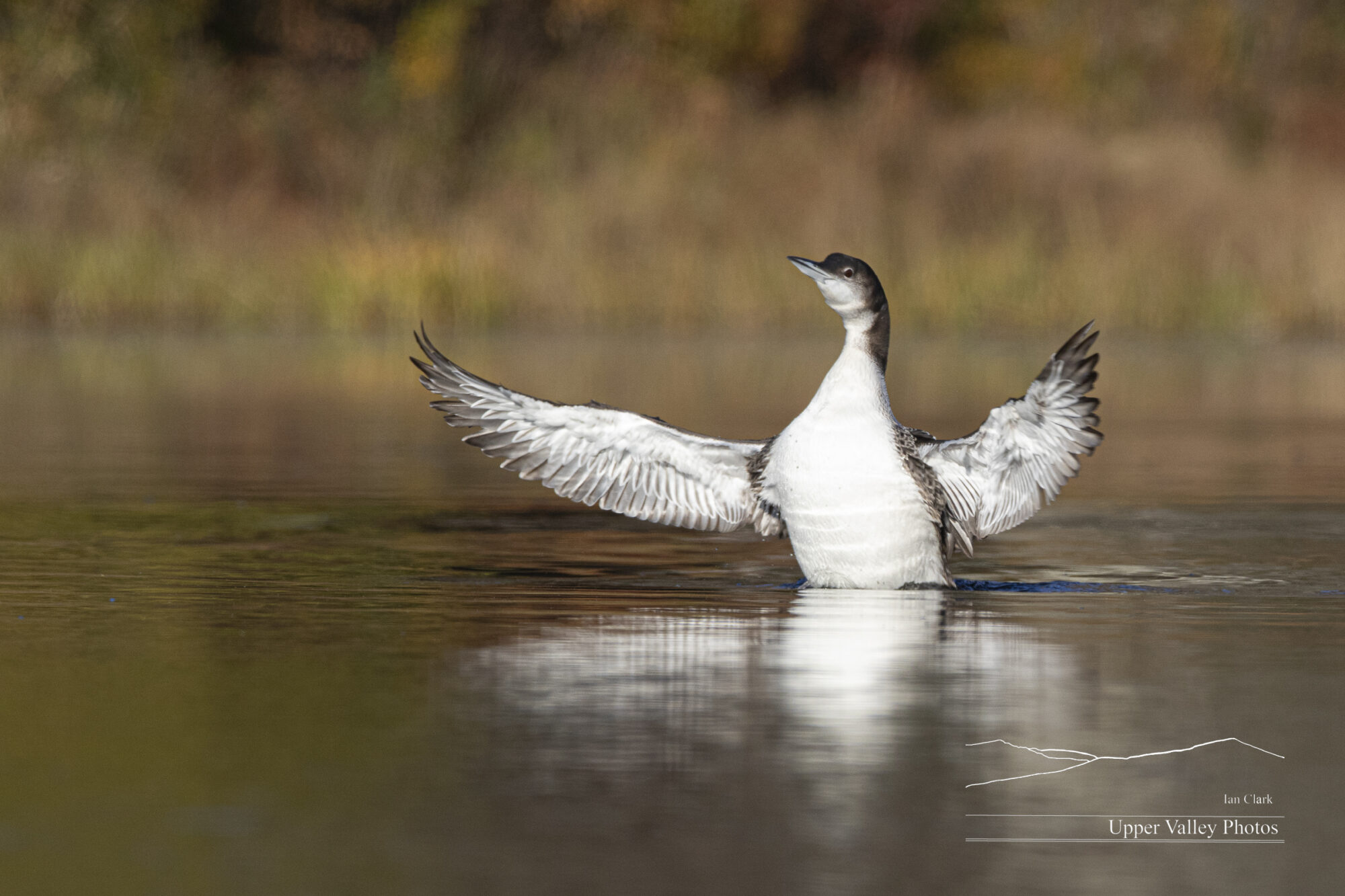
Checking in on the Loon Families
I had a chance to check in on two of our loon families this weekend. Let’s see what’s up.
The Paradise City Arts Festival in Northampton, MA, is this coming weekend, October 8, 9& 10. I’ll be there in booth 220 with lots of photos of loons, owls, fox kits and other critters.
Friday morning, after scraping ice off the windshield, I headed east to check on the Eastons. This is the family that last I saw them, the chicks were practicing takeoffs, but were not yet airborne. This pond is almost 2,000 feet above sea level. The loons usually depart from this pond much earlier than the nearby ponds at lower elevations. This year, I wondered if fish were scarce; the parents seemed to feed the chicks more crayfish than other loons and in the last couple visits, the parents delivered only a couple fish of any size. Anecdotal evidence from fisherpeople also suggests that fish are scarce, but when has anyone fishing complained of there being too many fish?
One loon flew over the pond about half an hour before sunup, and that was the only sighting for the day. The loons have moved on. They’re likely to have moved to a lower pond where they’re likely to stay until the ice starts forming. Once the ice appears, they’ll head to the coast.
Our heron was around to give me the consolation prize.

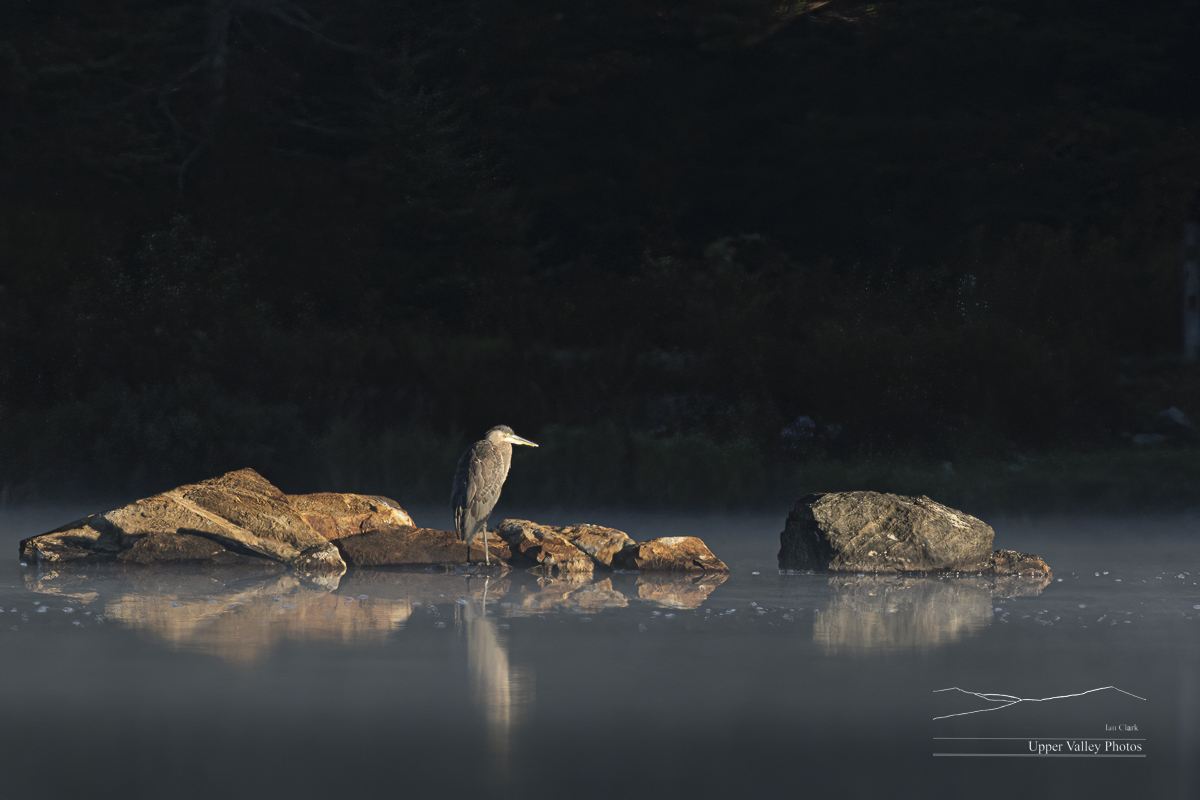
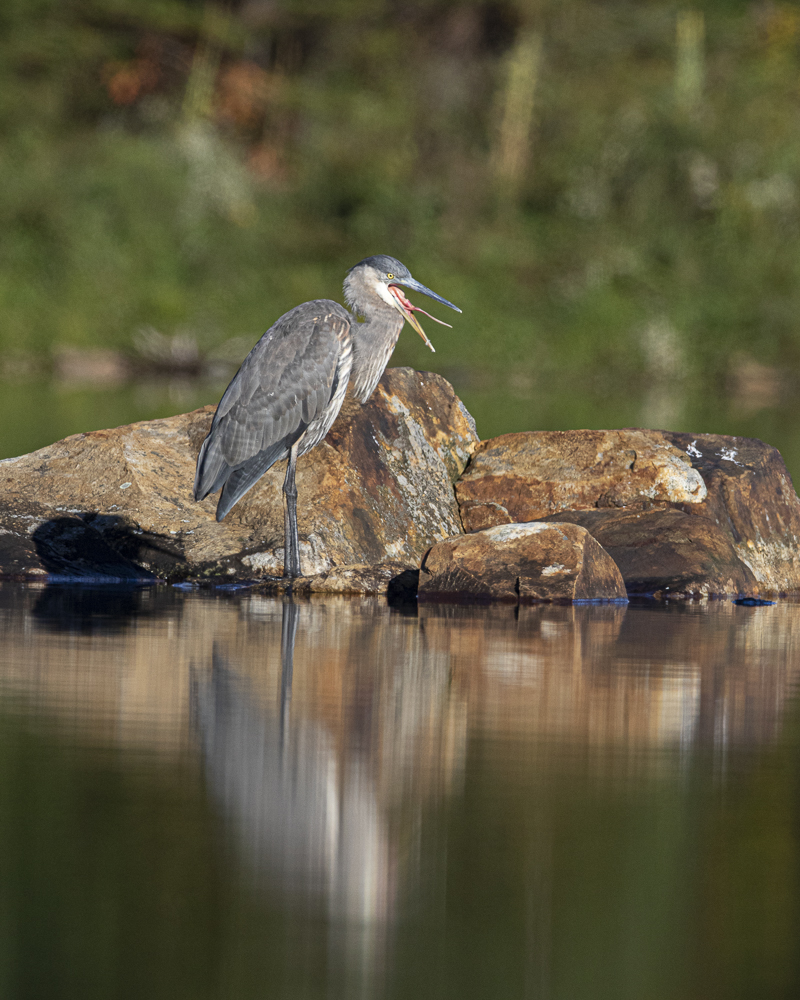

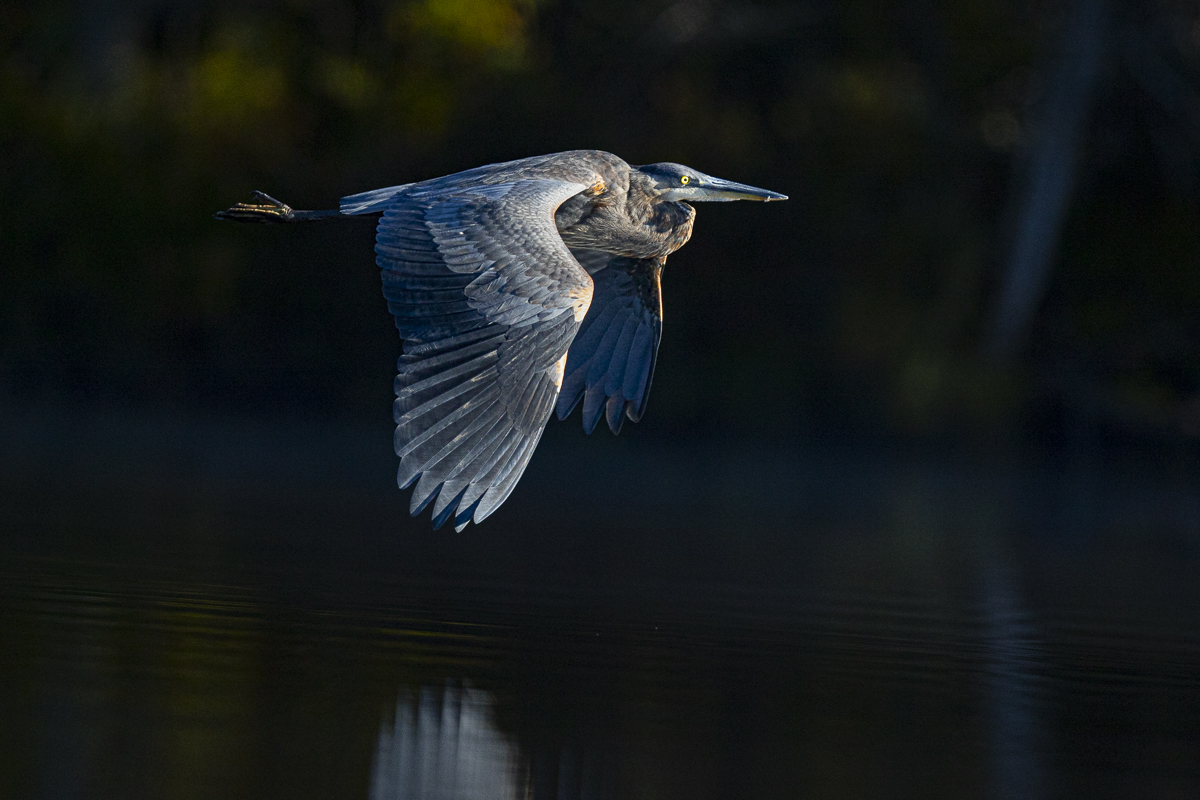
This morning, I visited the loons to the west, the Westons. Their pond is much lower, about 870′ ASL. And, much warmer, at 47 when I arrived. There was one adult and the surviving chick on the pond. The chick is 13 weeks old this weekend.
One of the residents on the pond tells me that the chick has had a busy week with an juvenile eagle repeatedly harassing him. No sign of the eagle this morning, but I wasn’t out long.

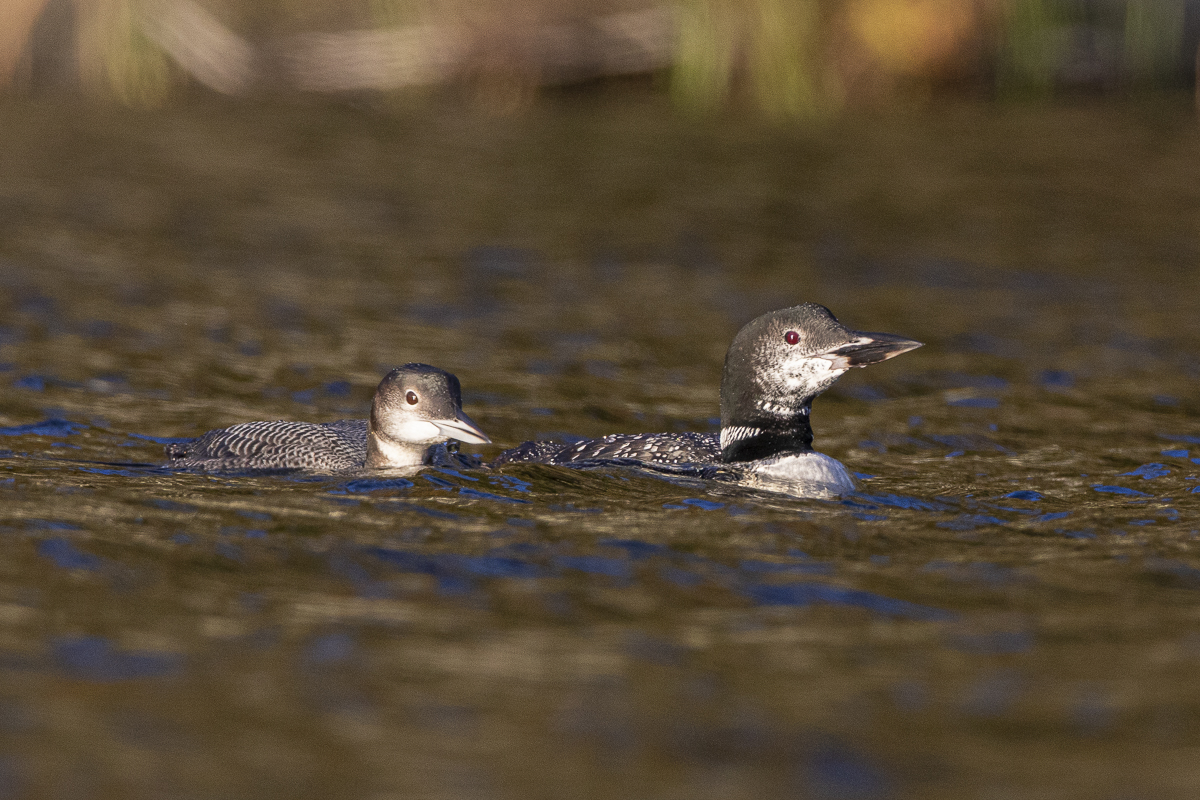

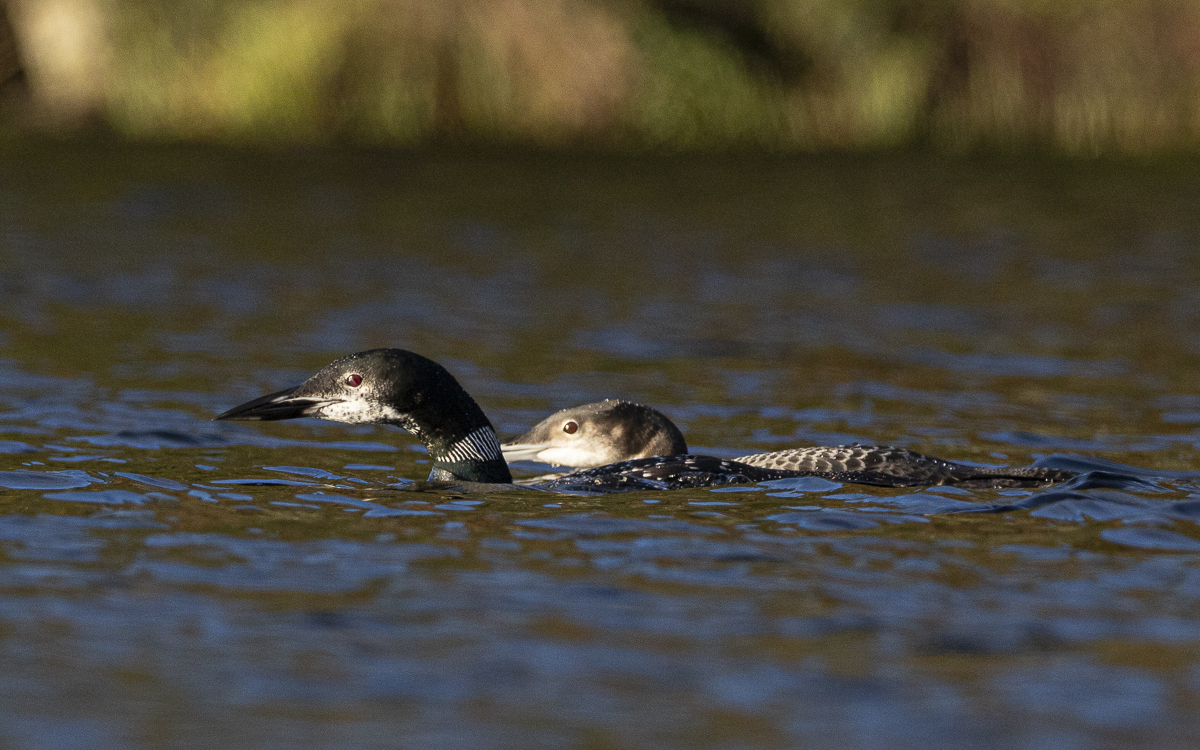
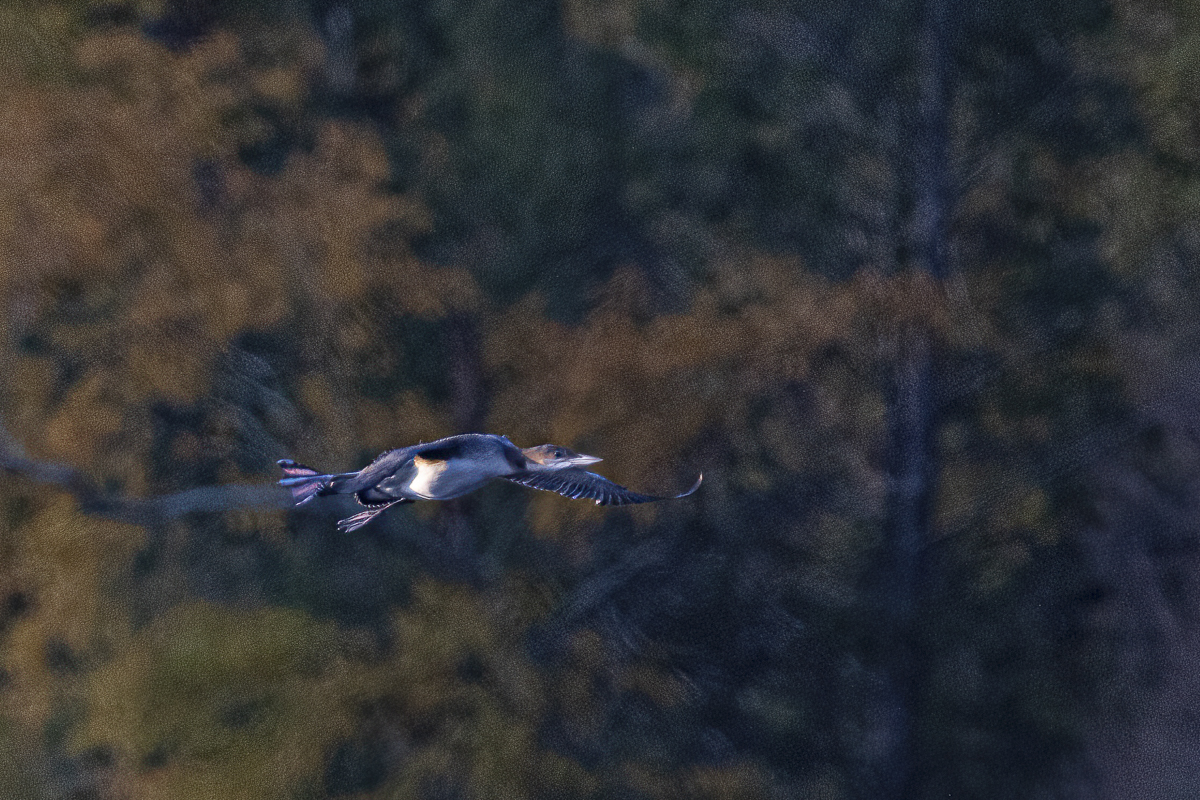
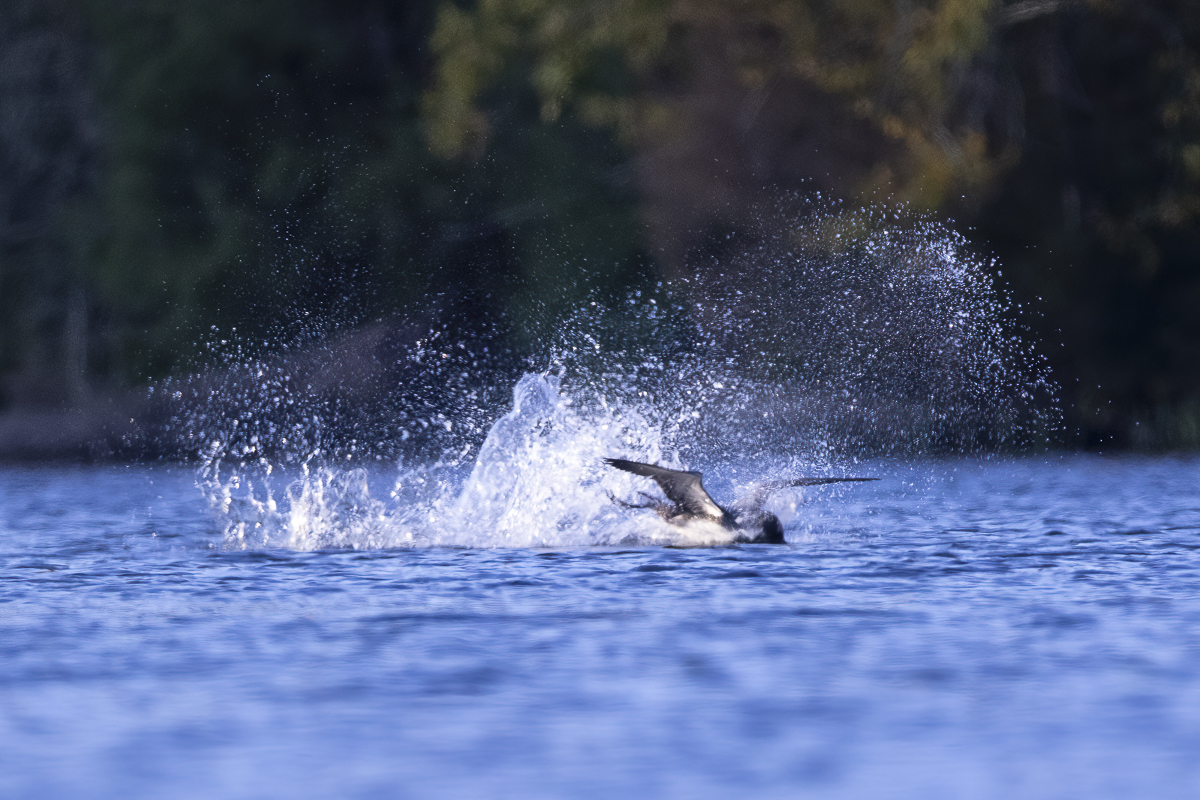
Anyone have a bear coming after the last of the apples?
